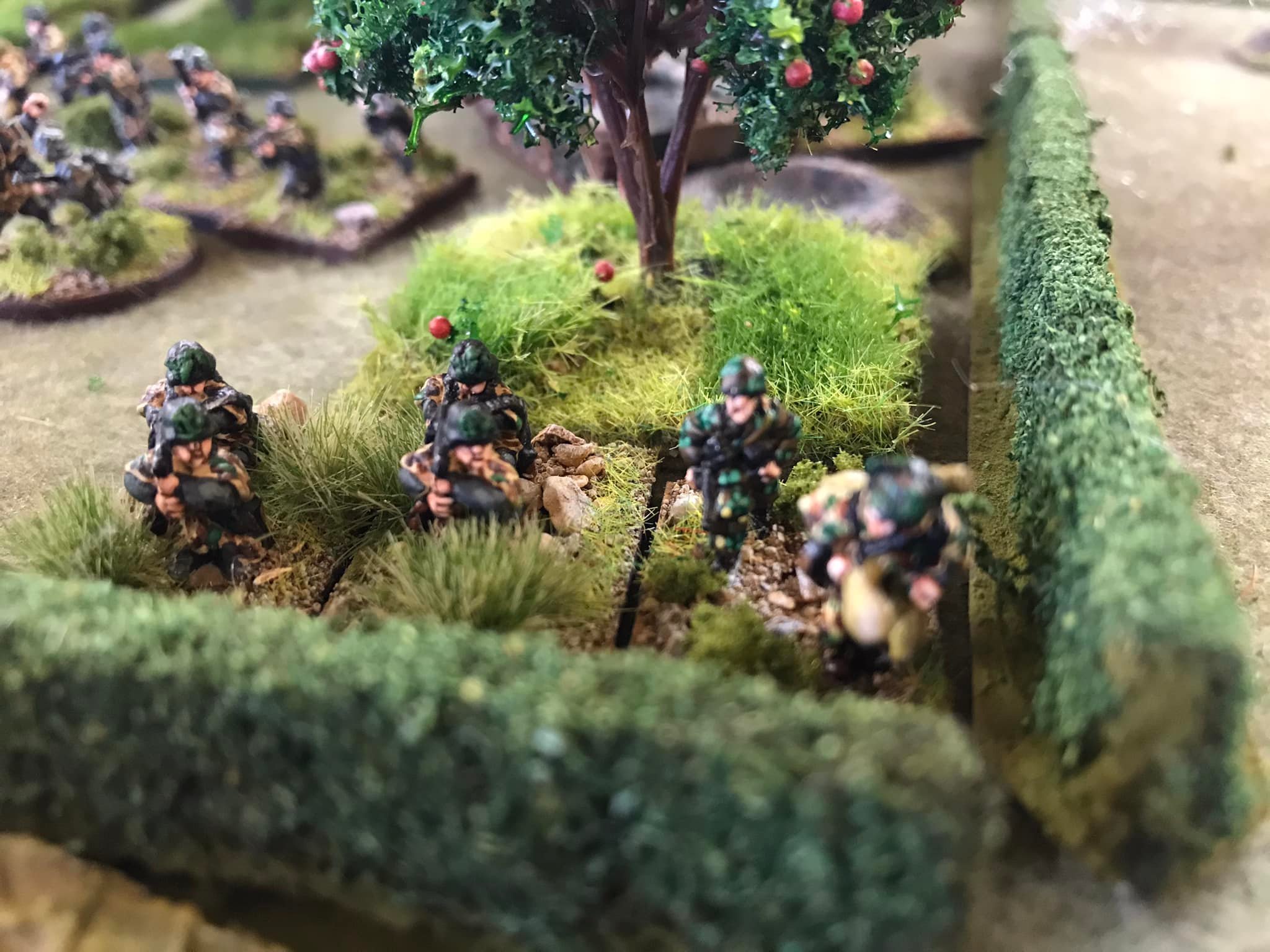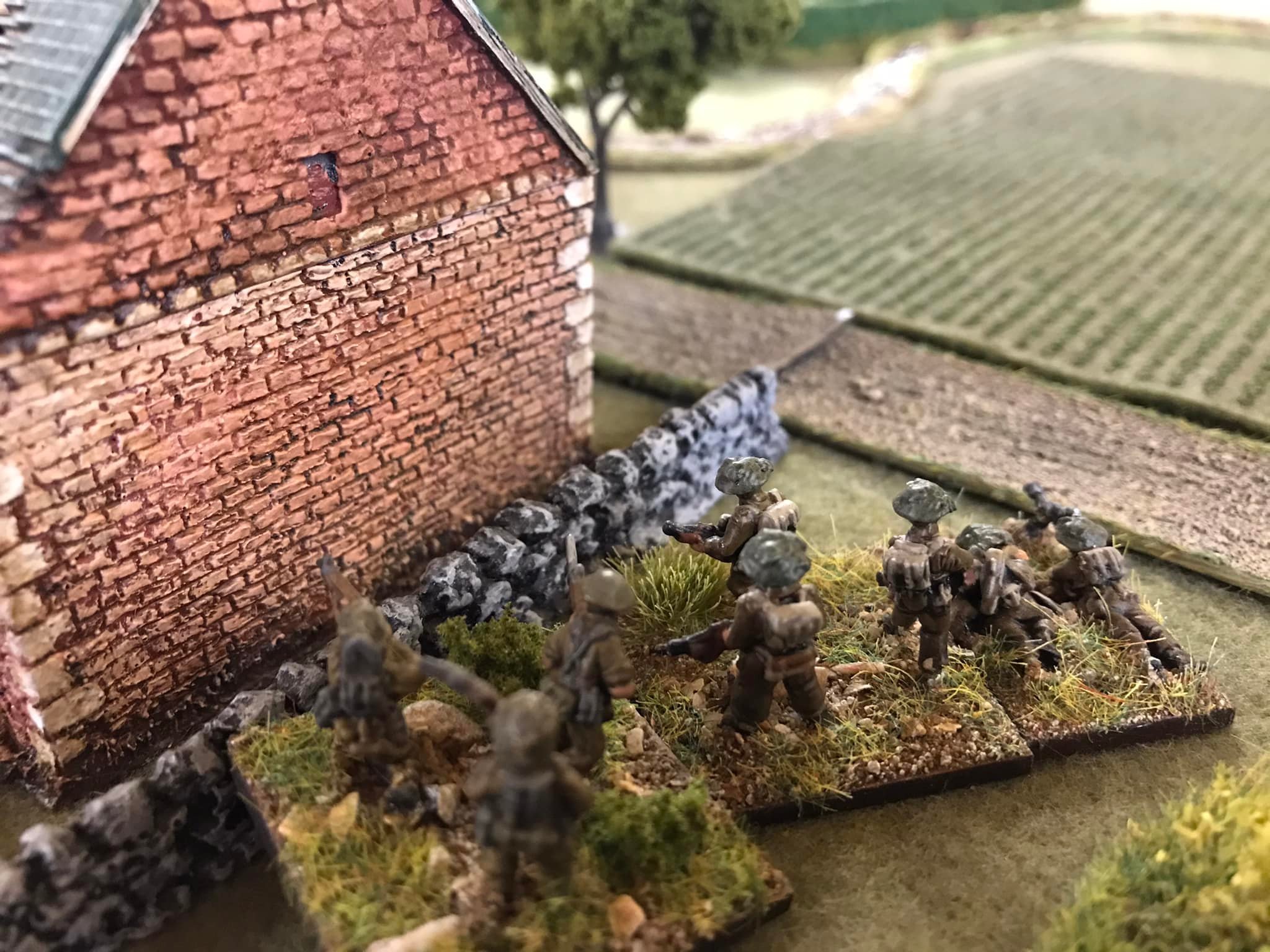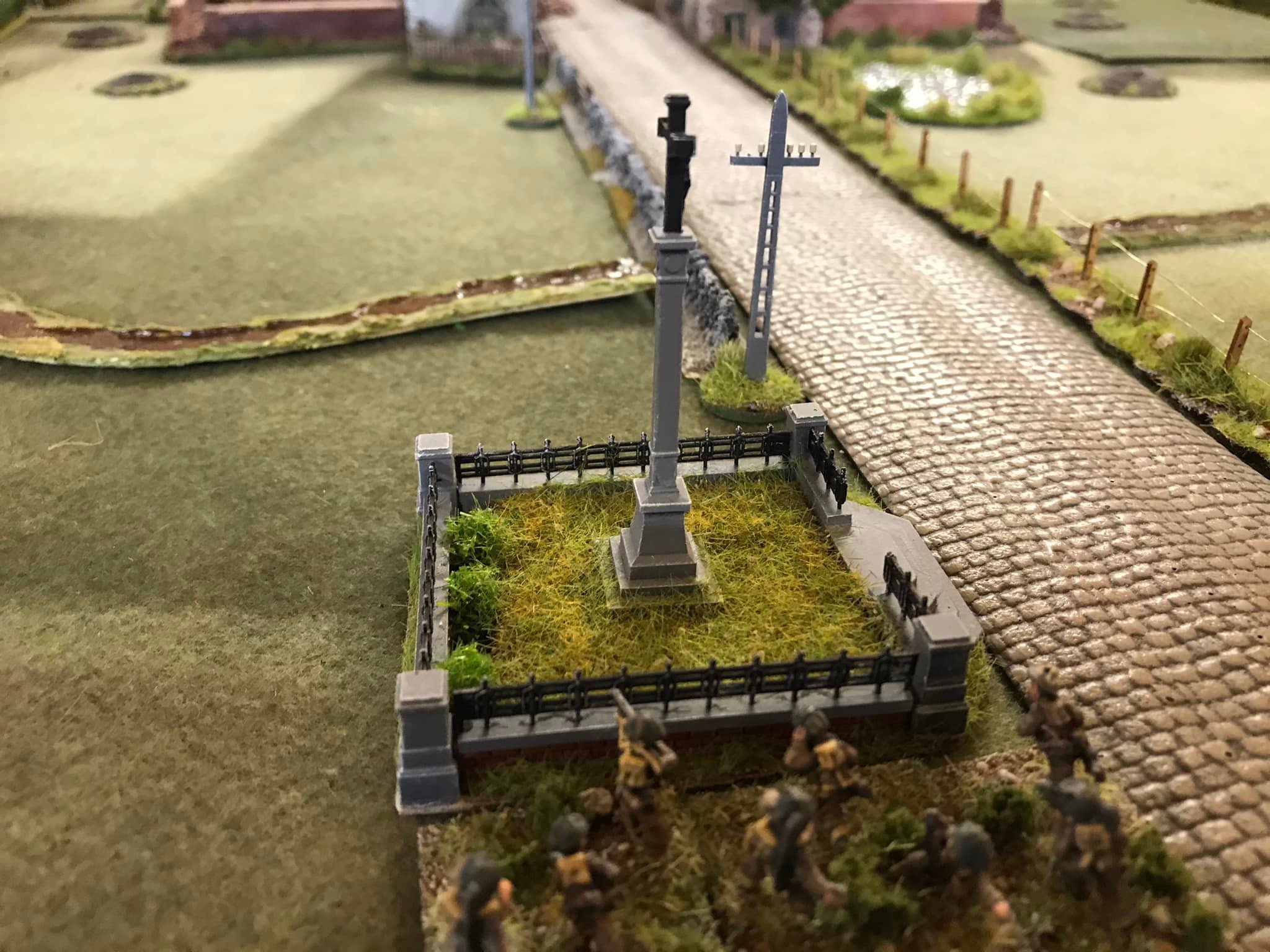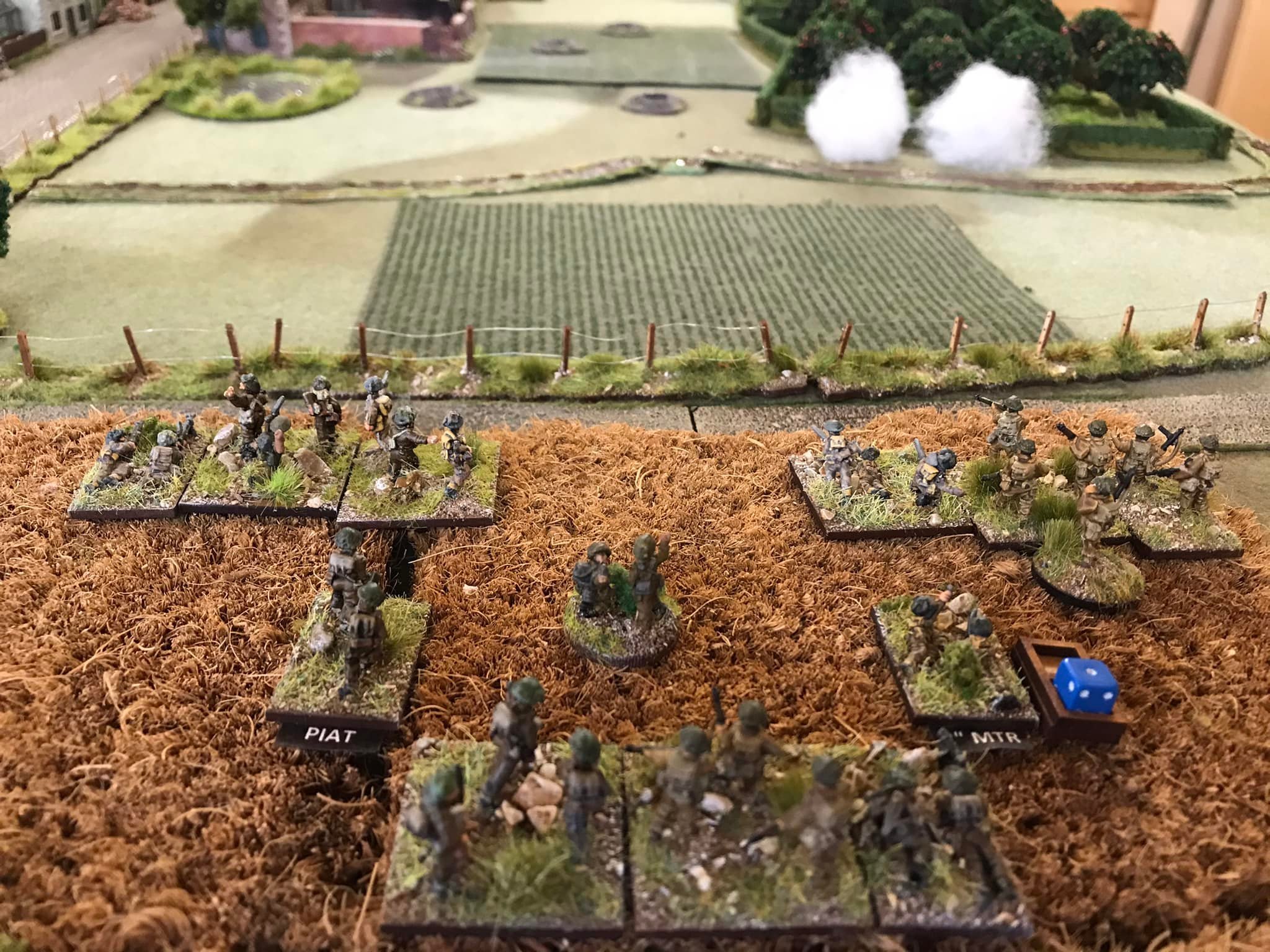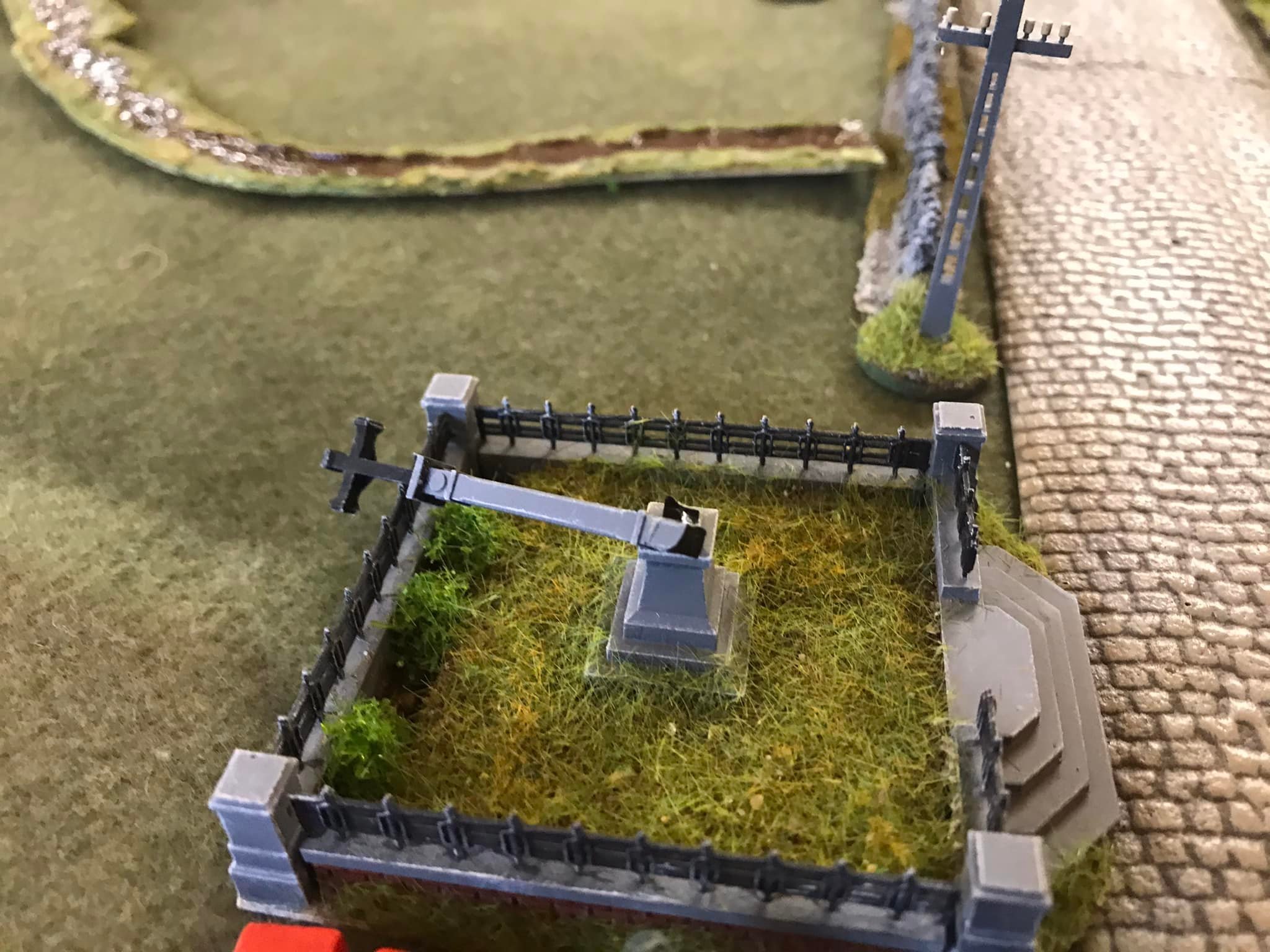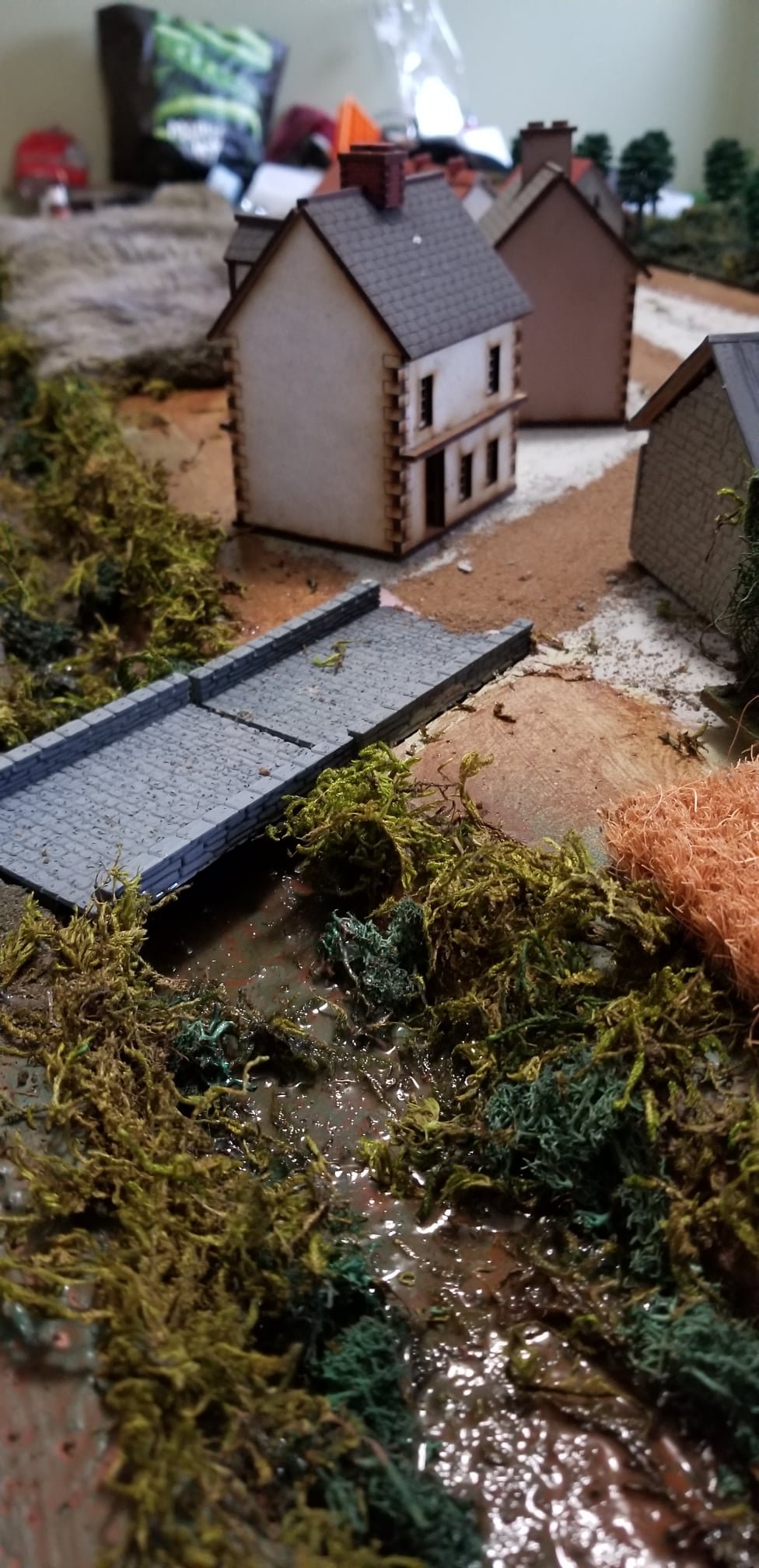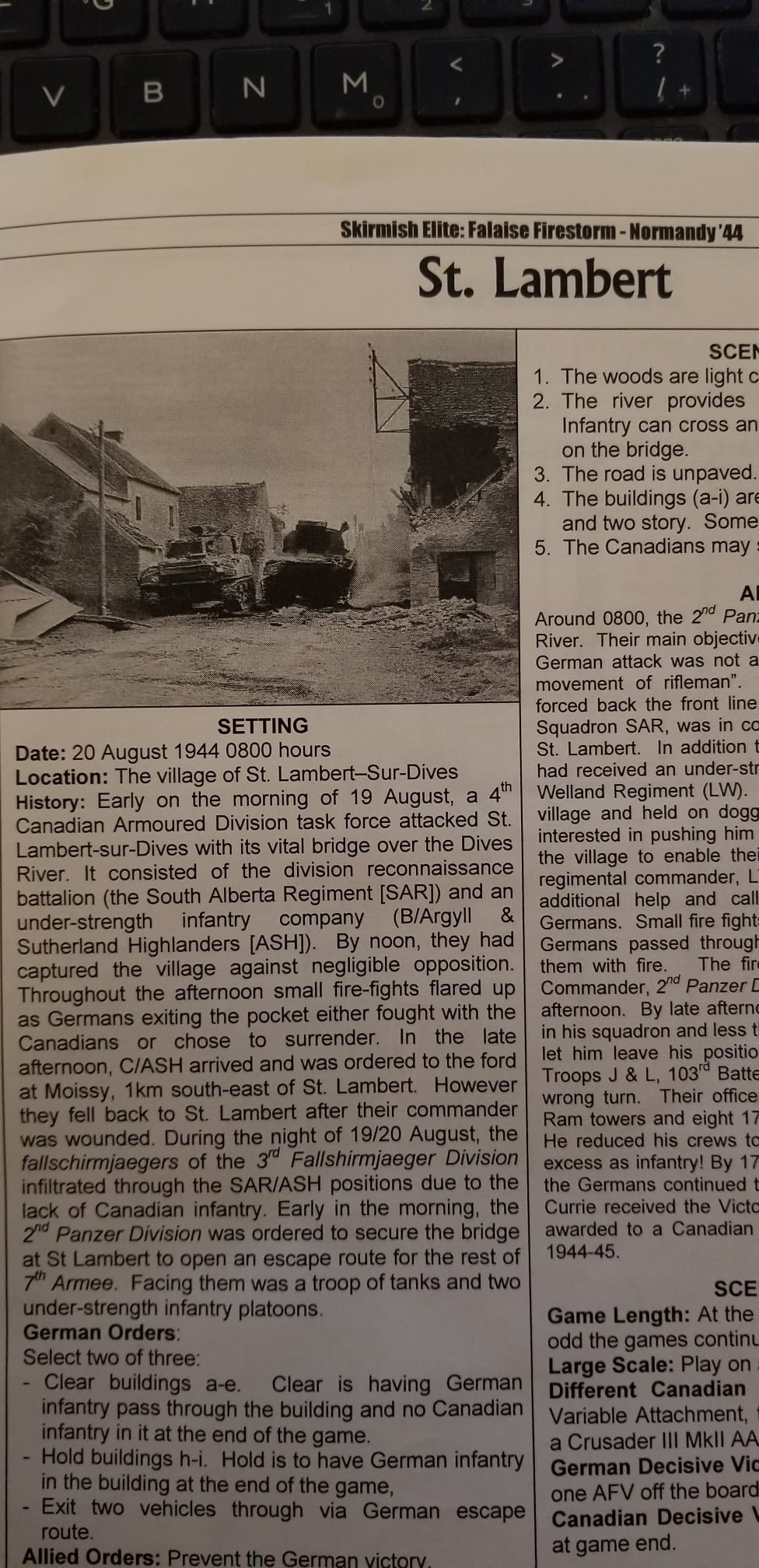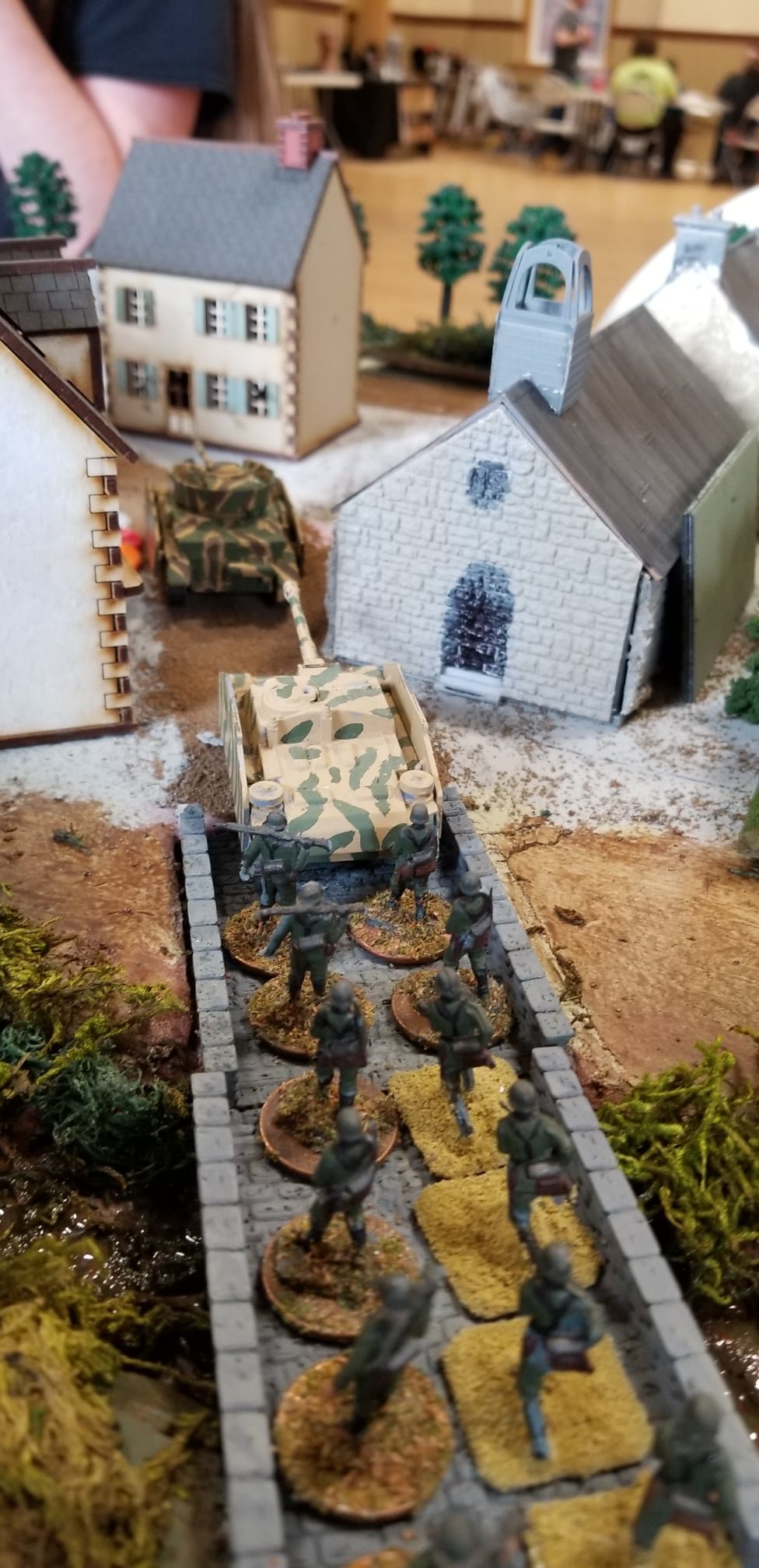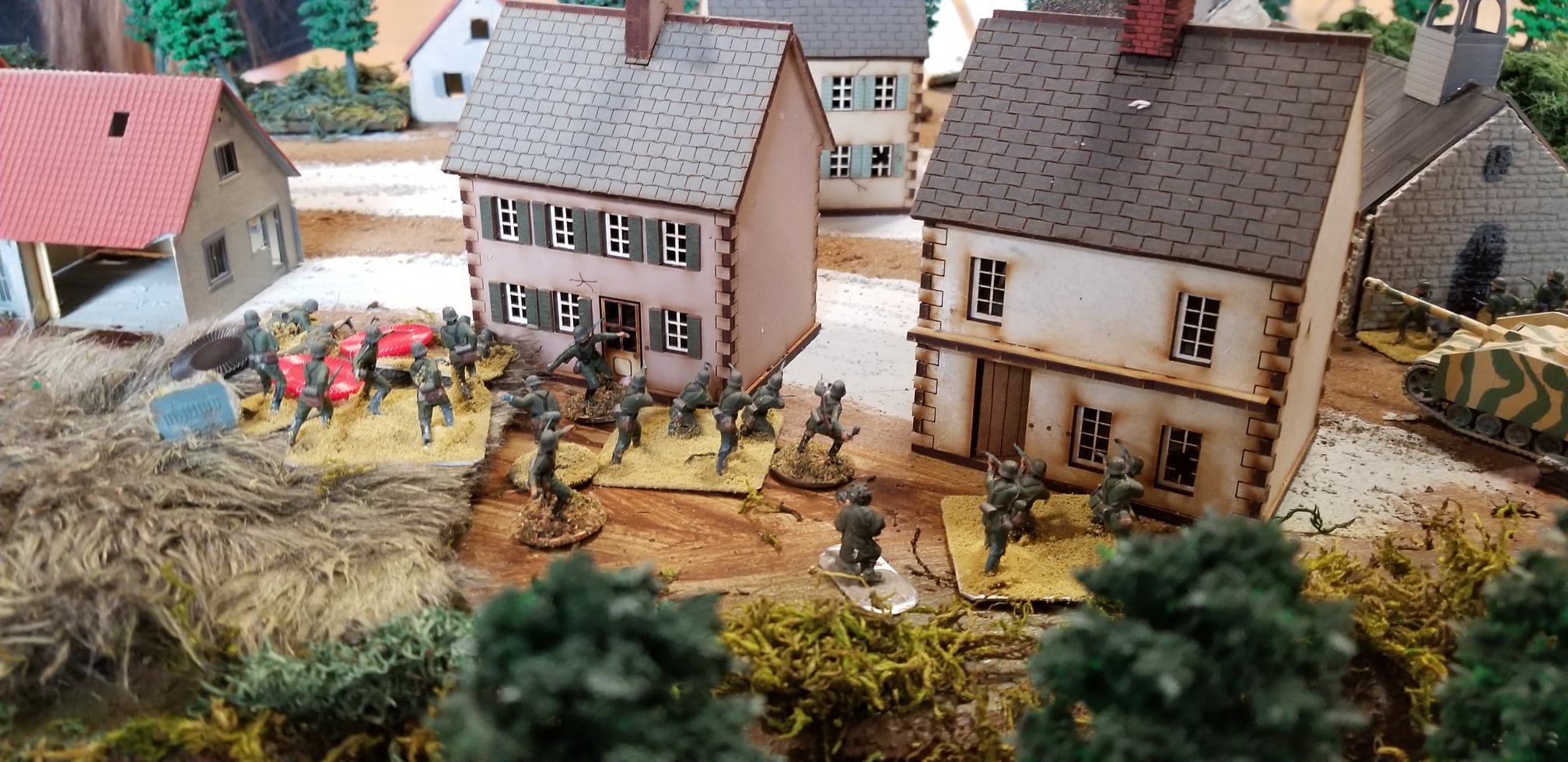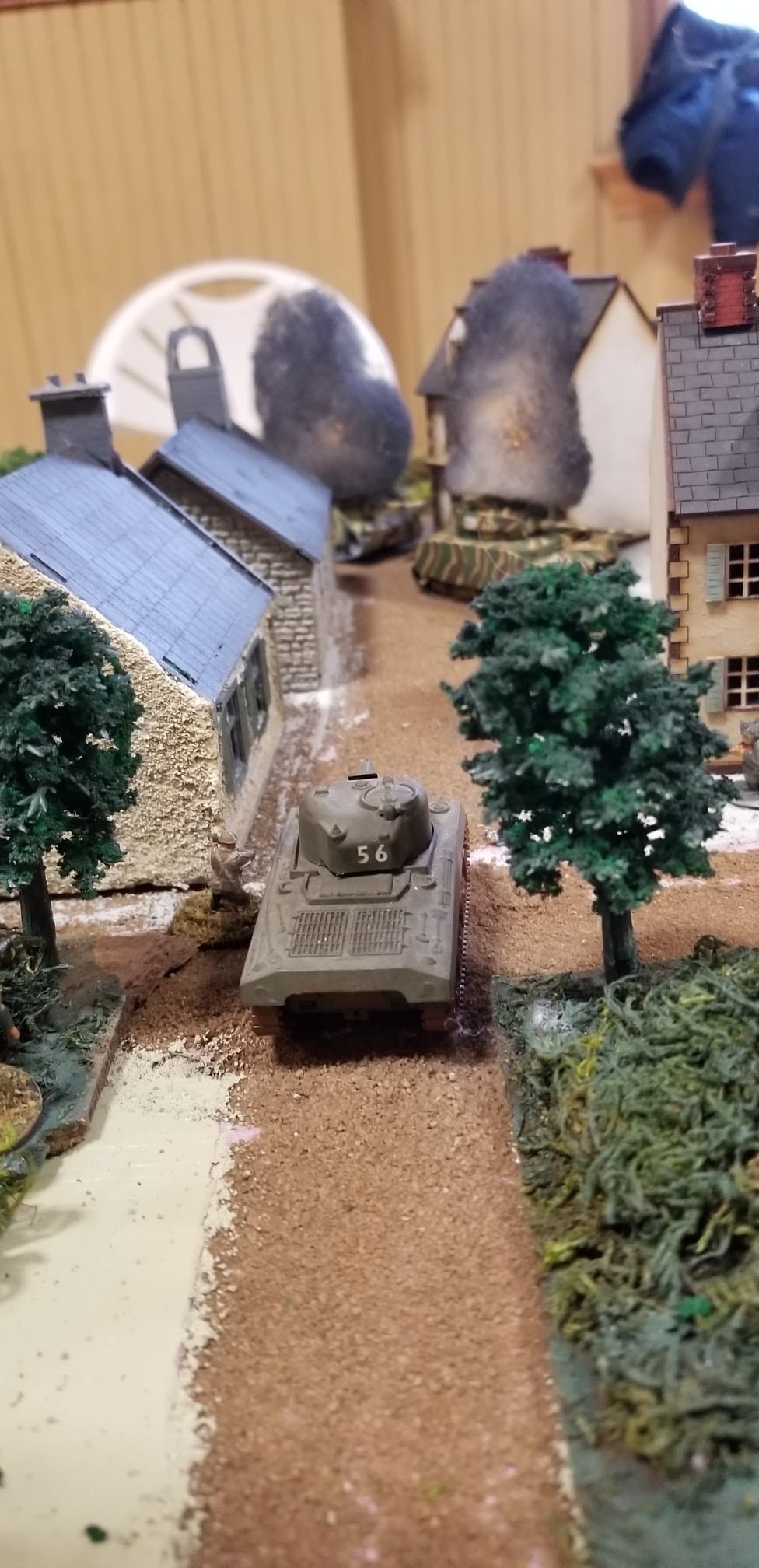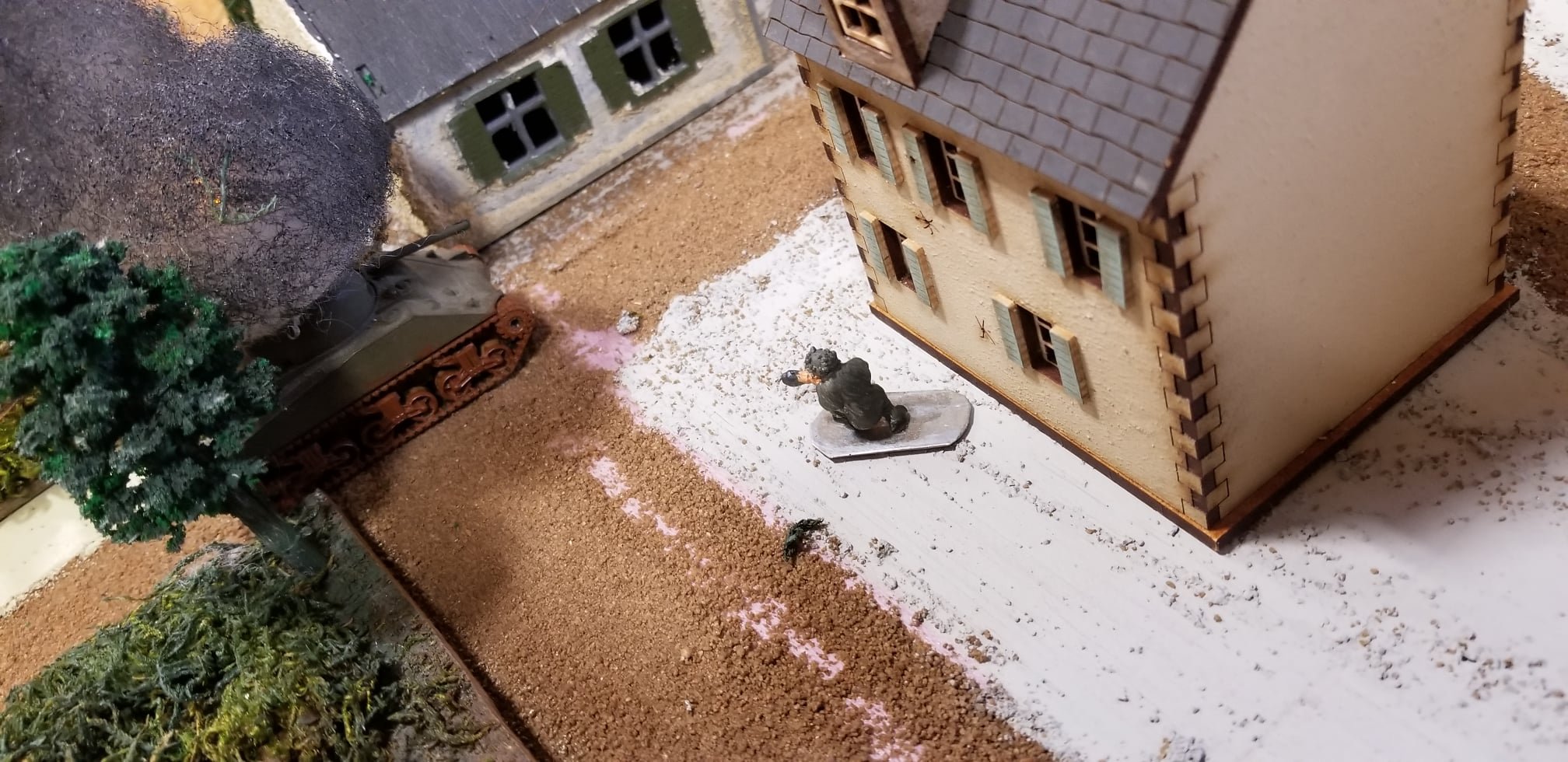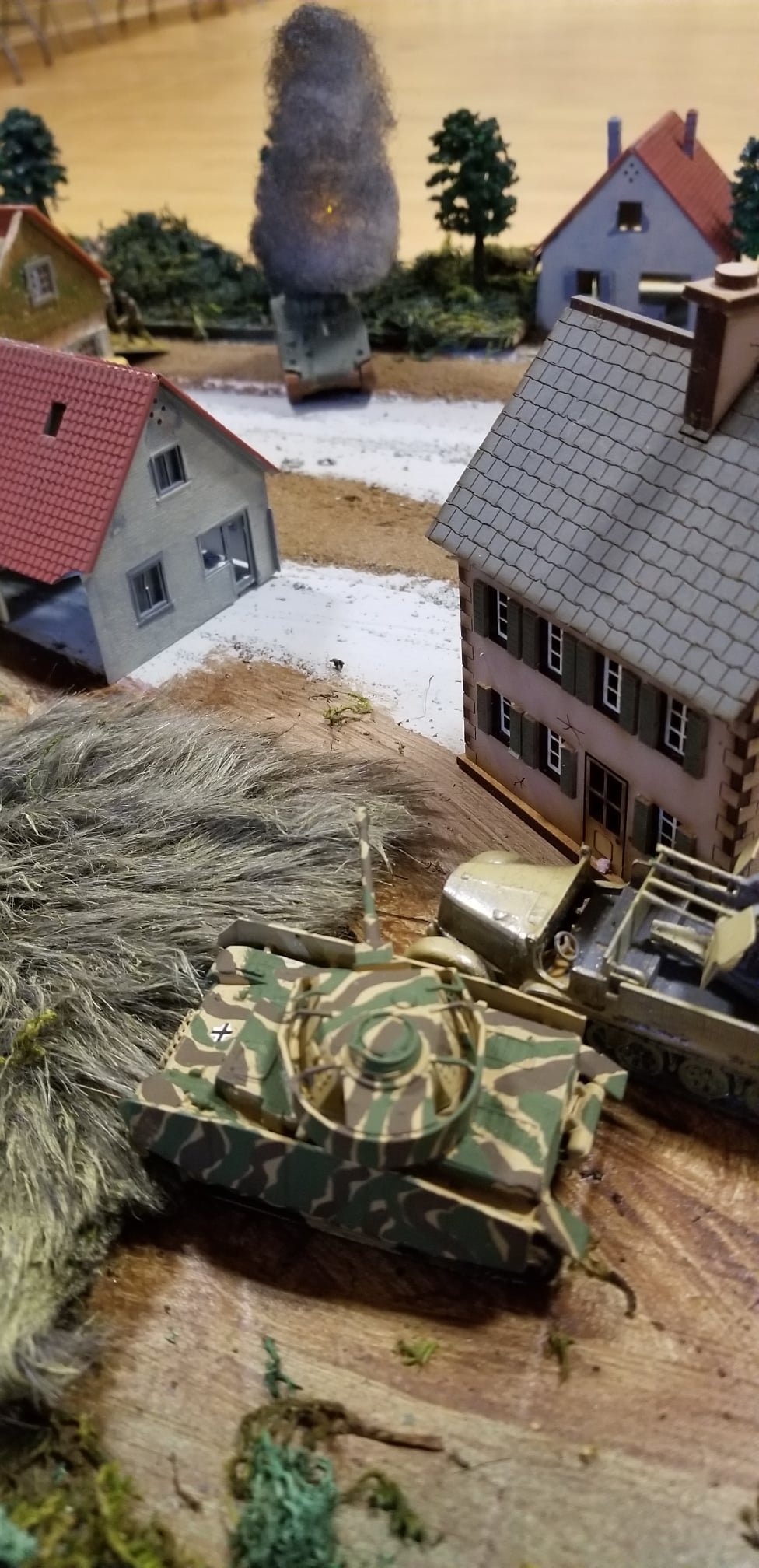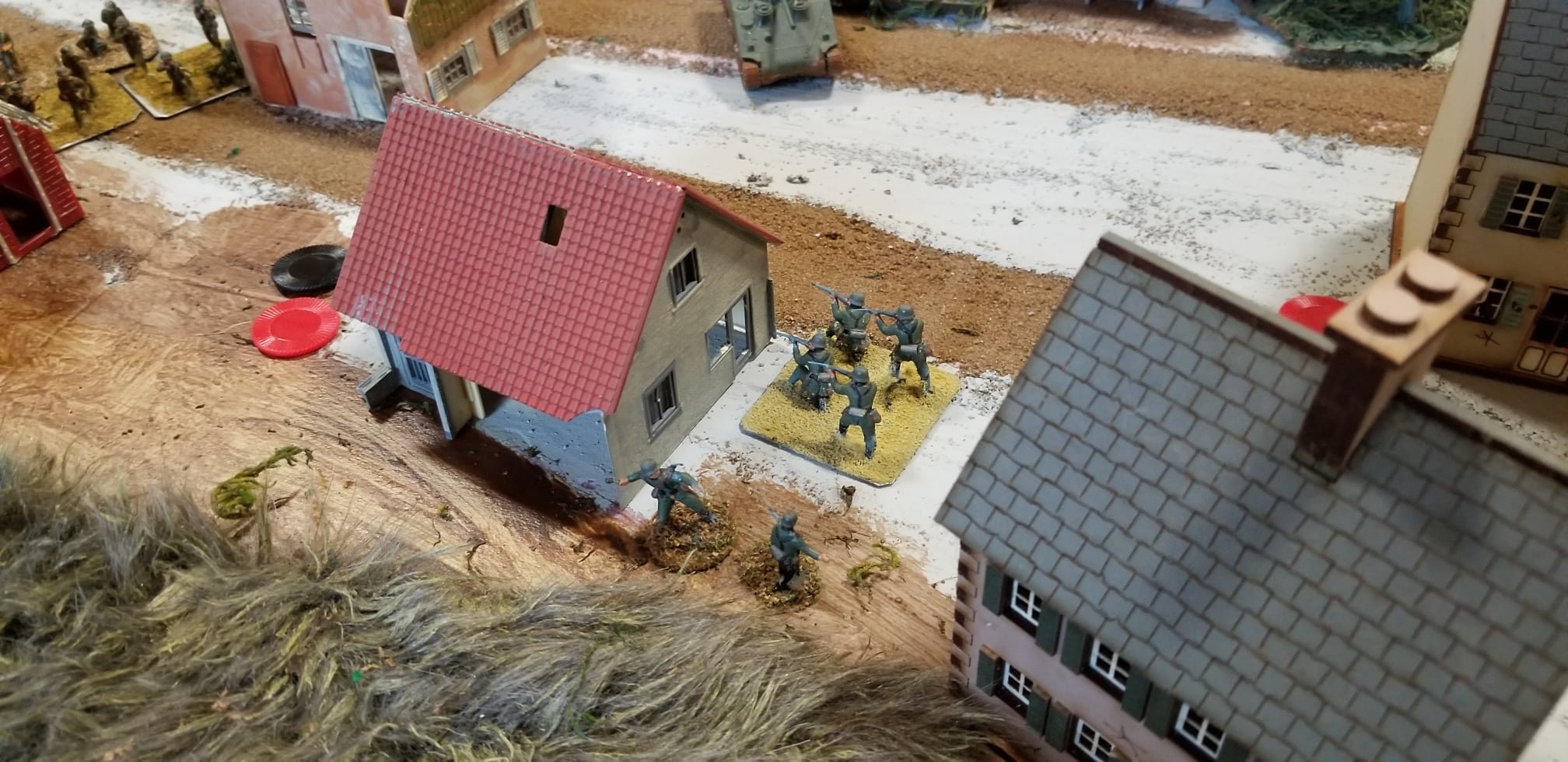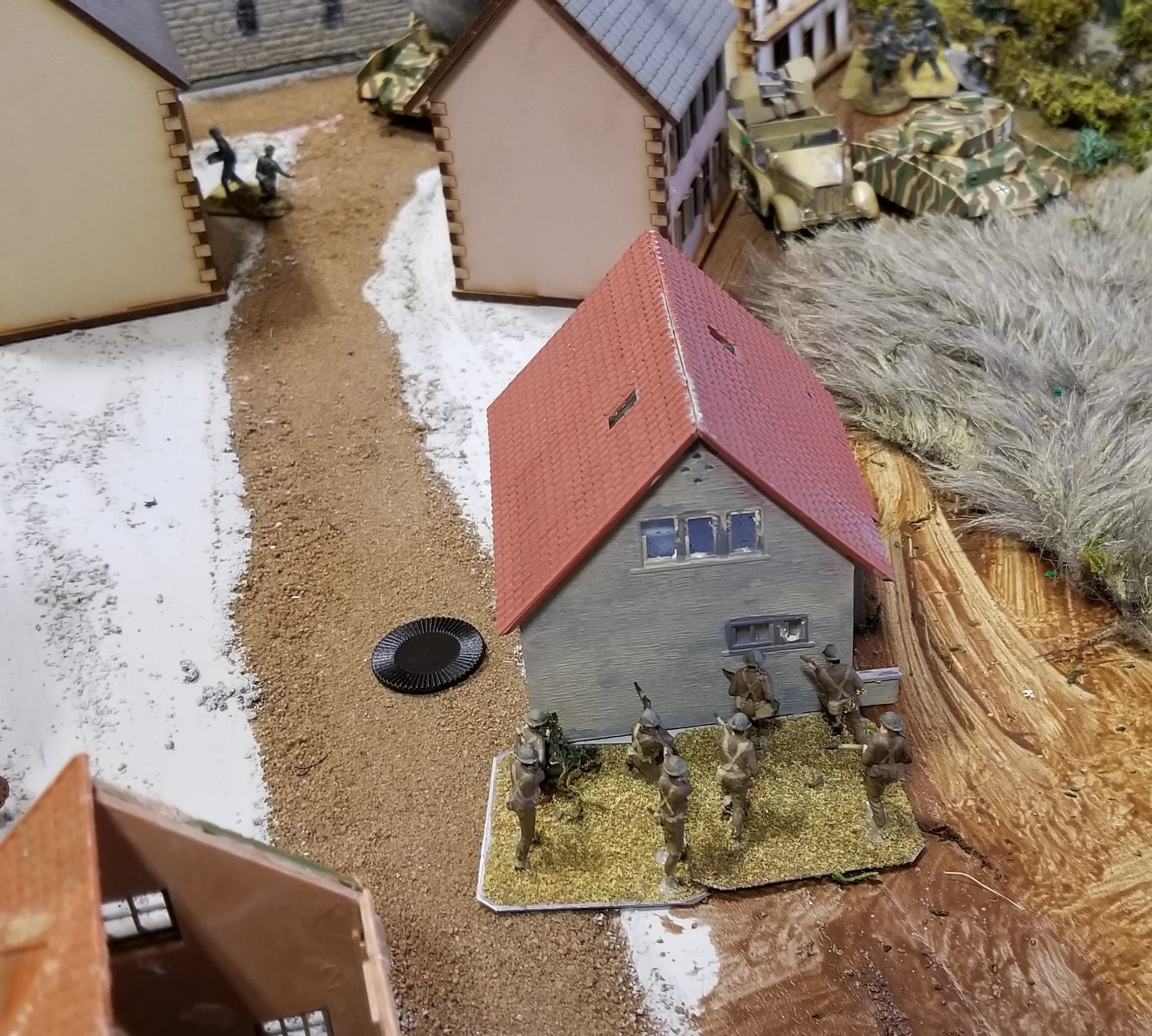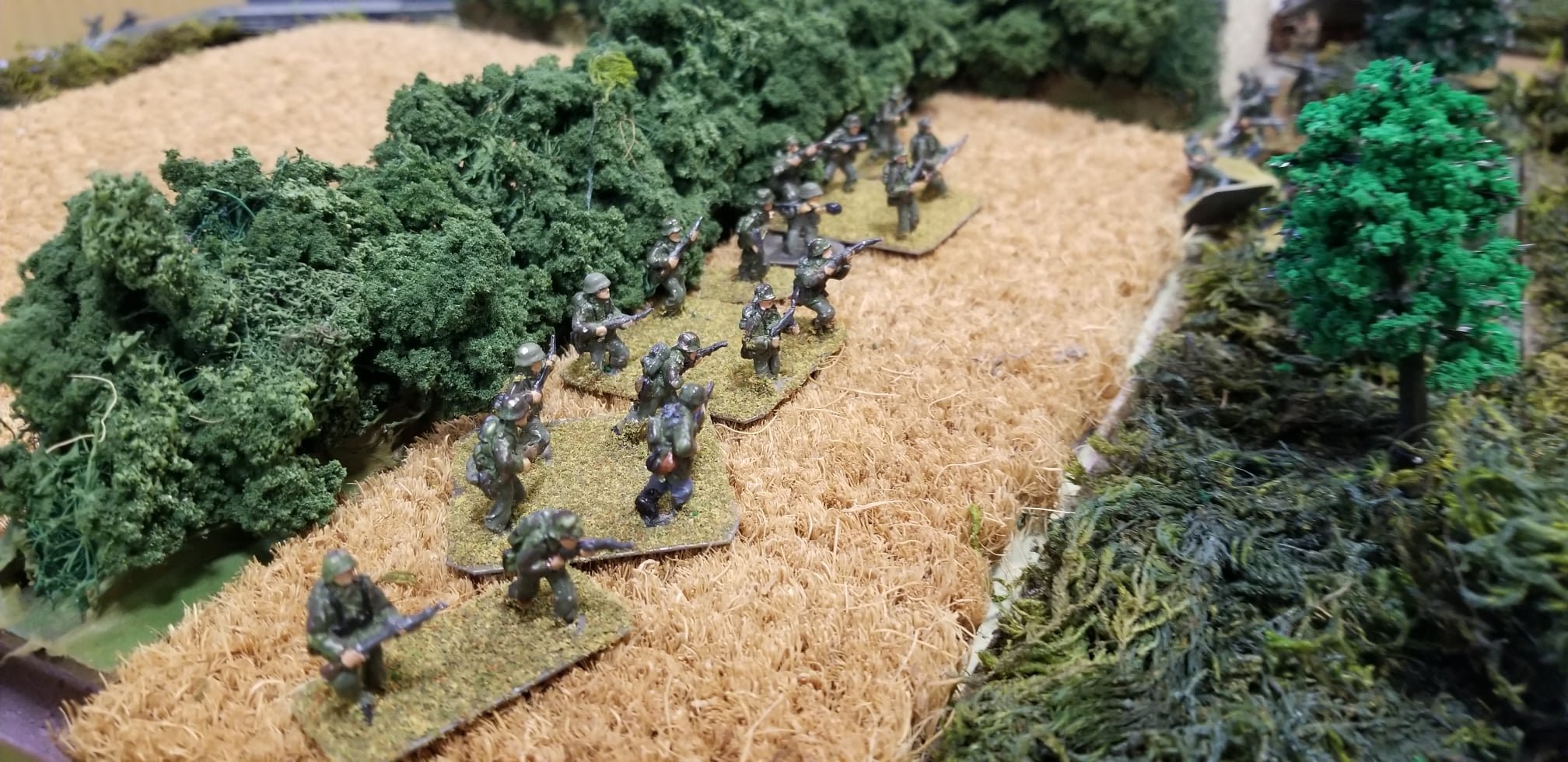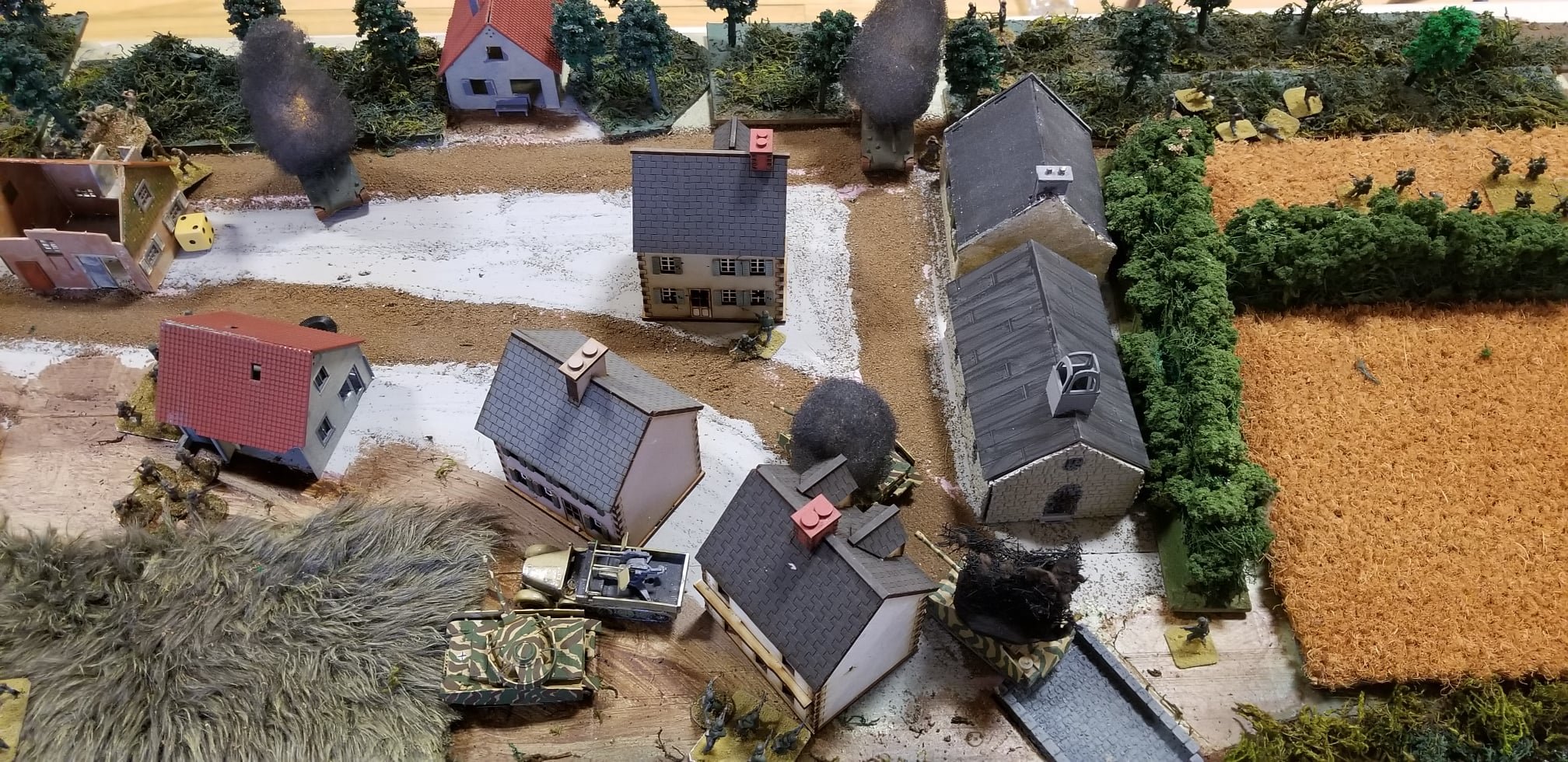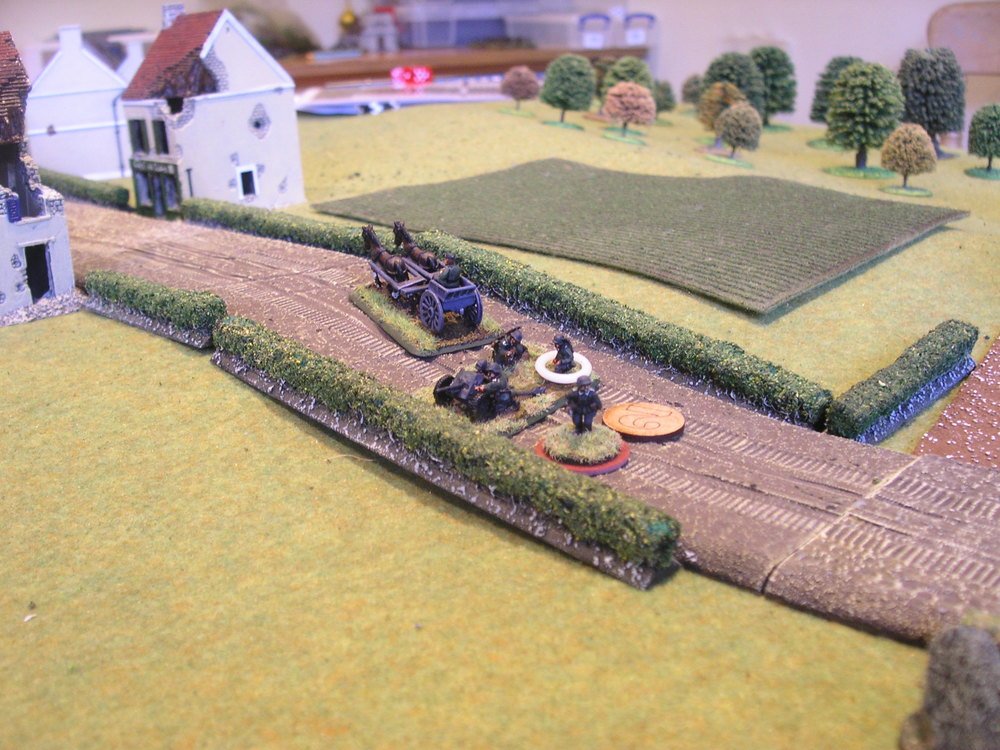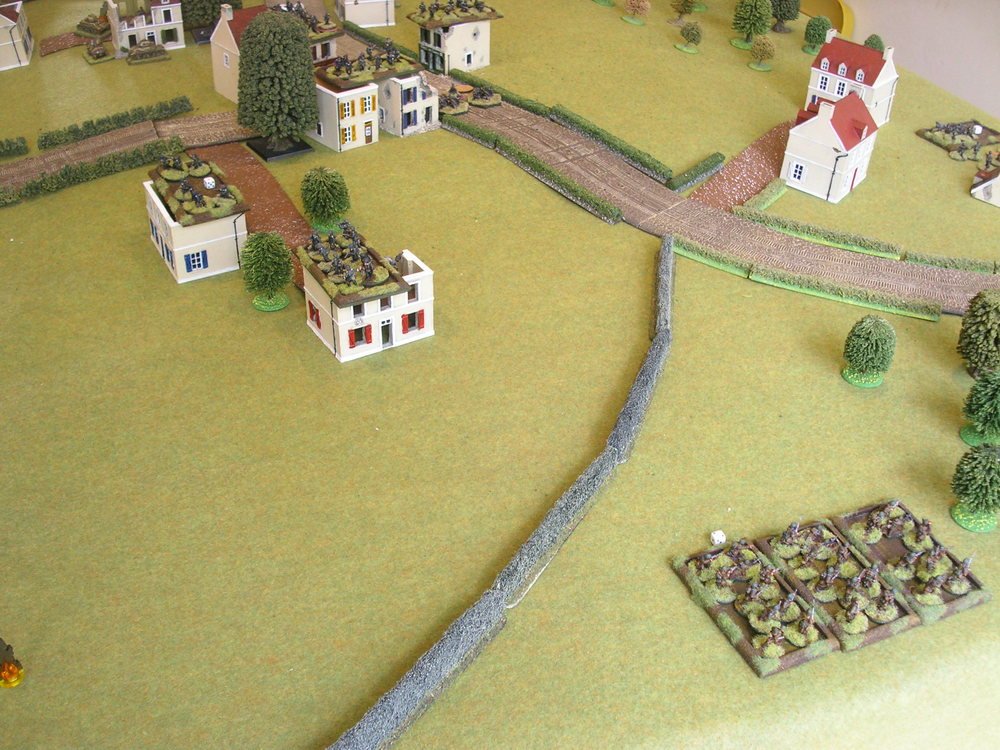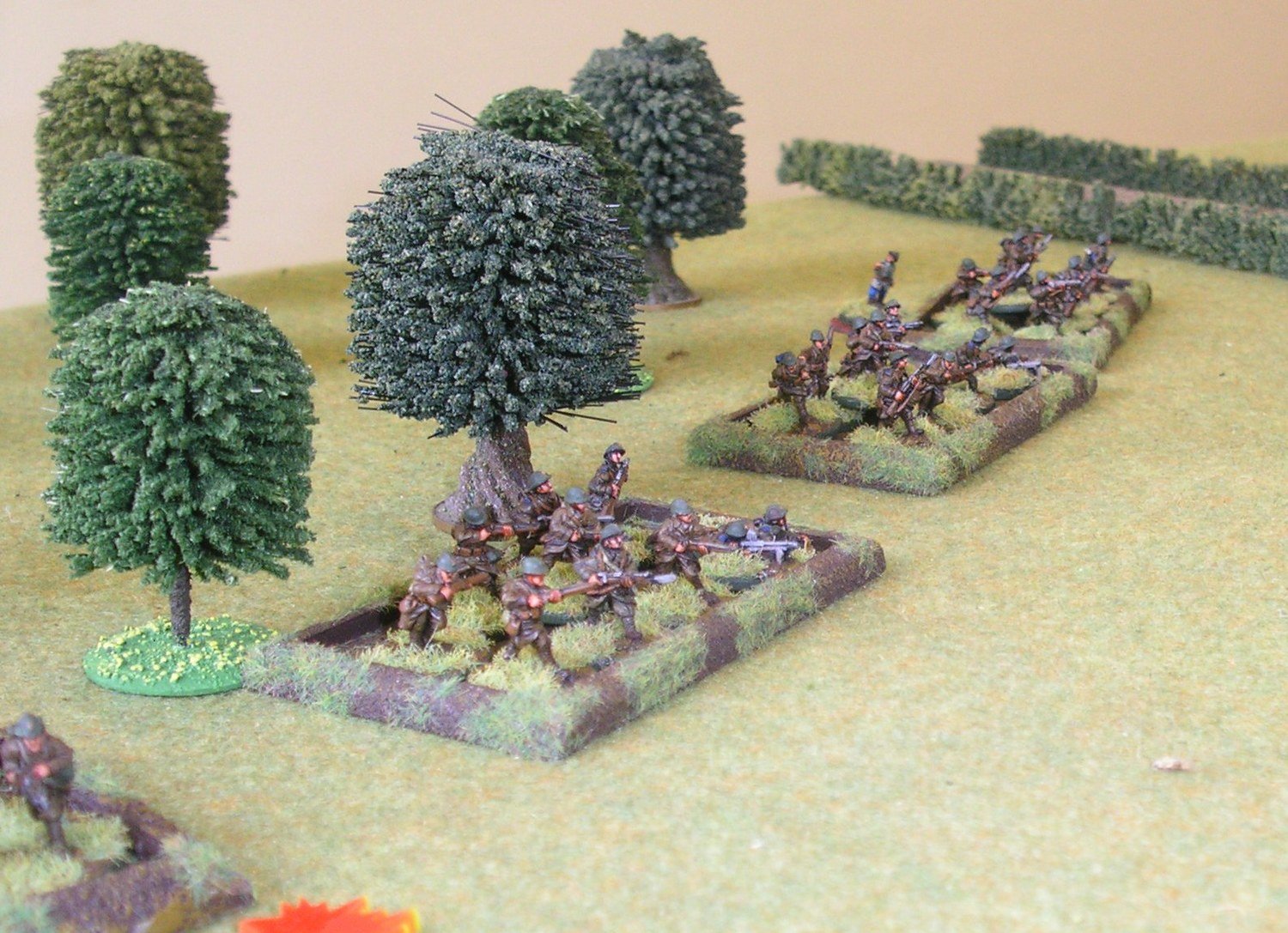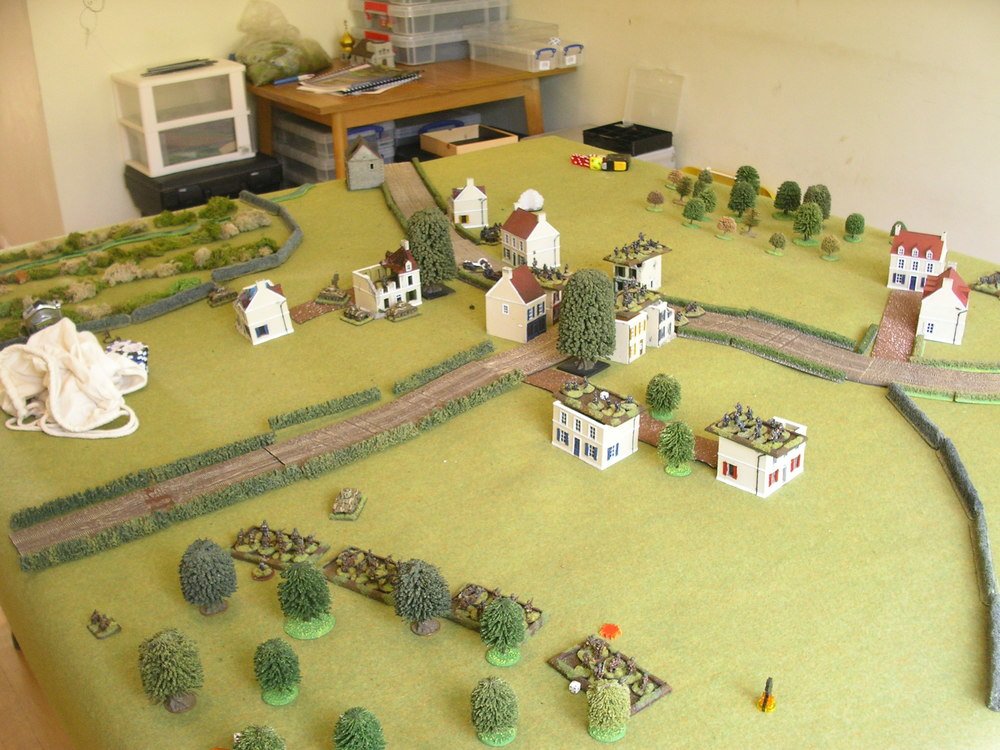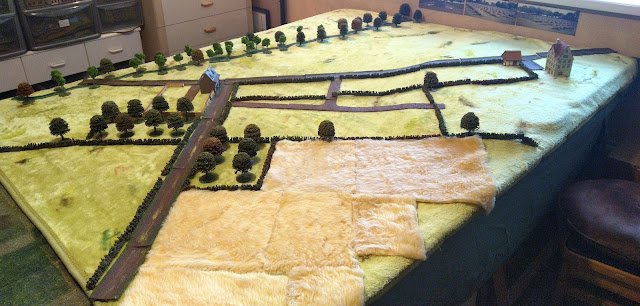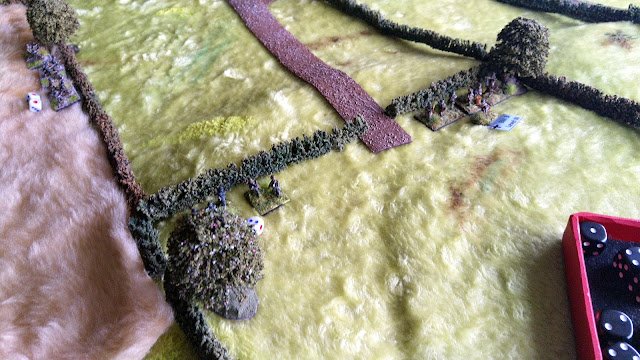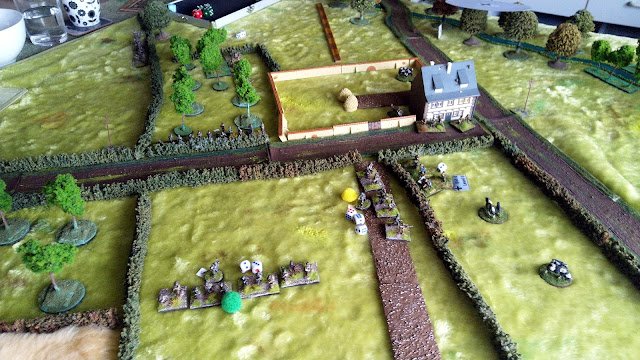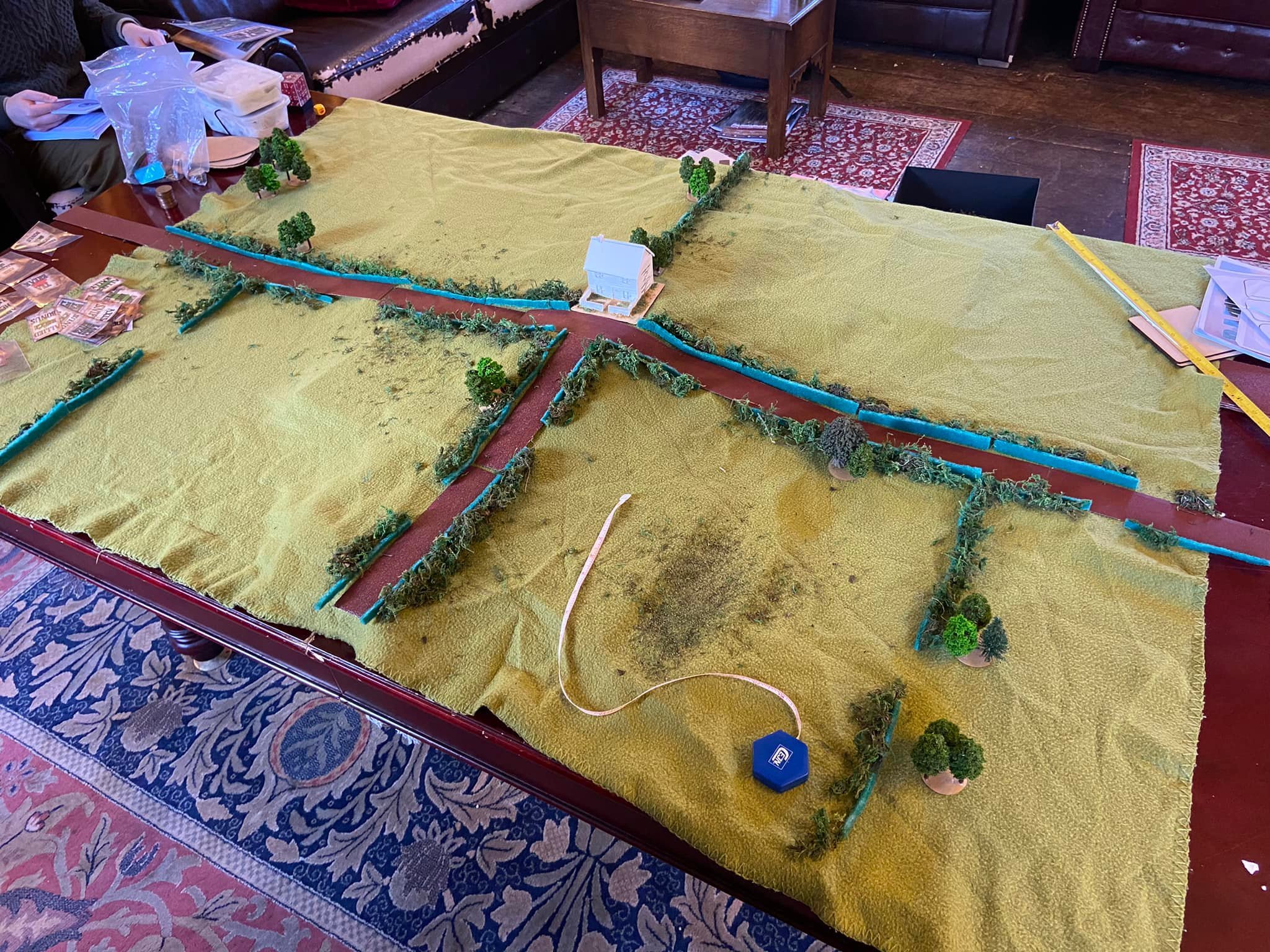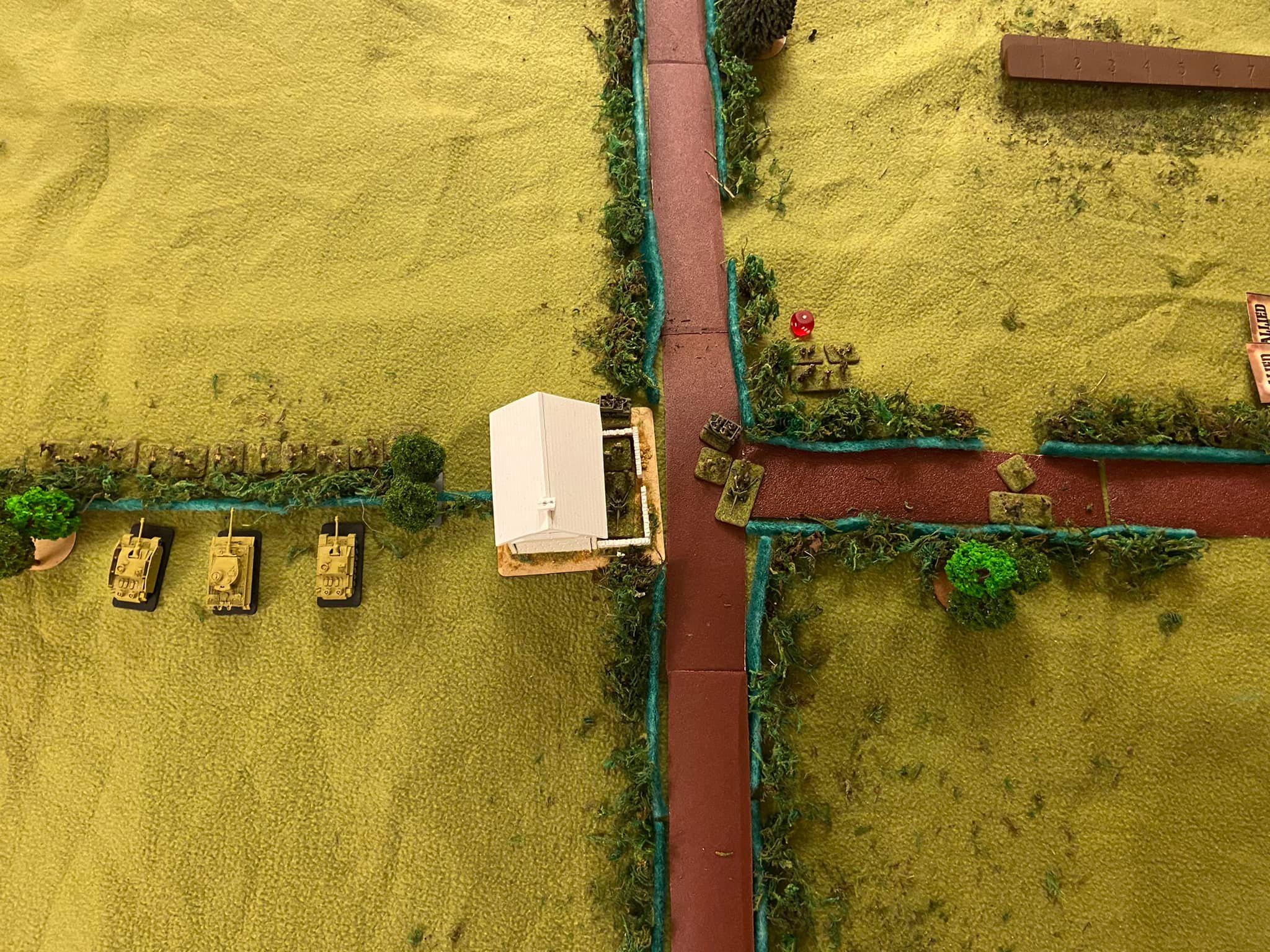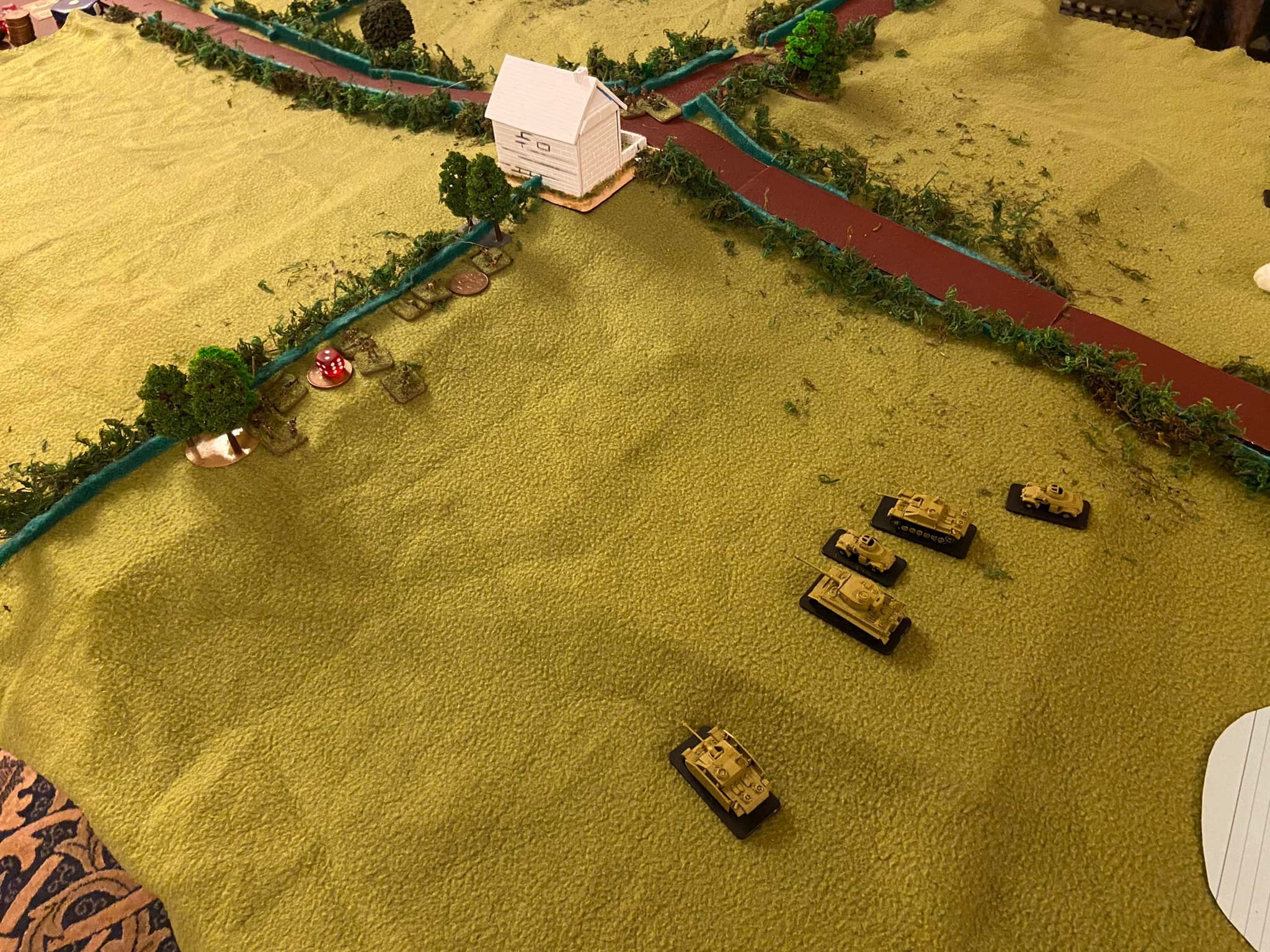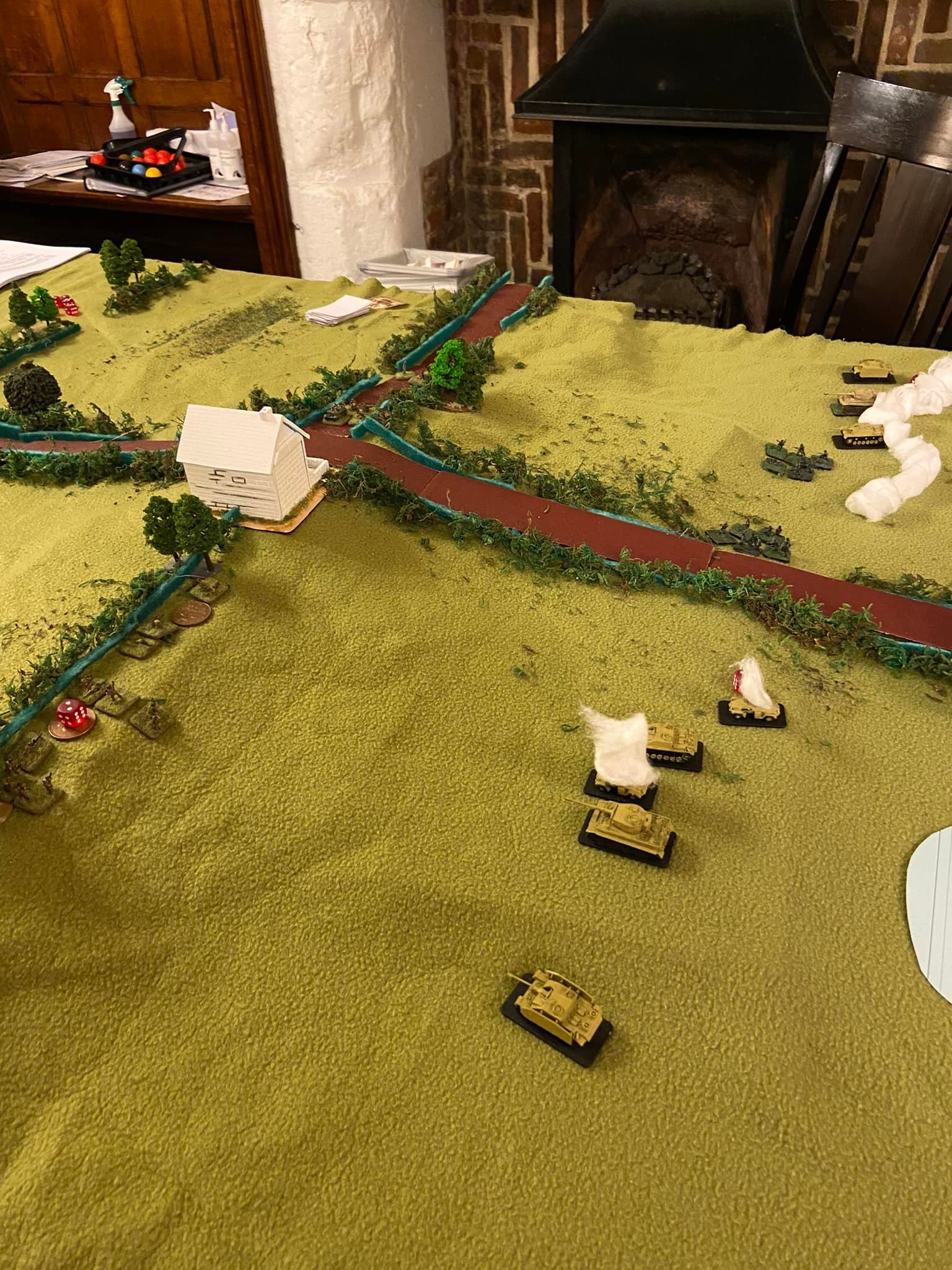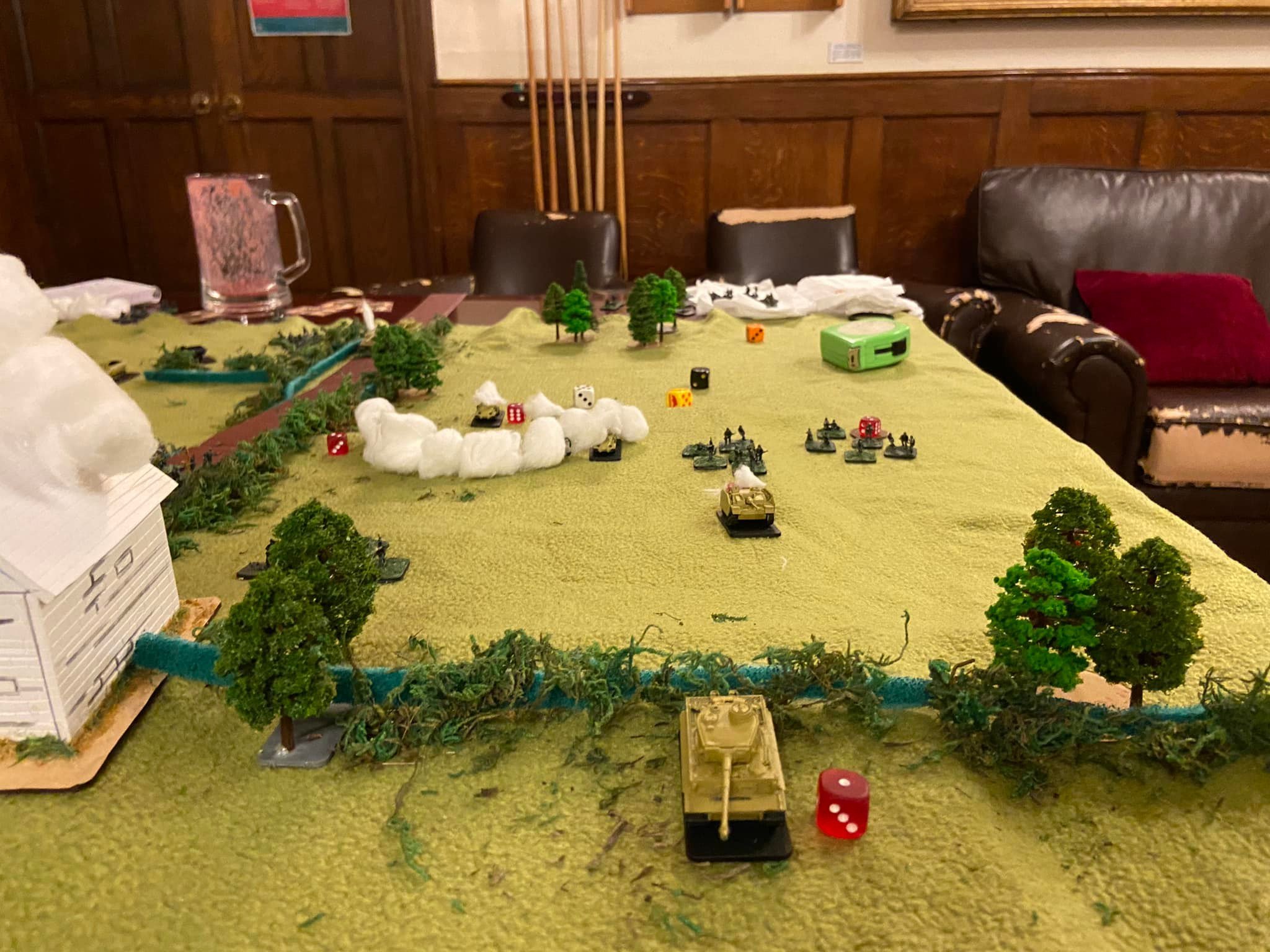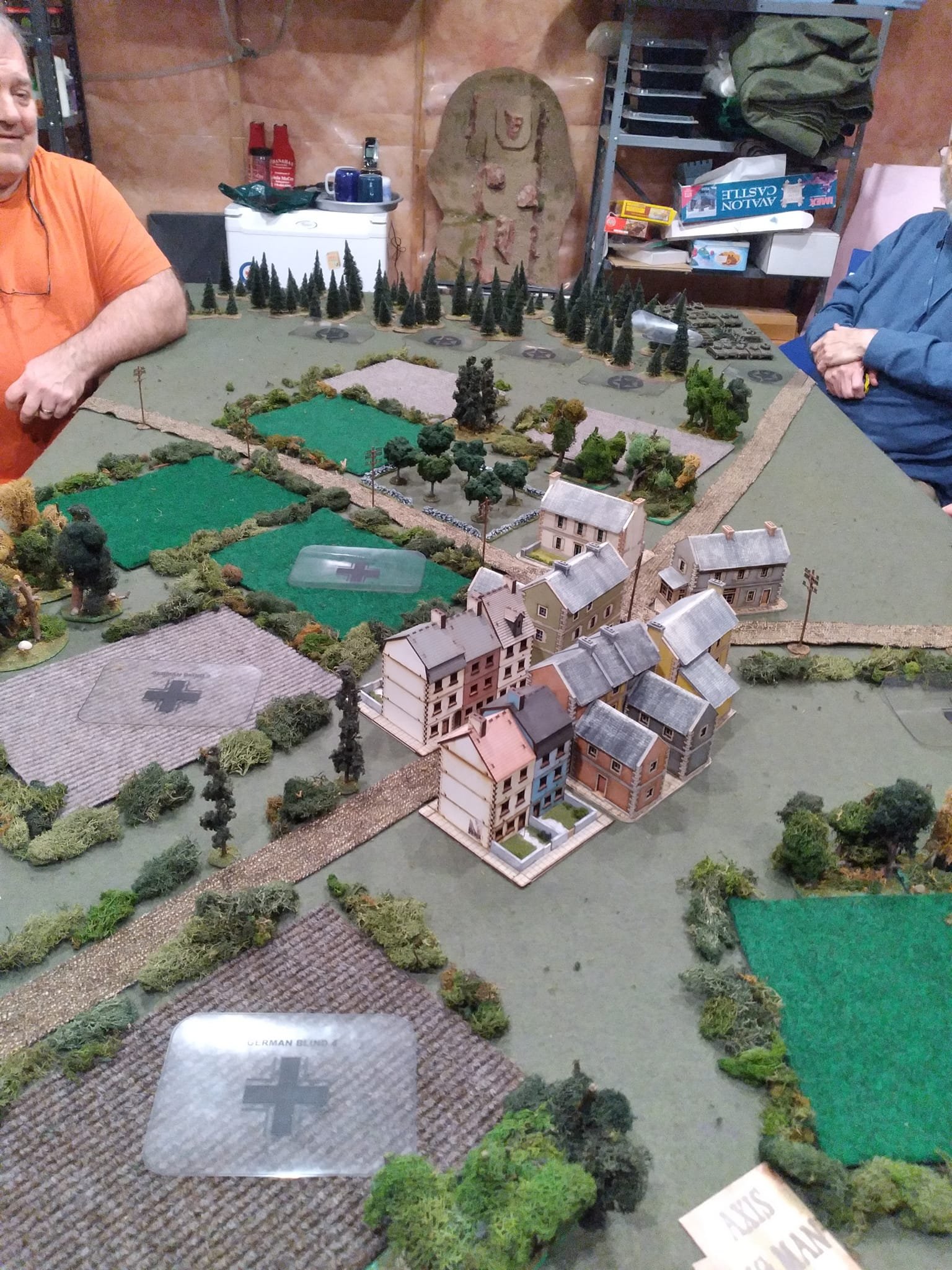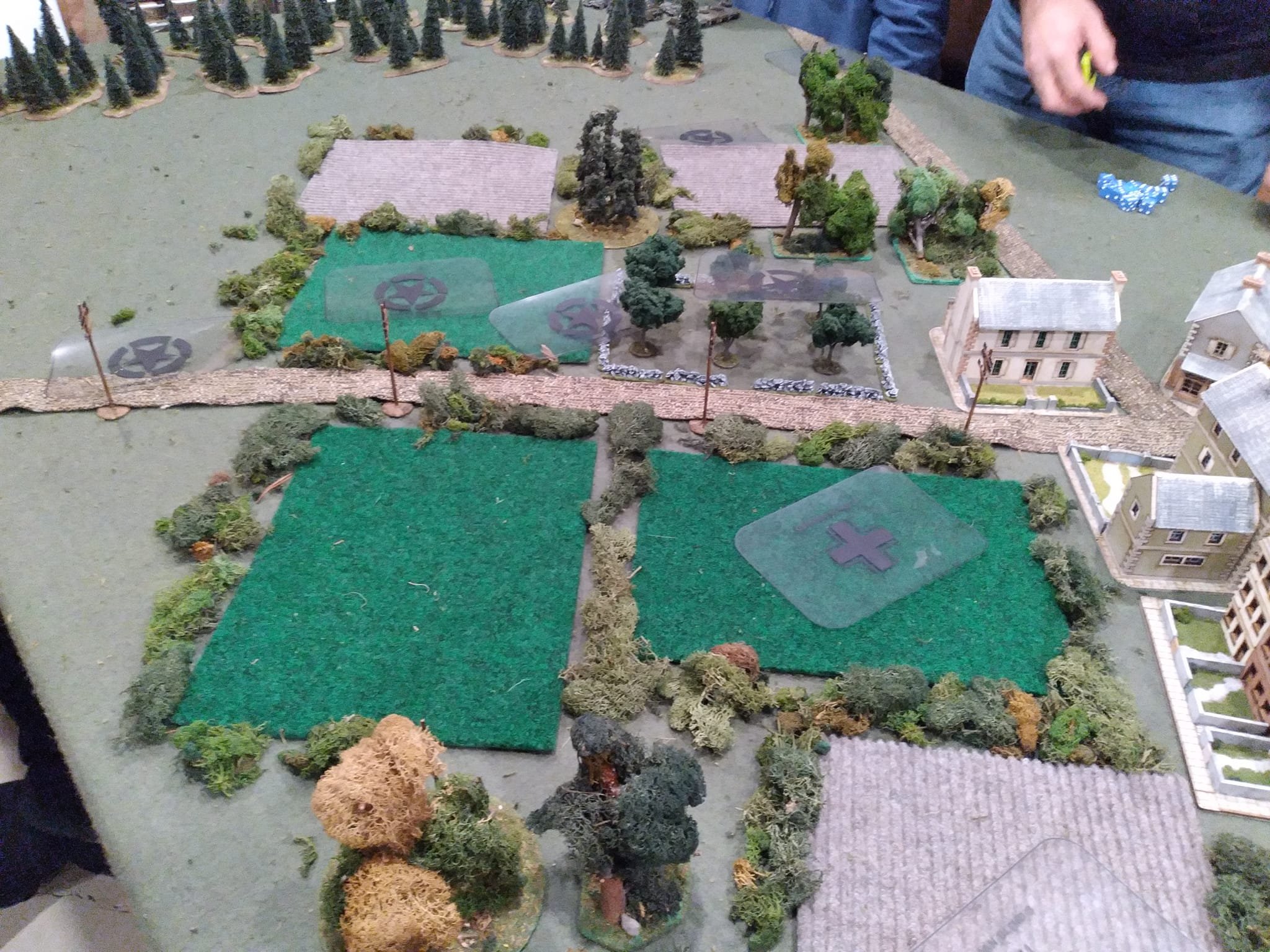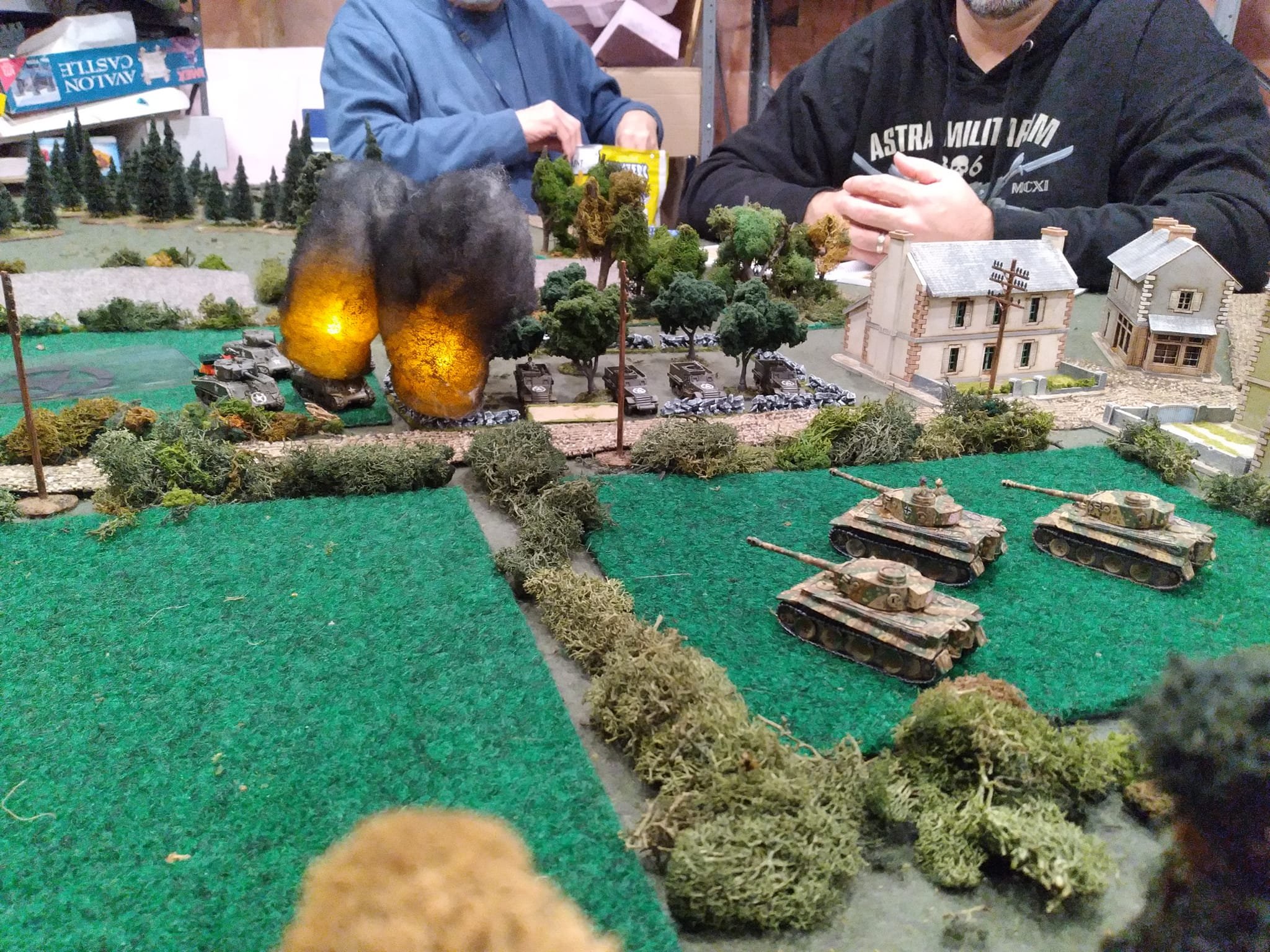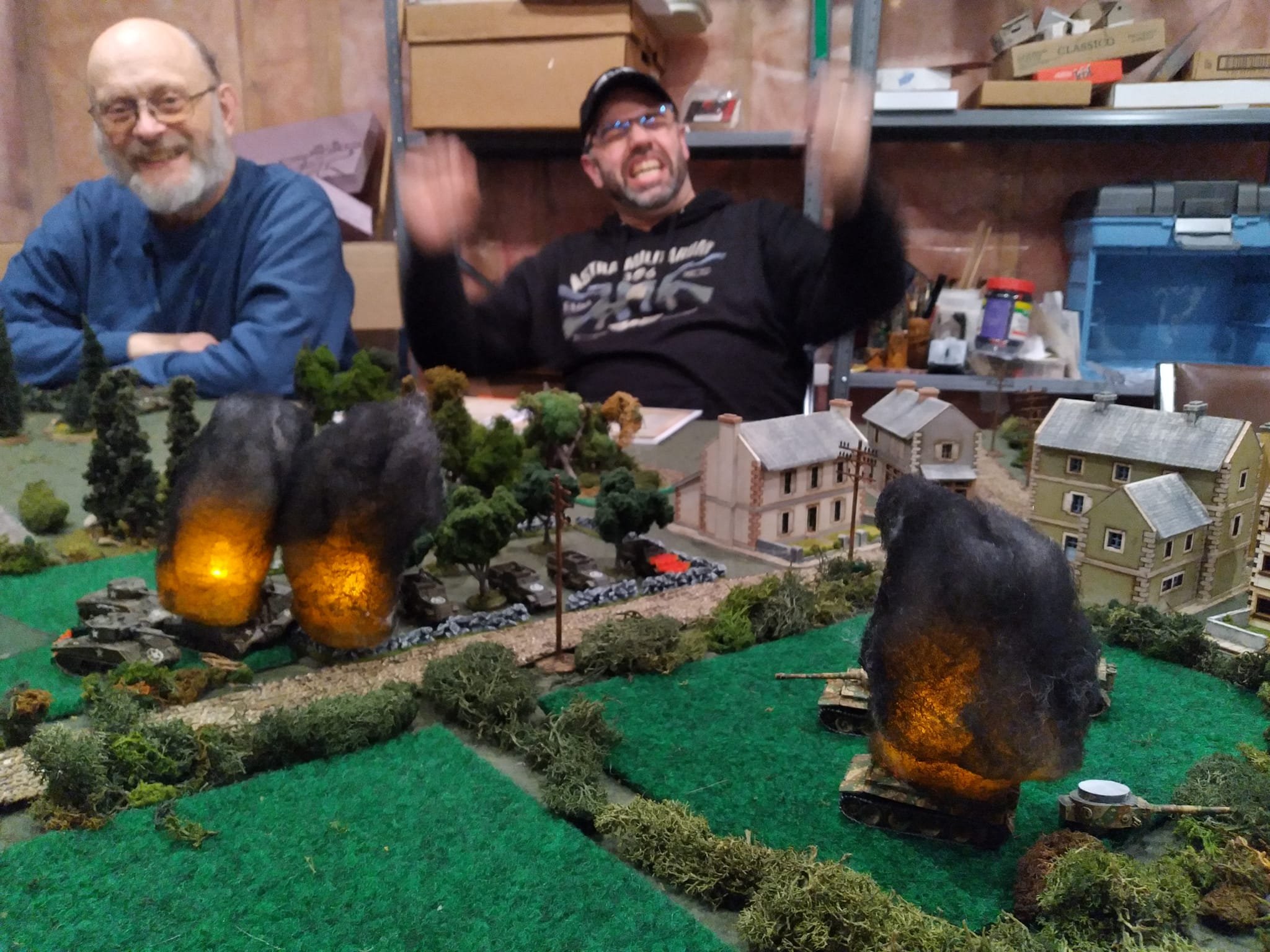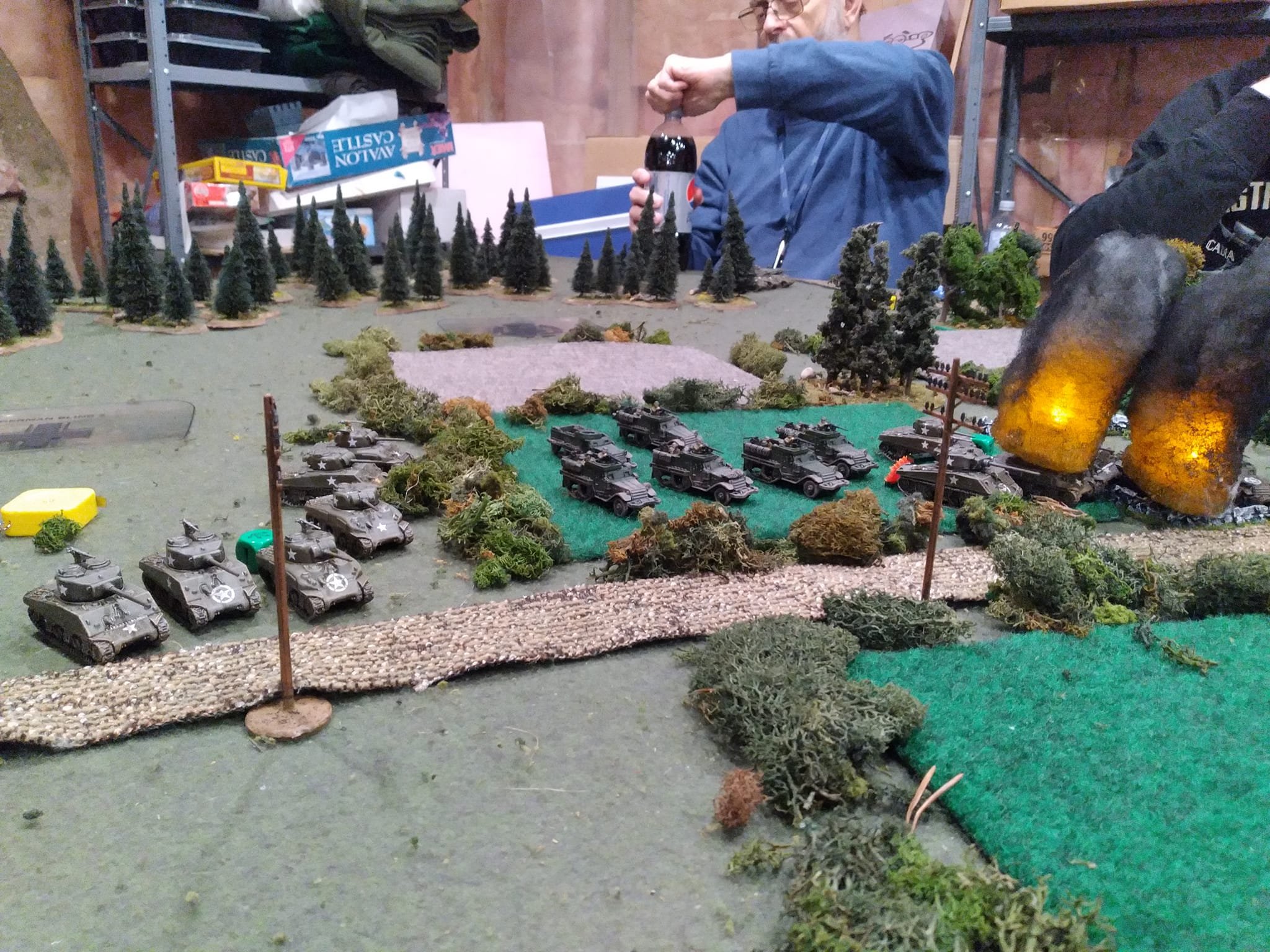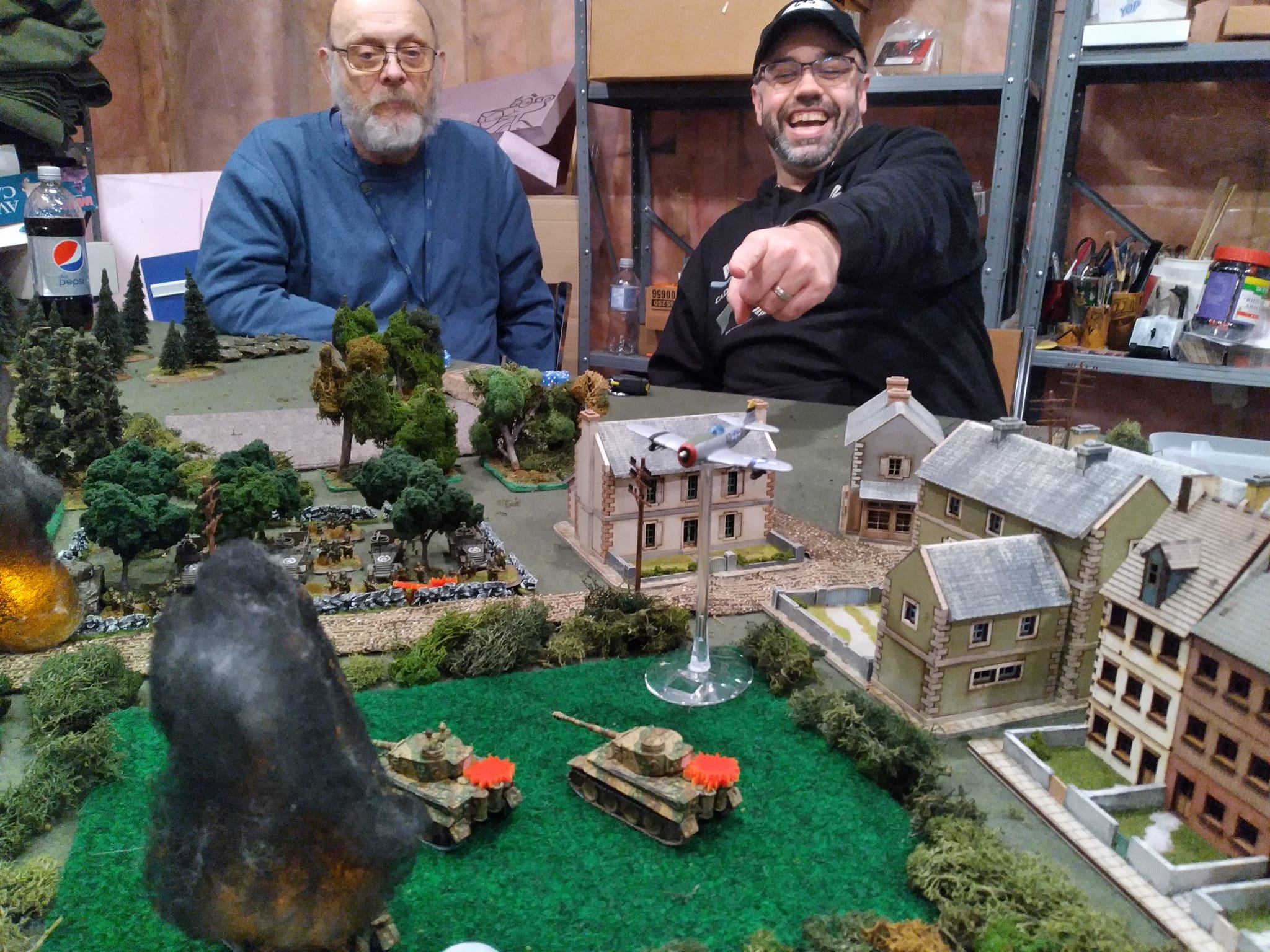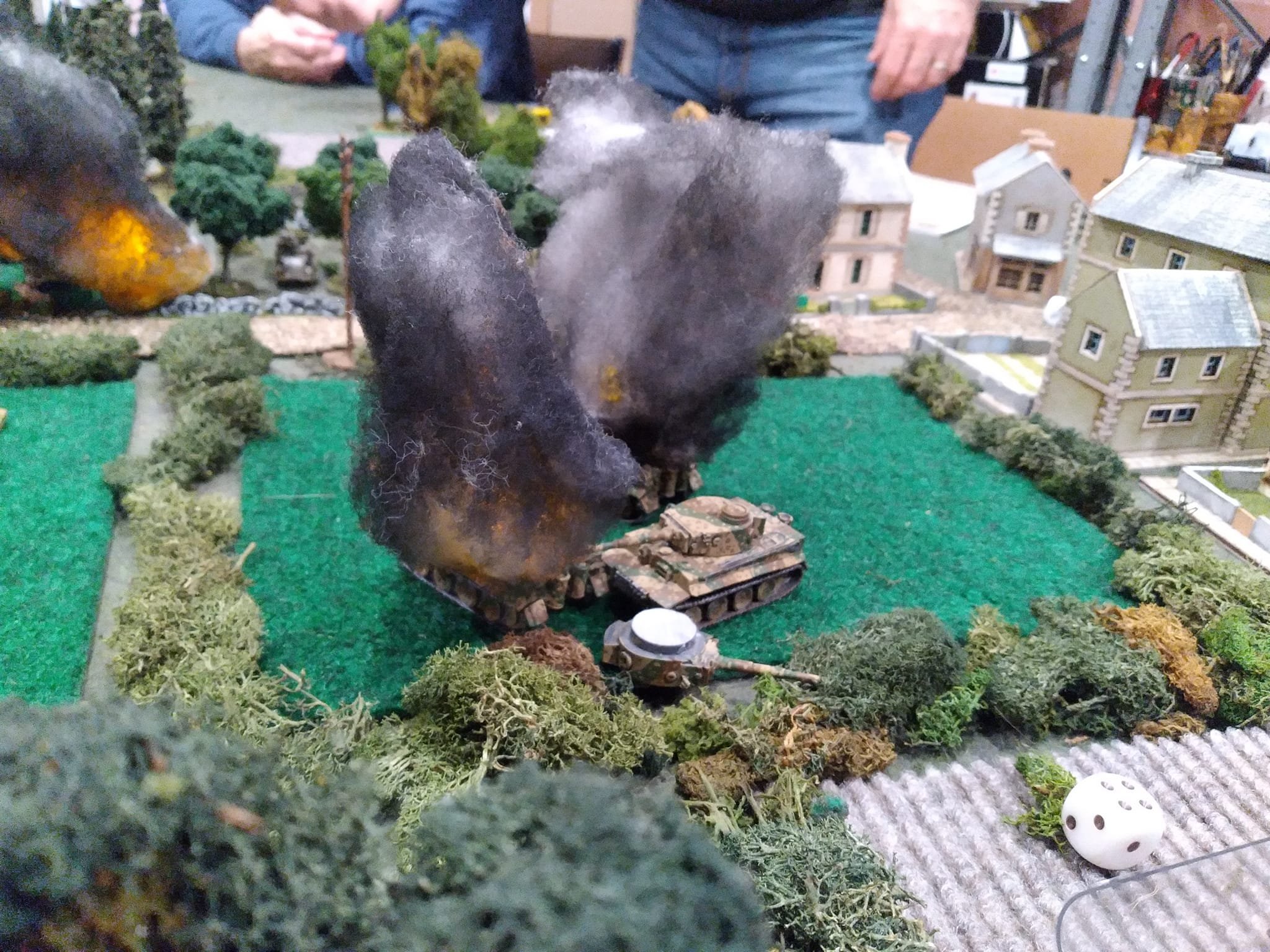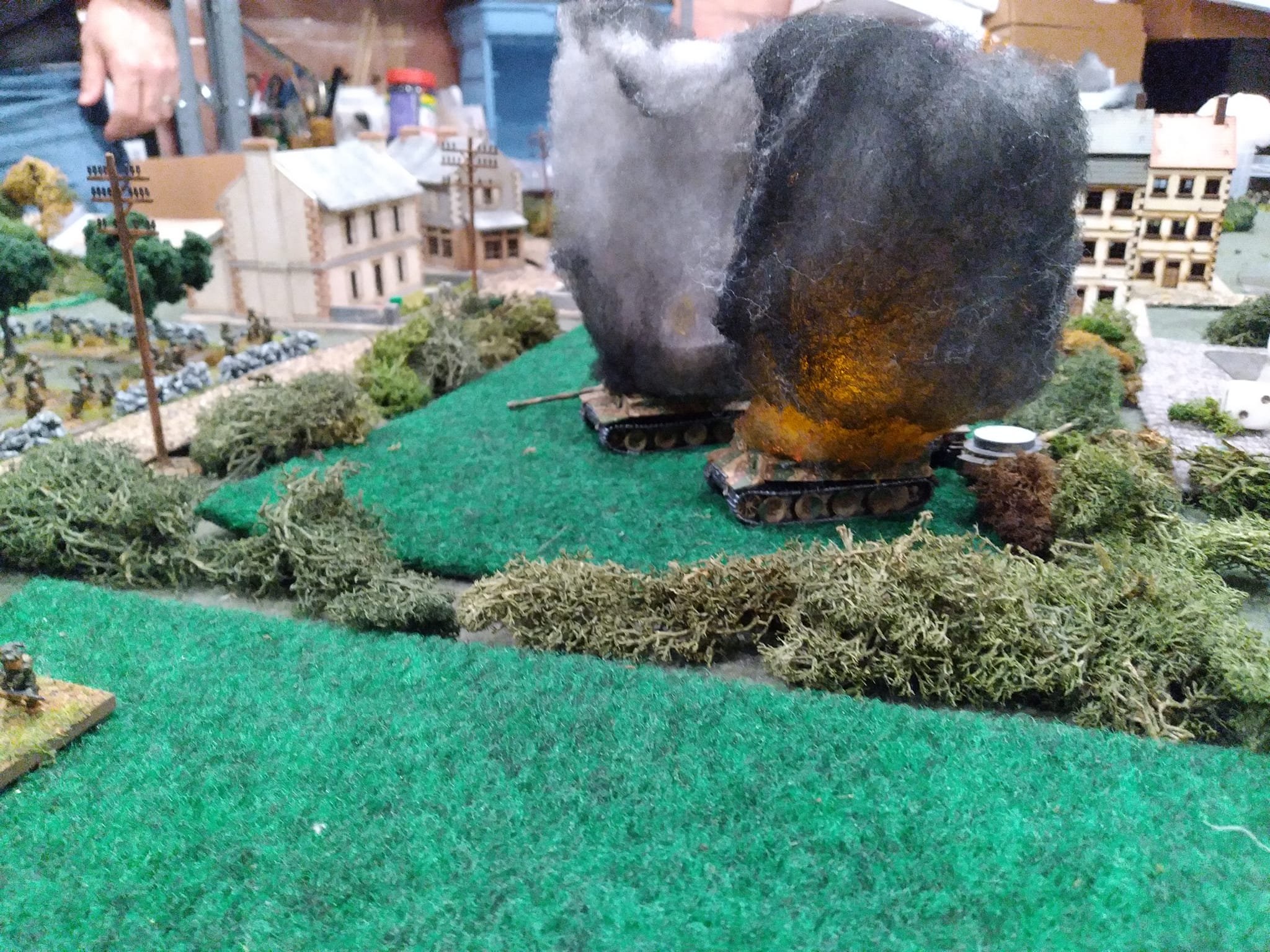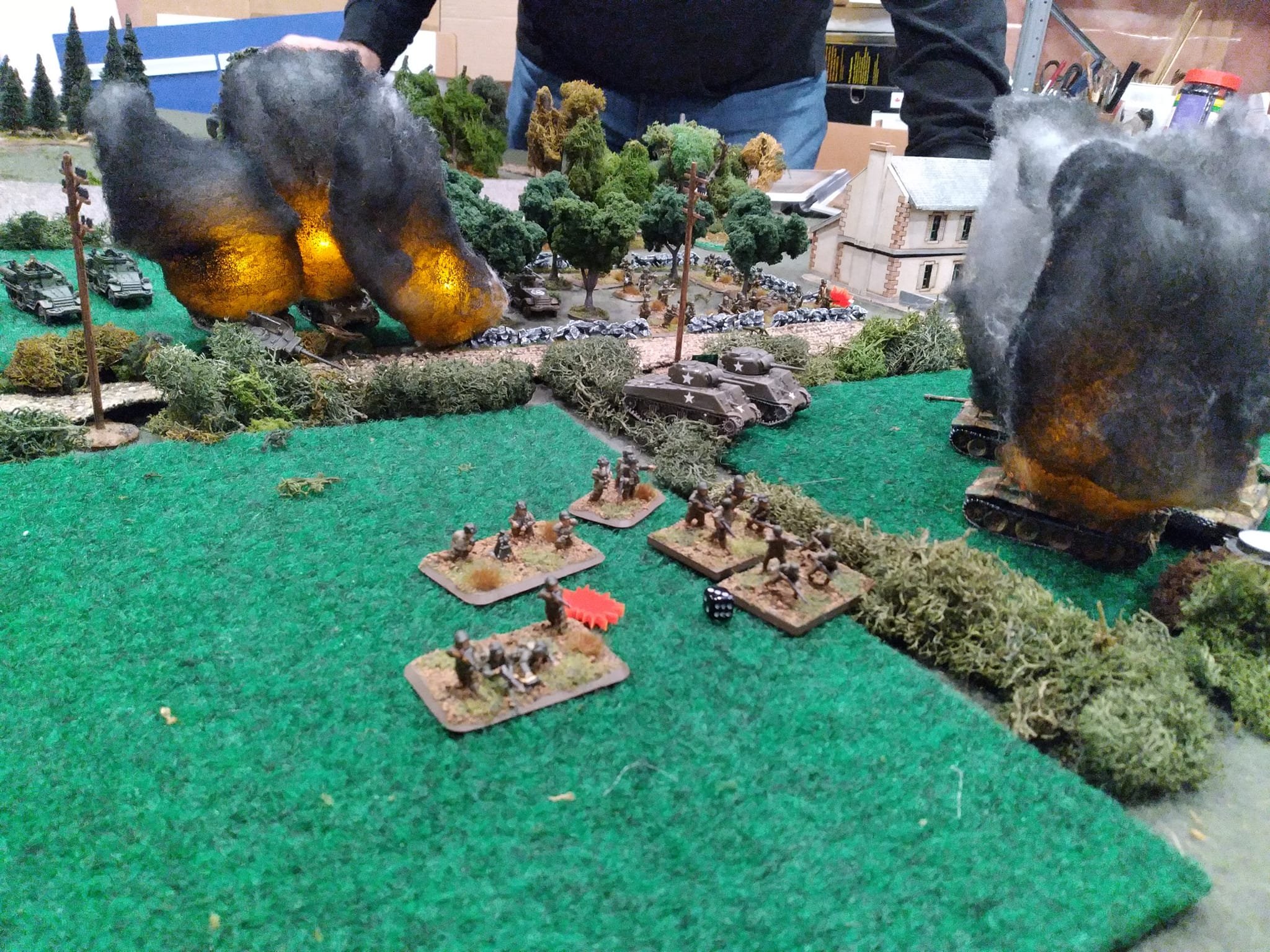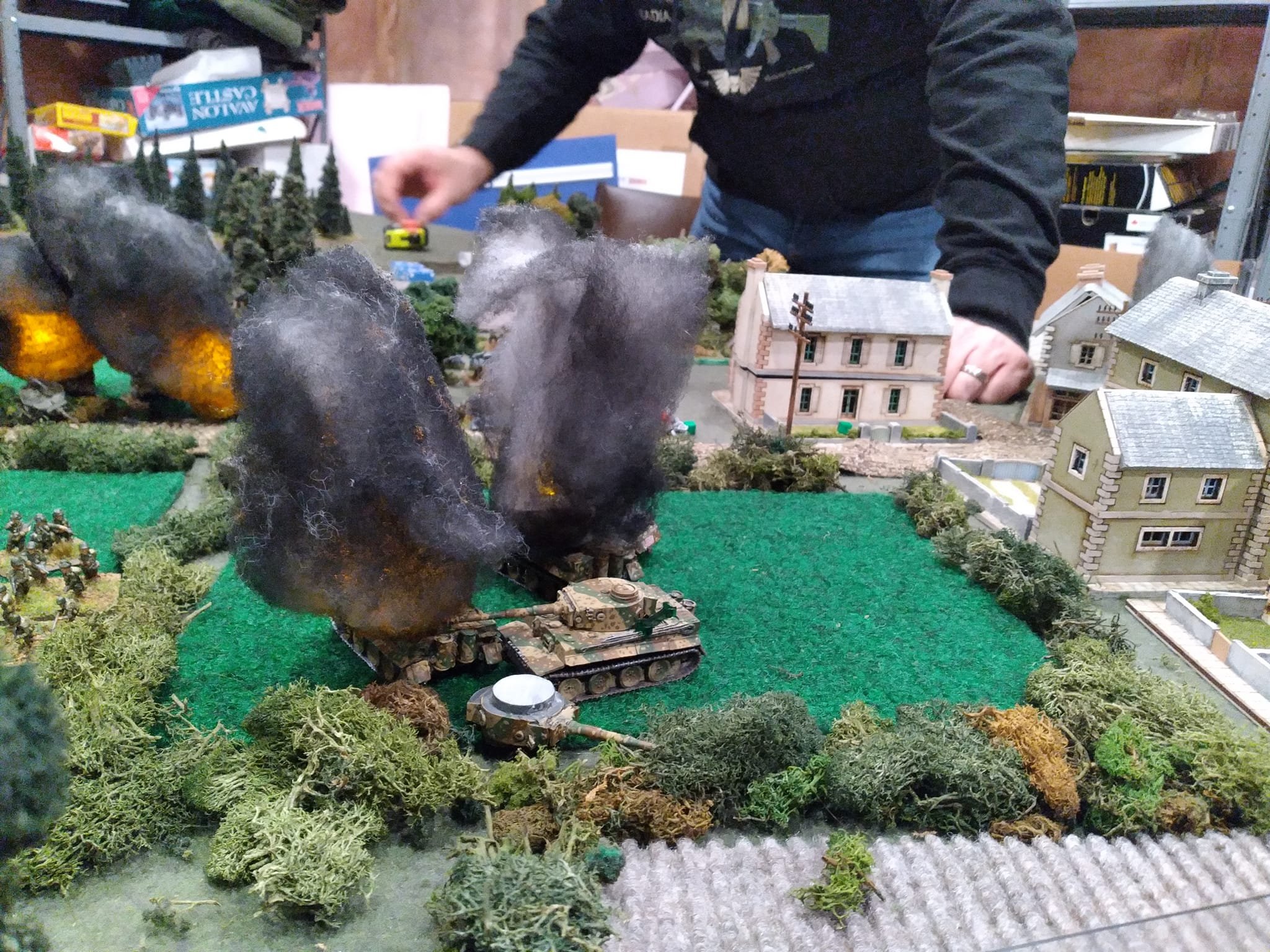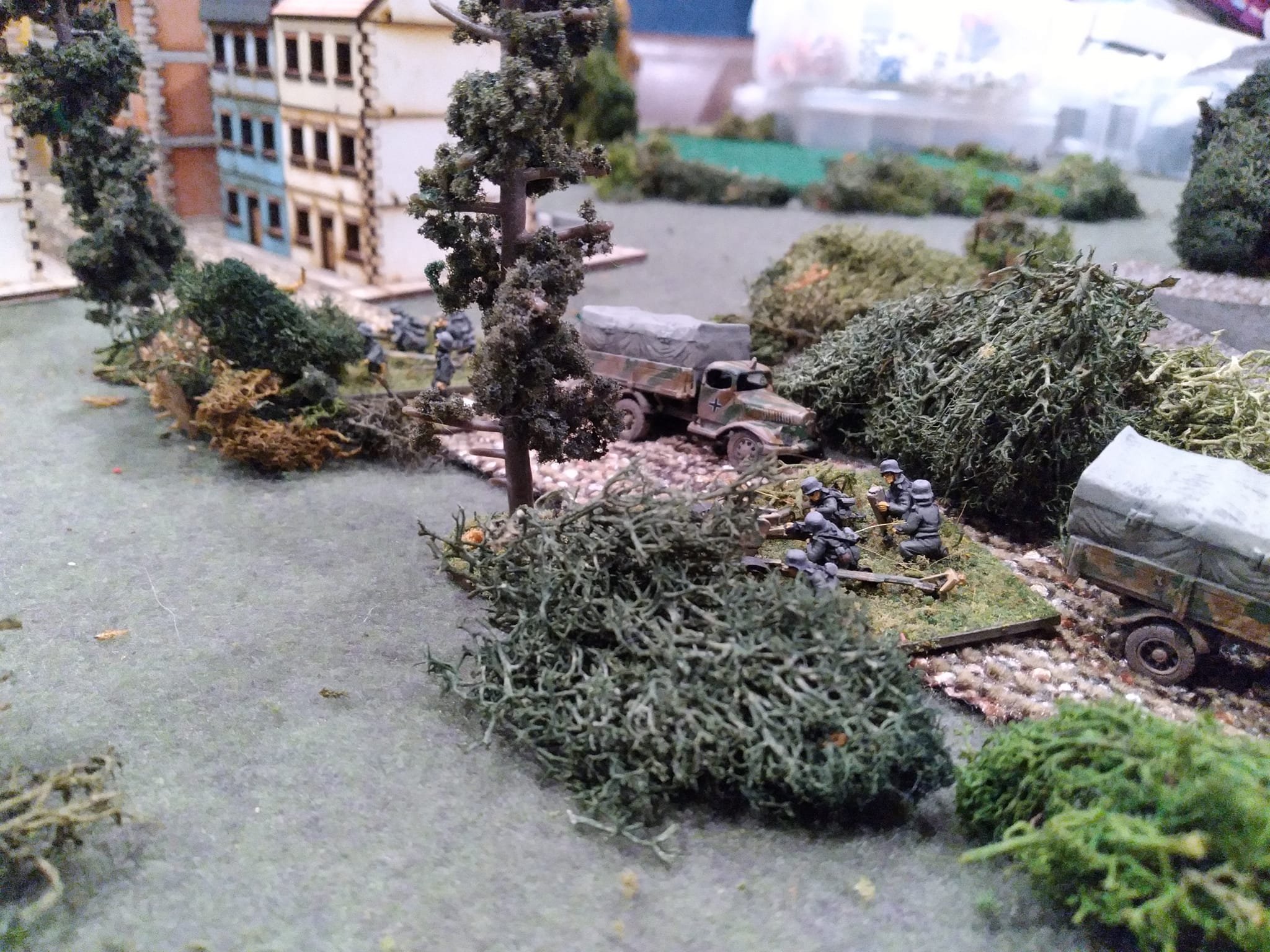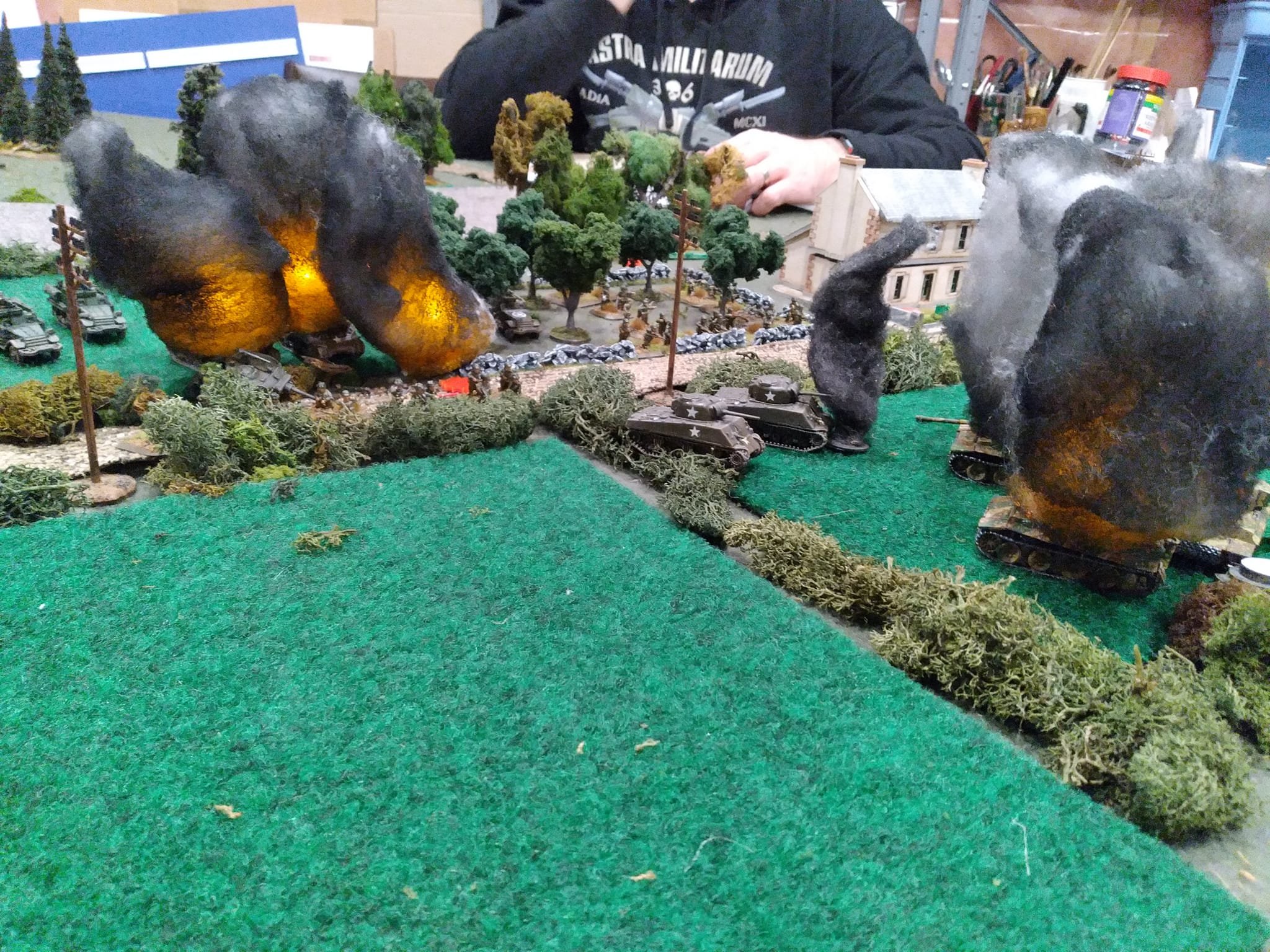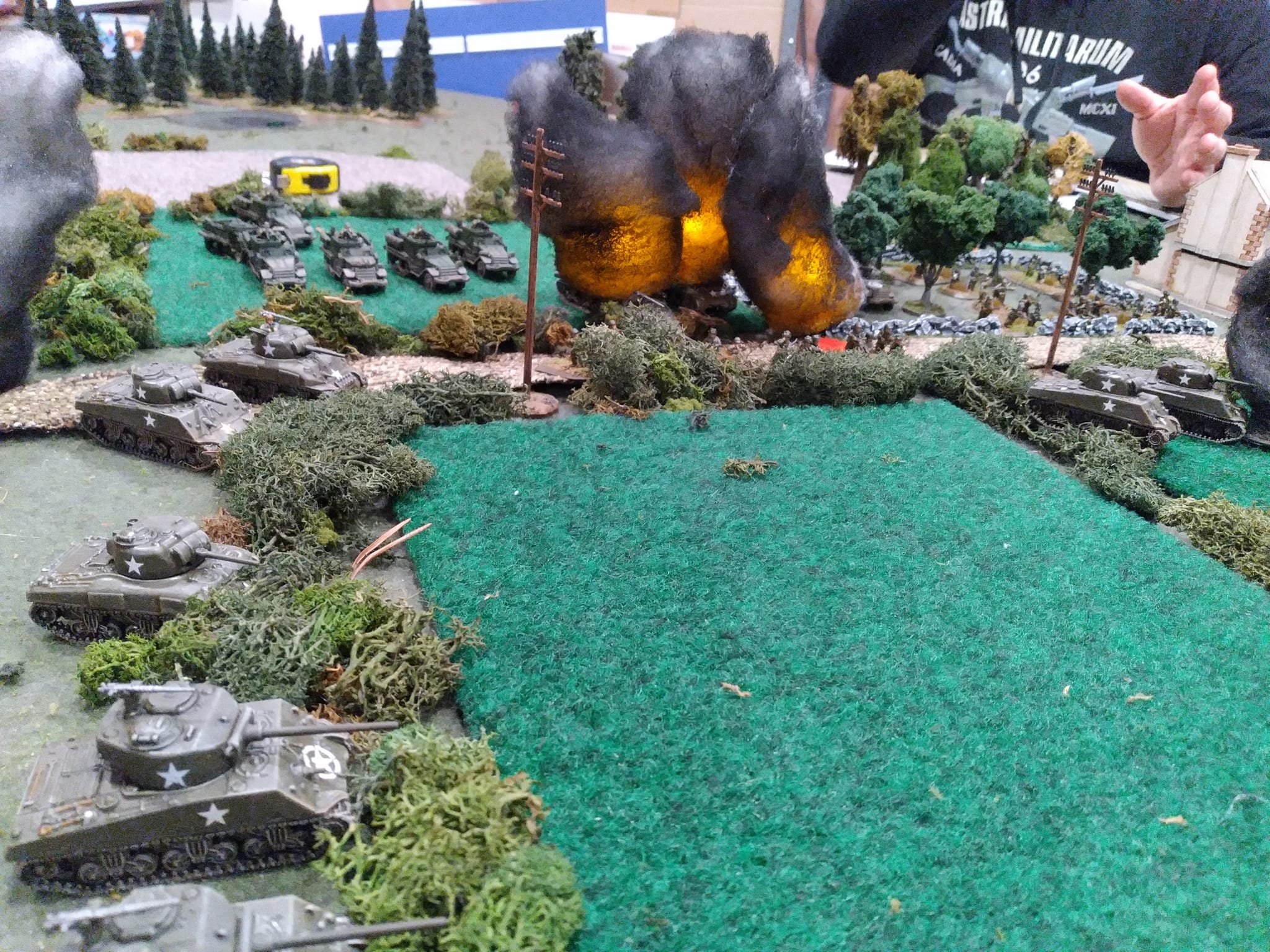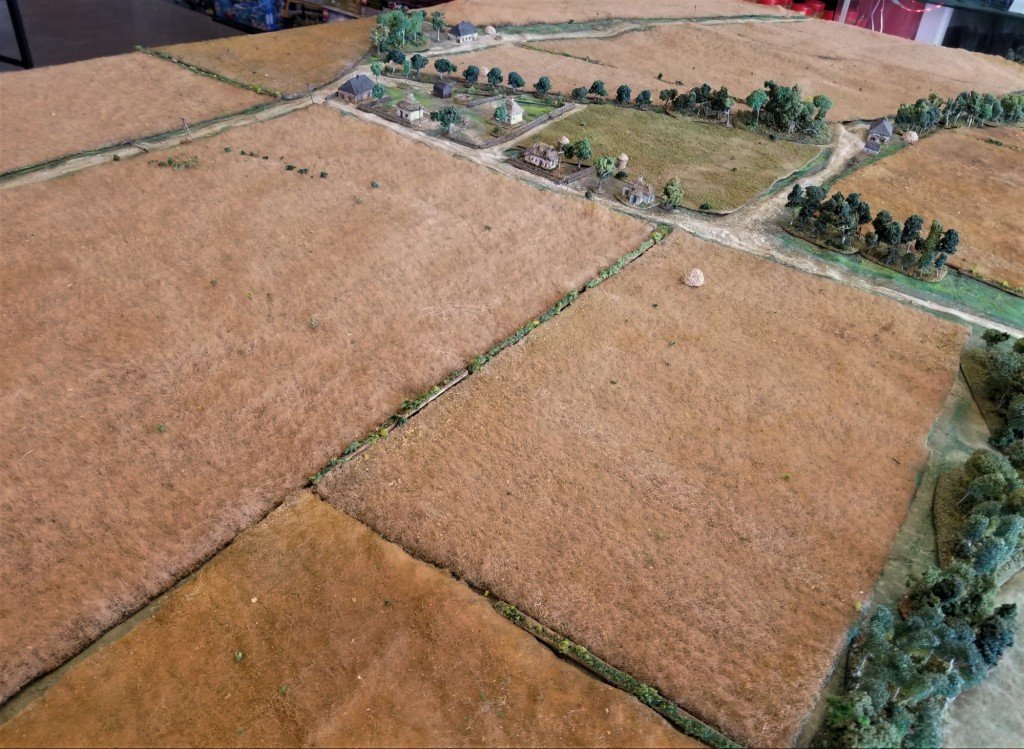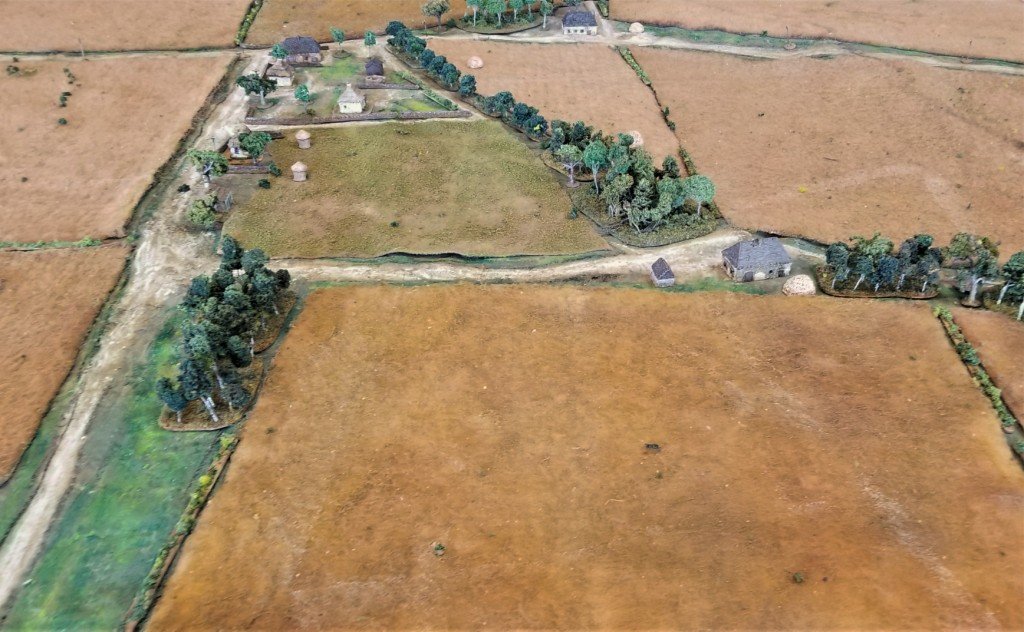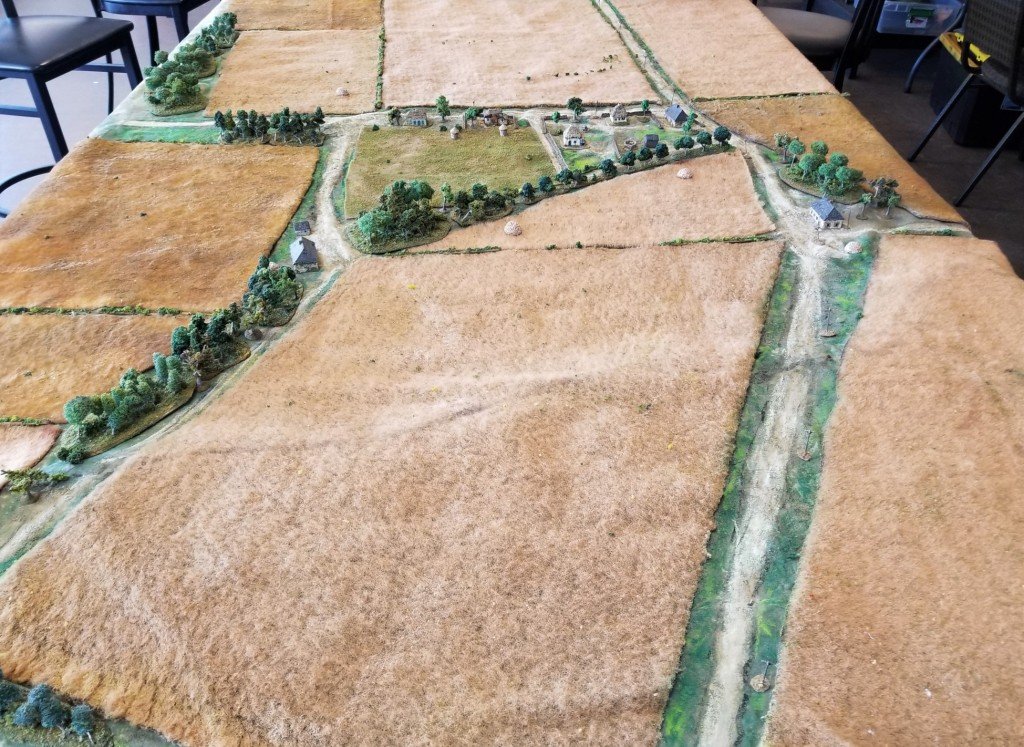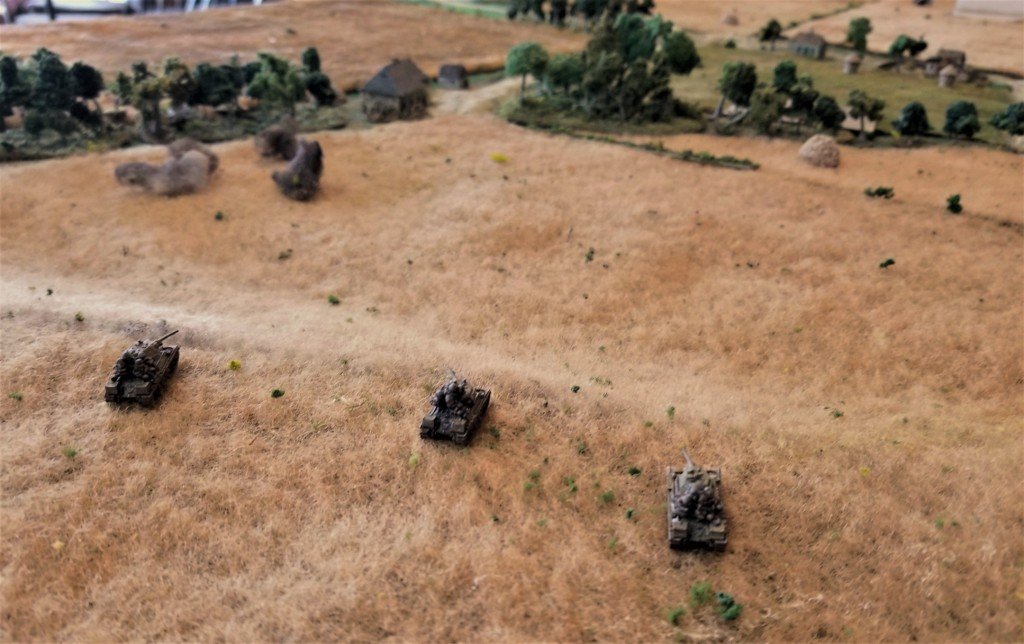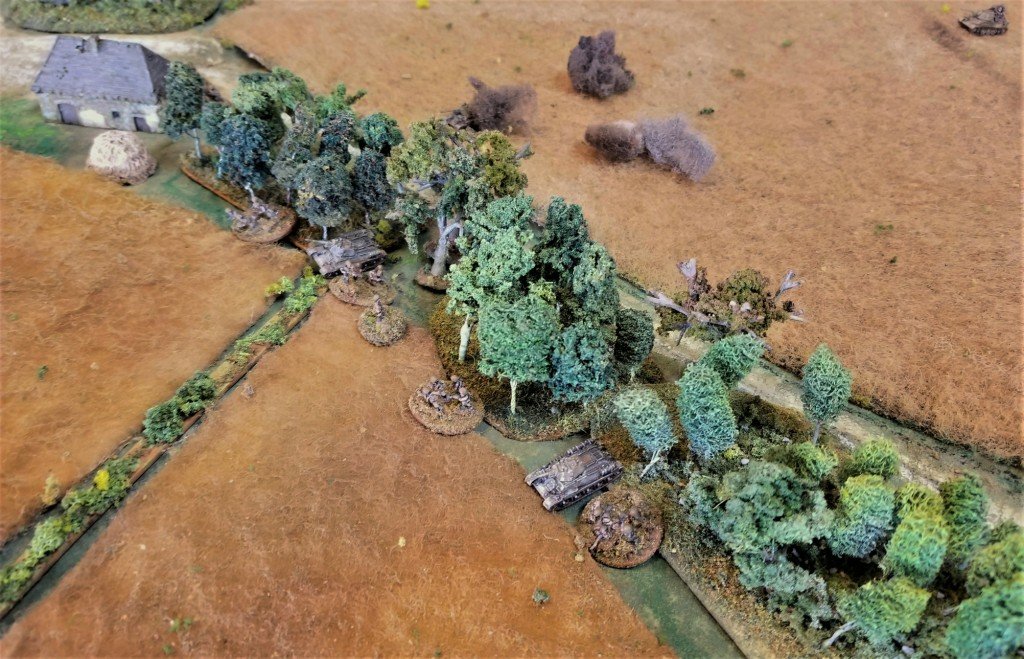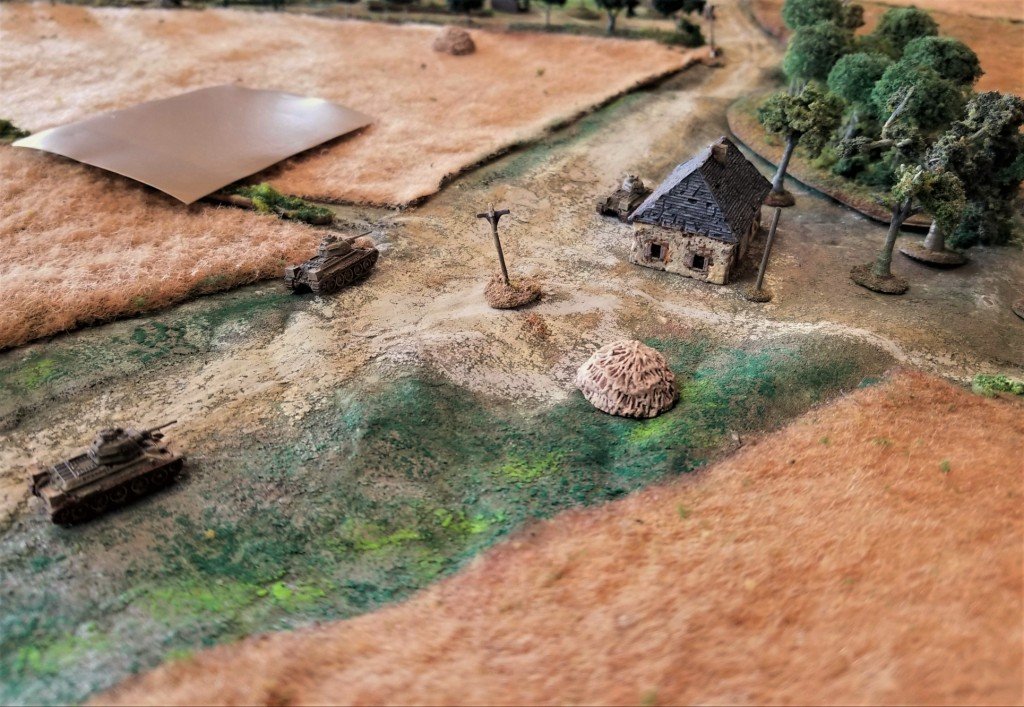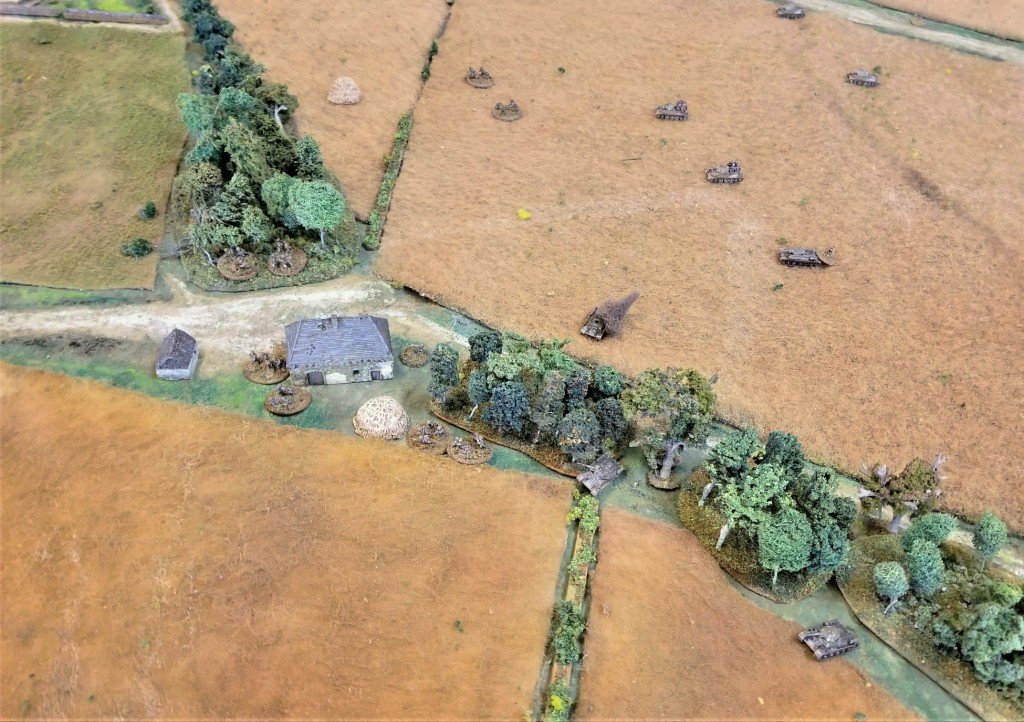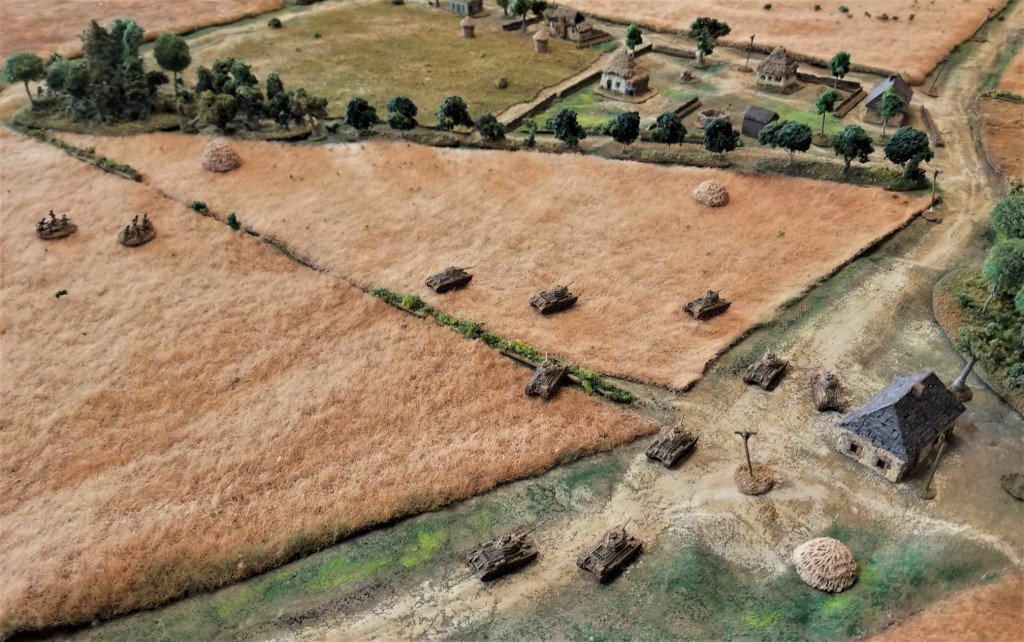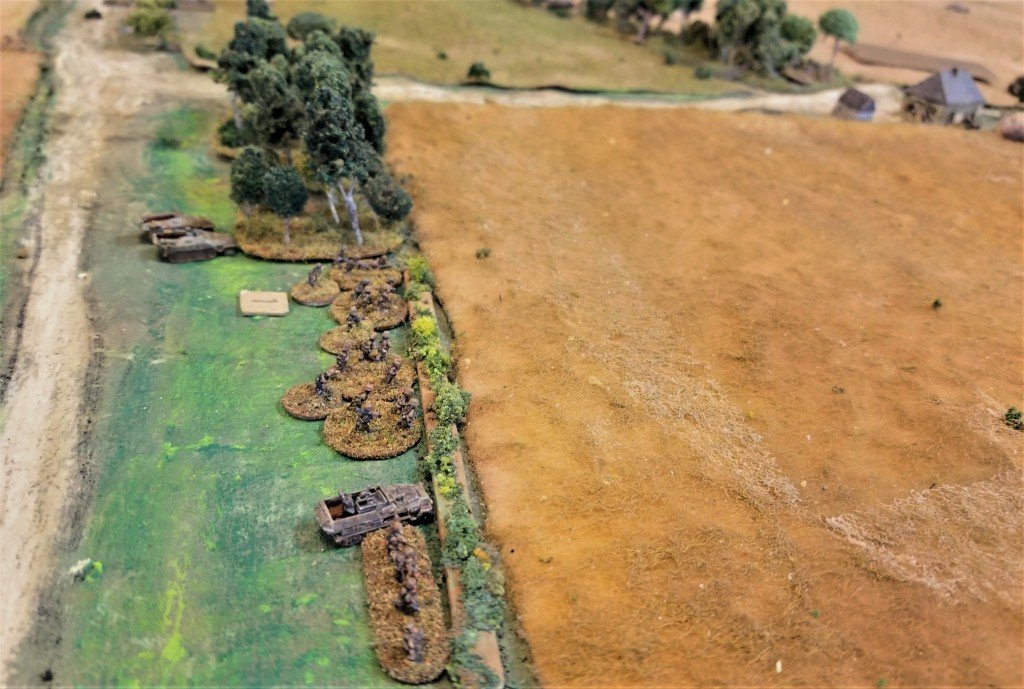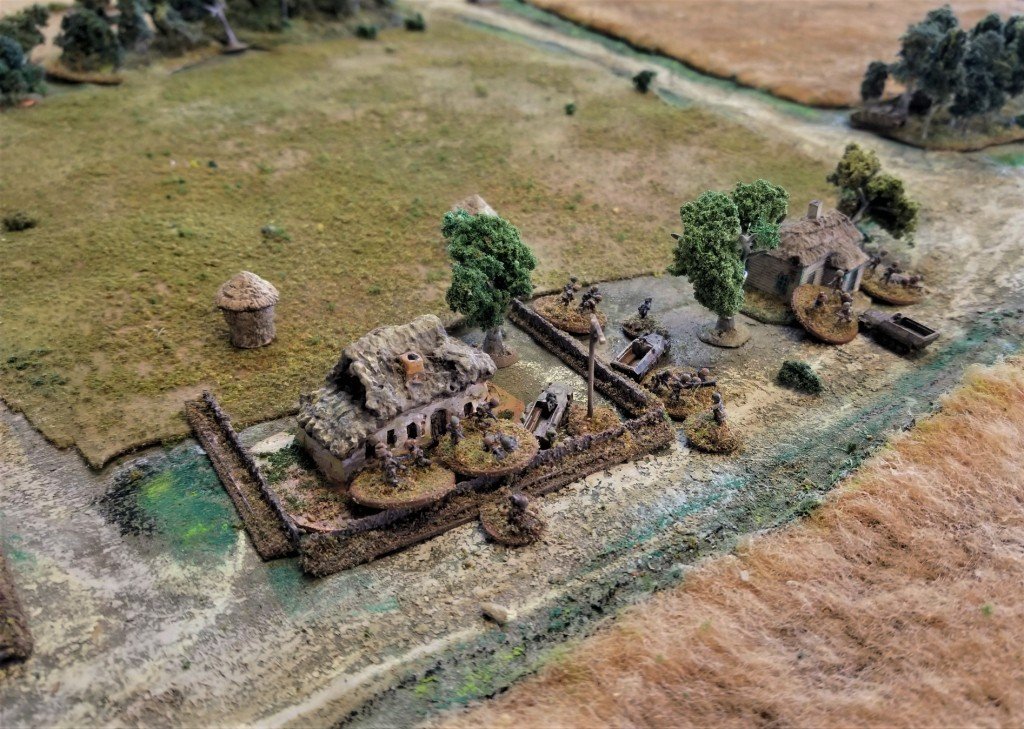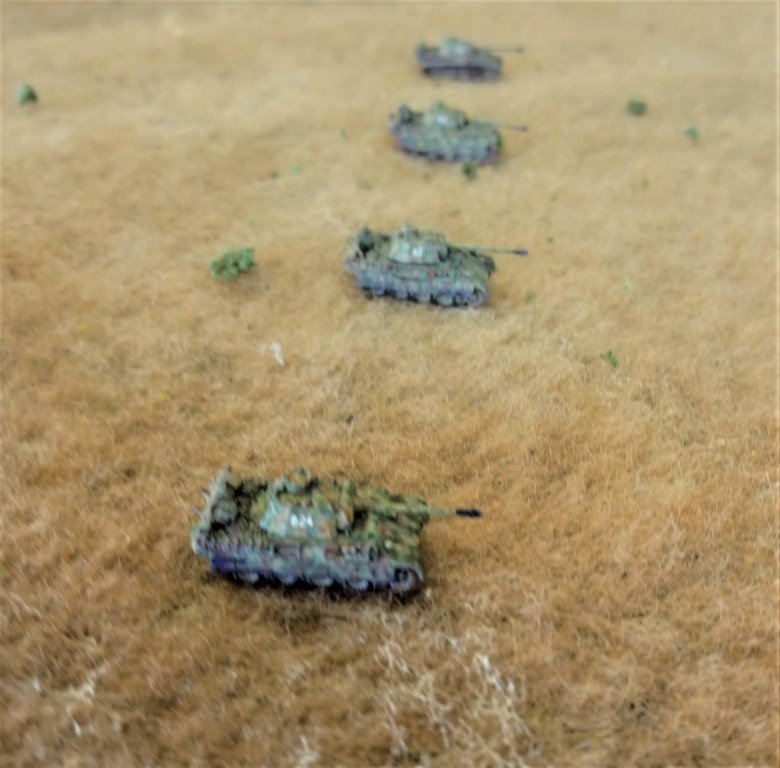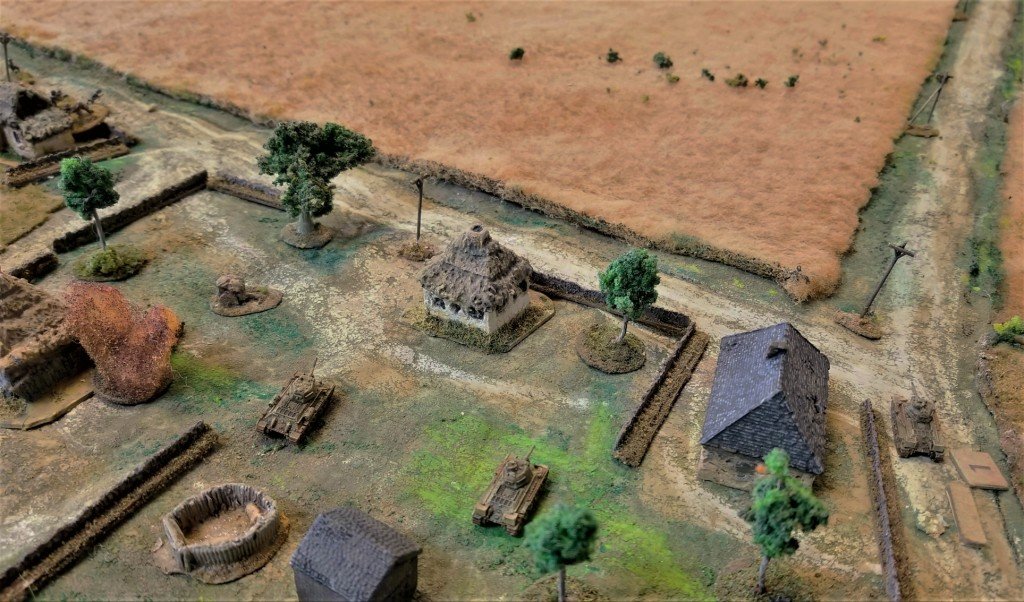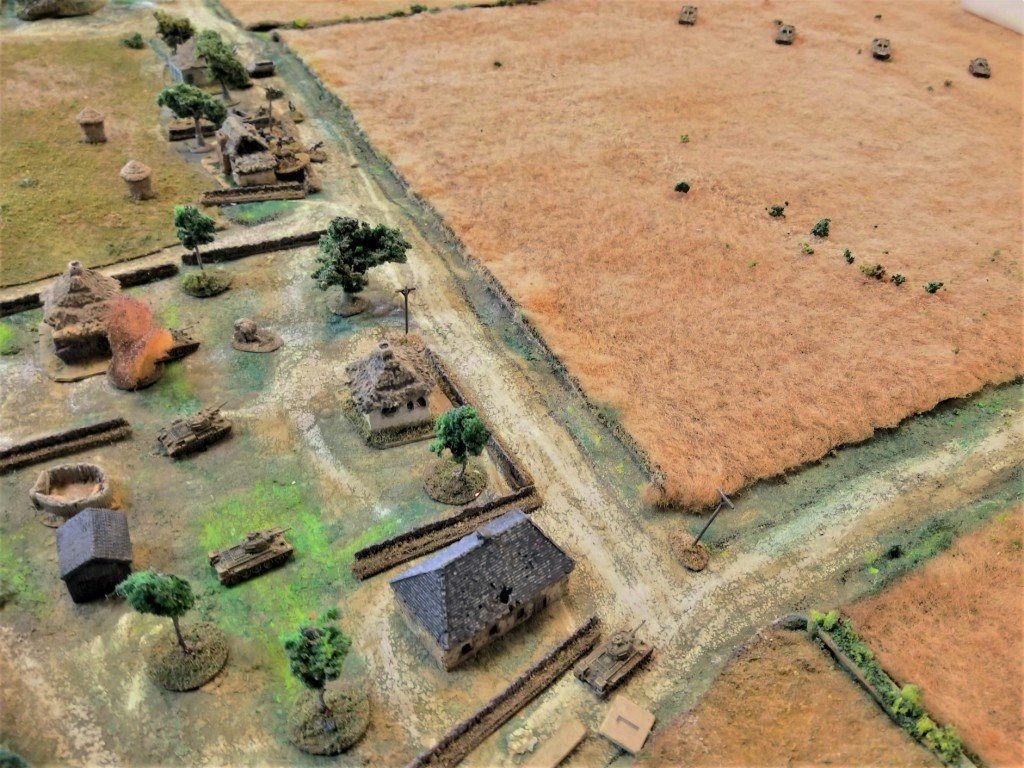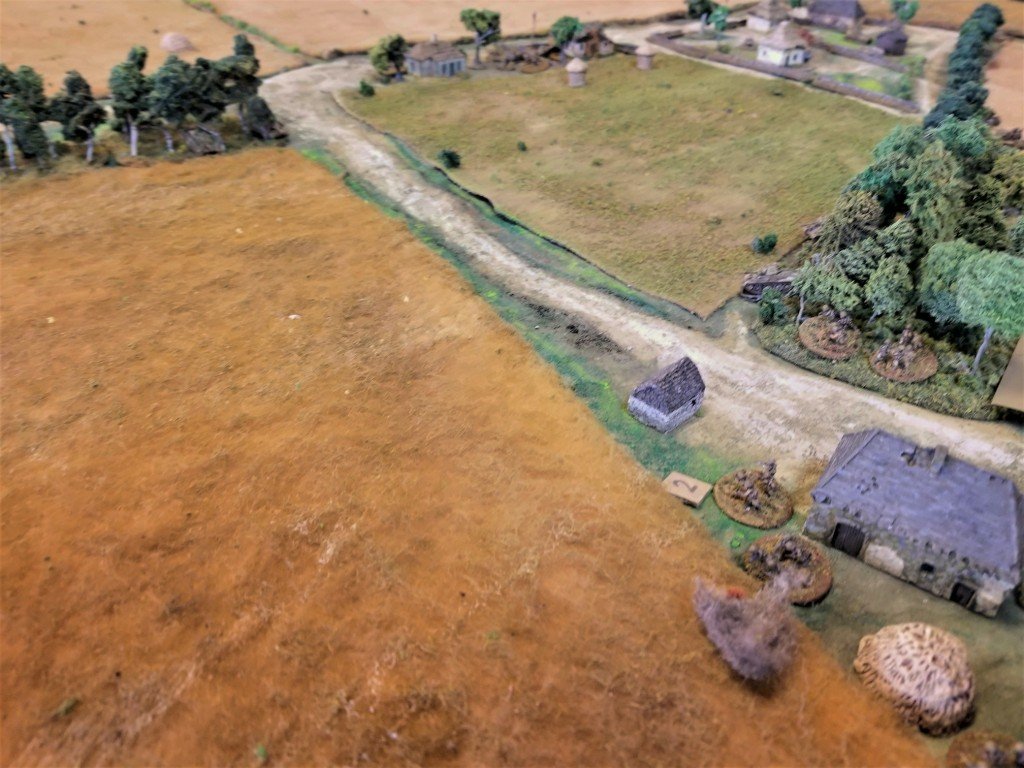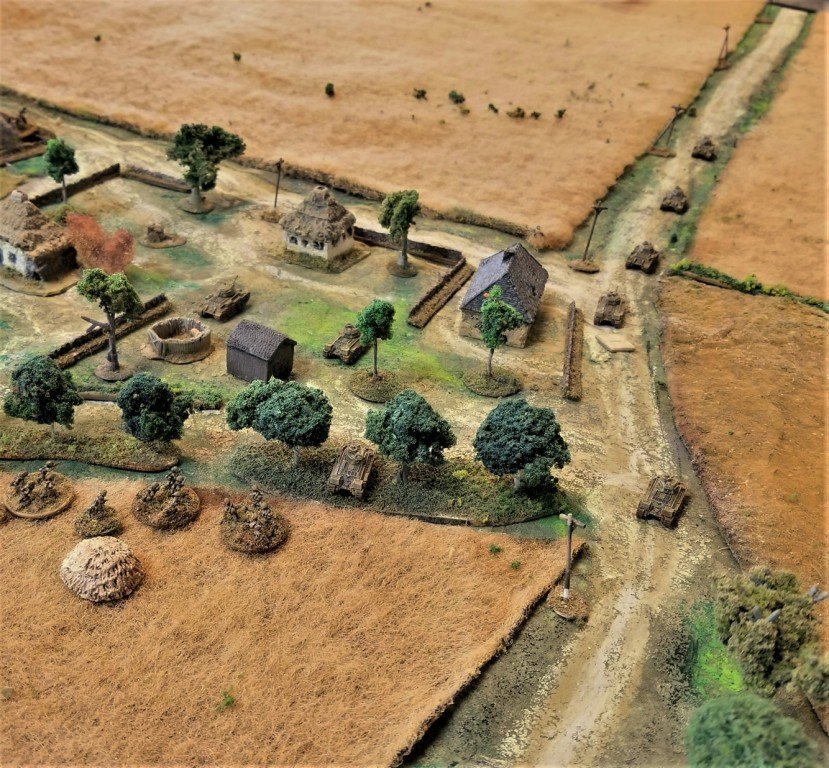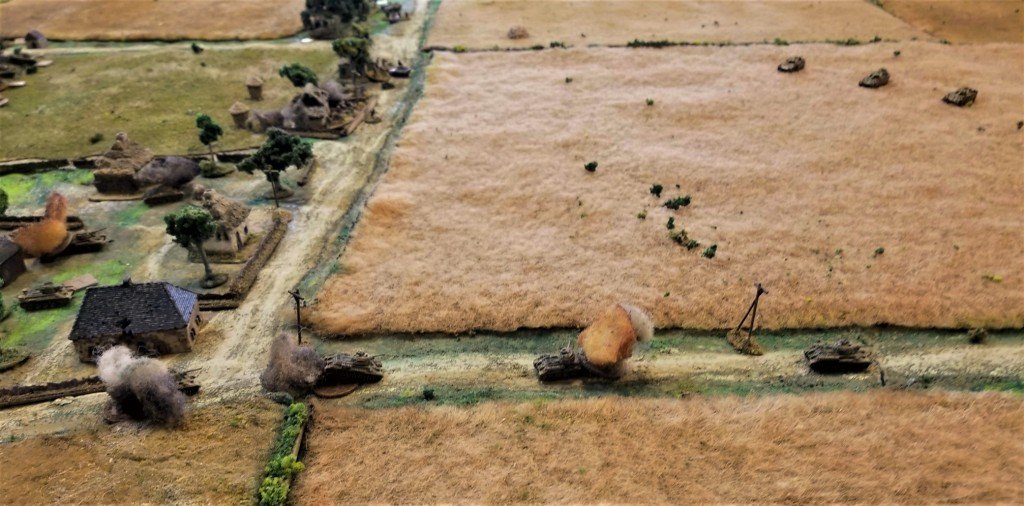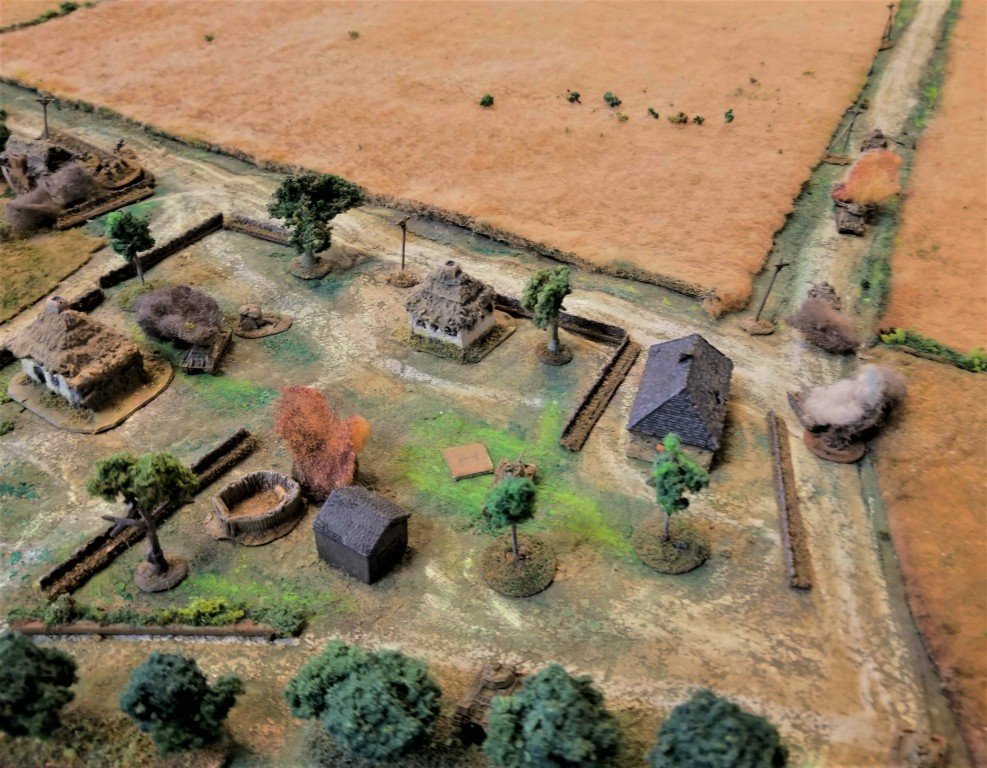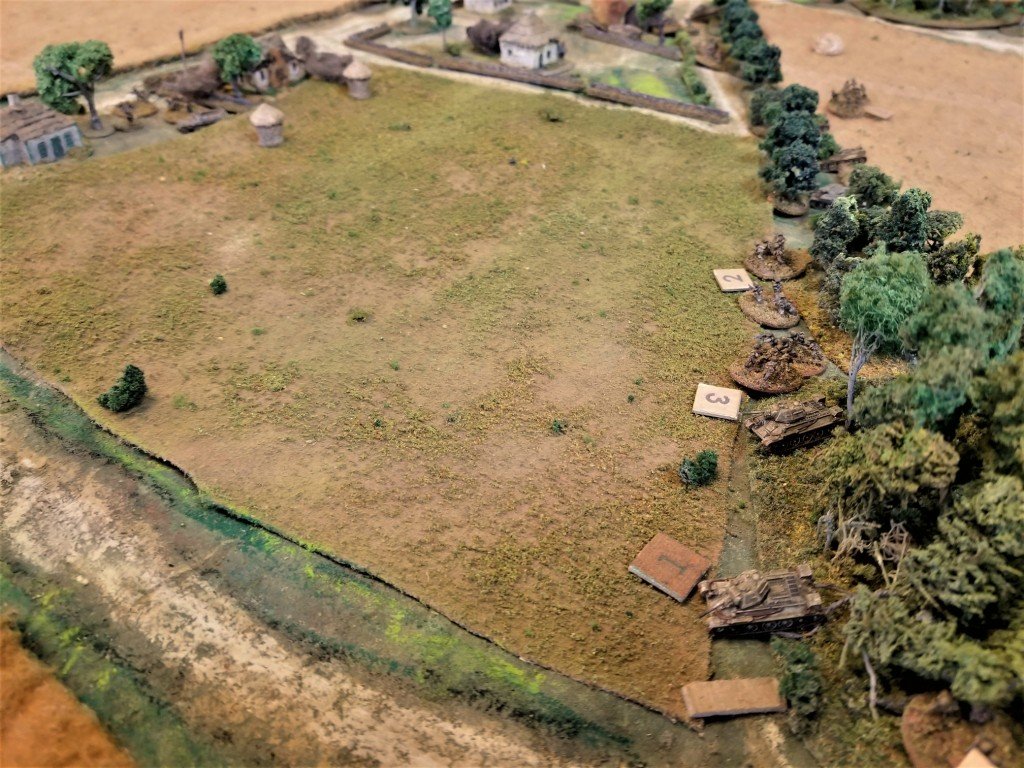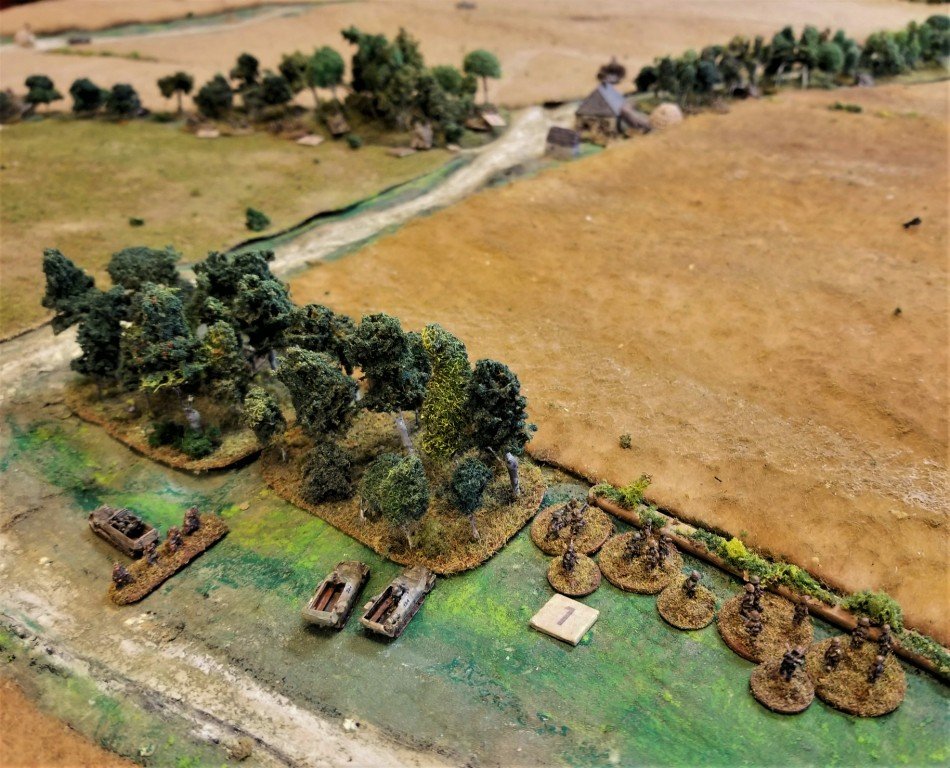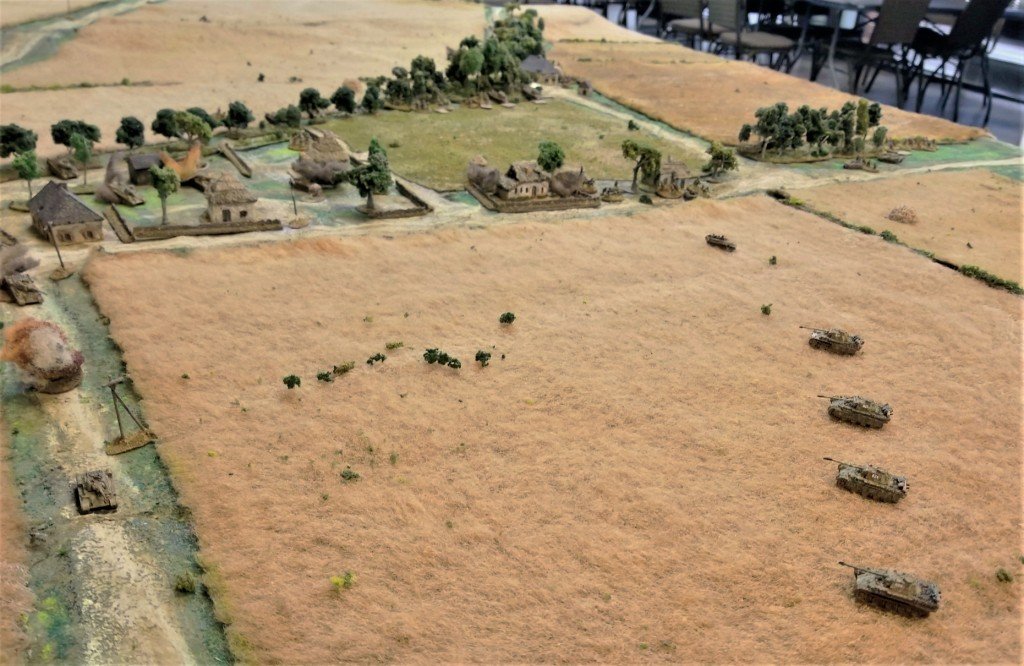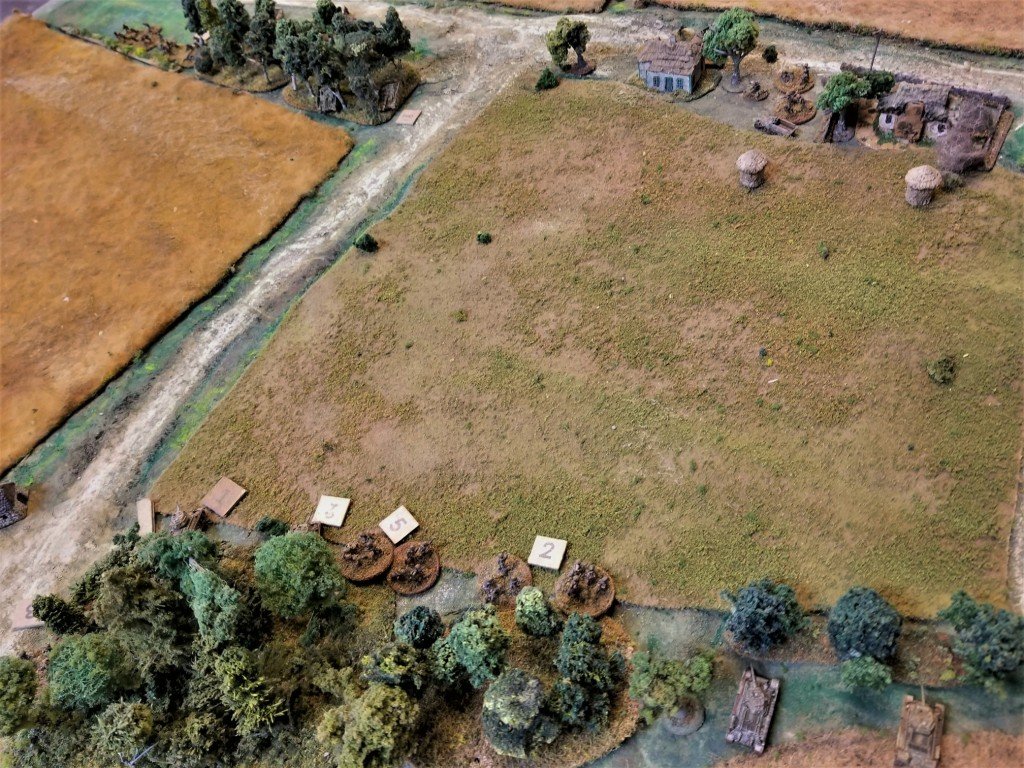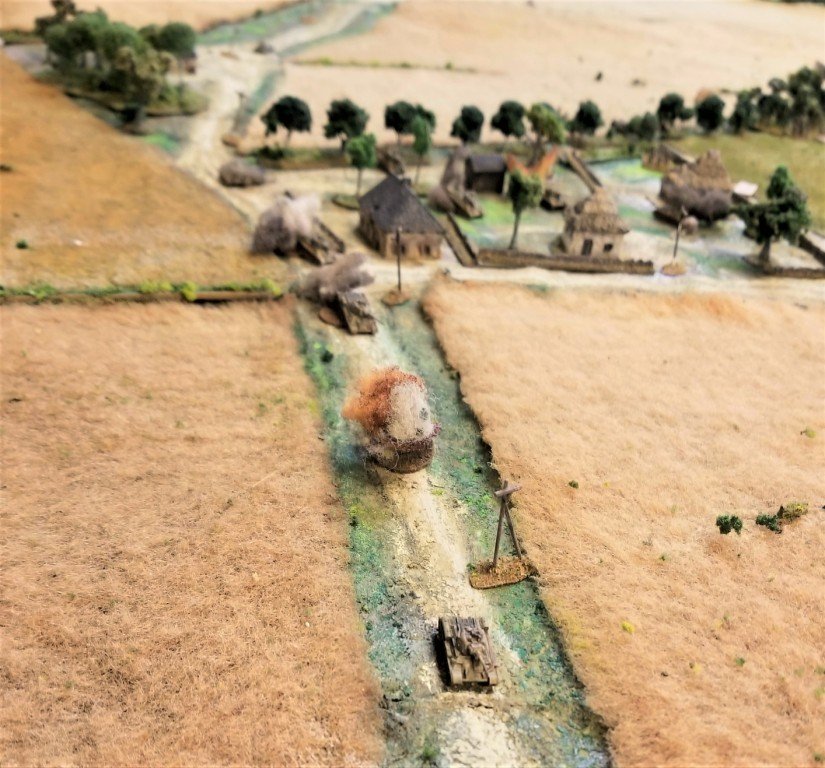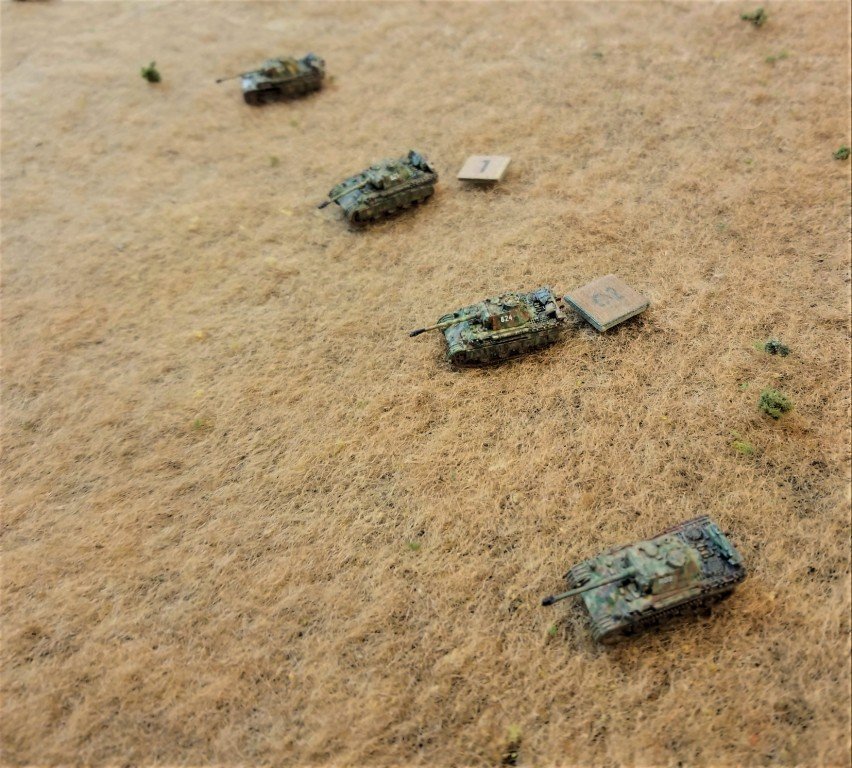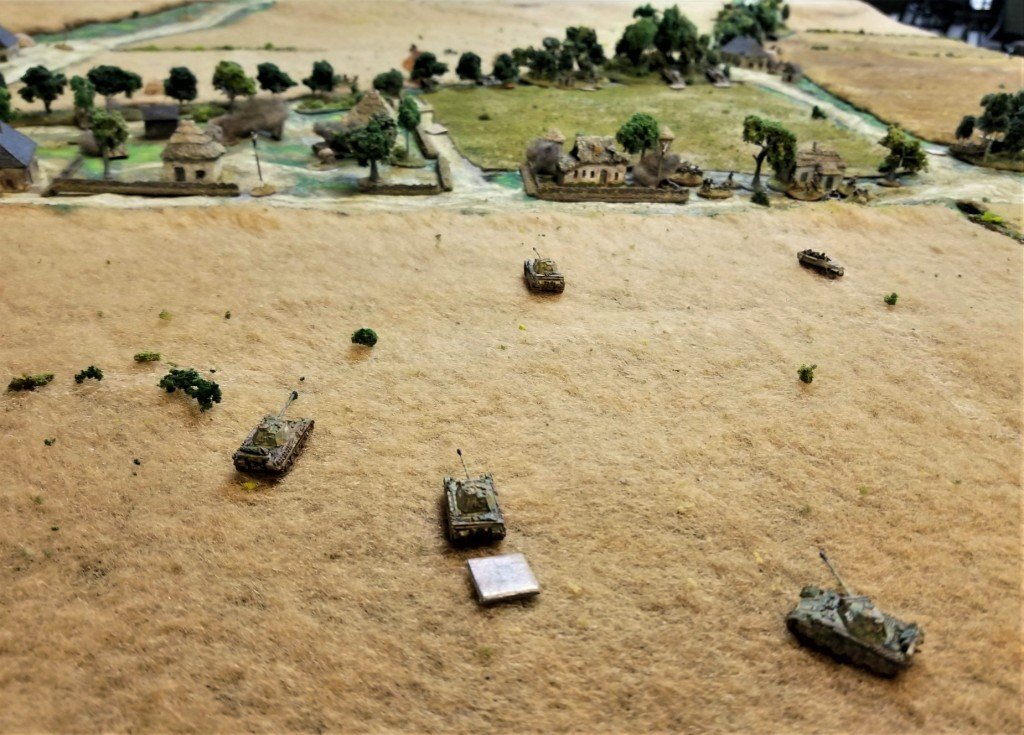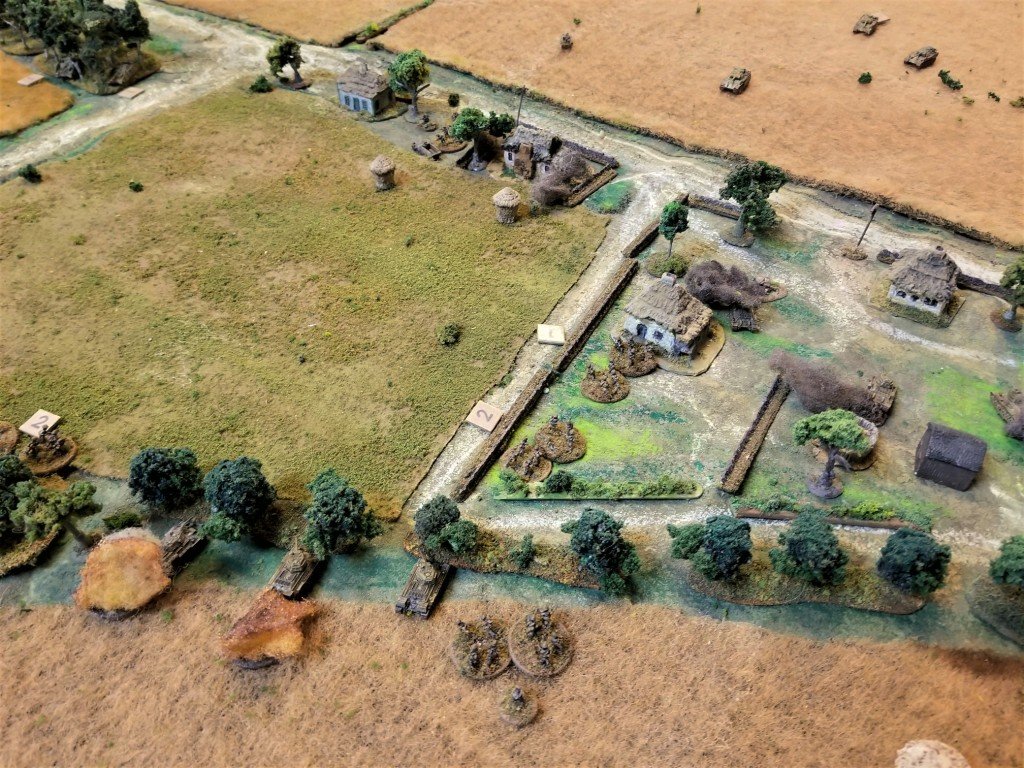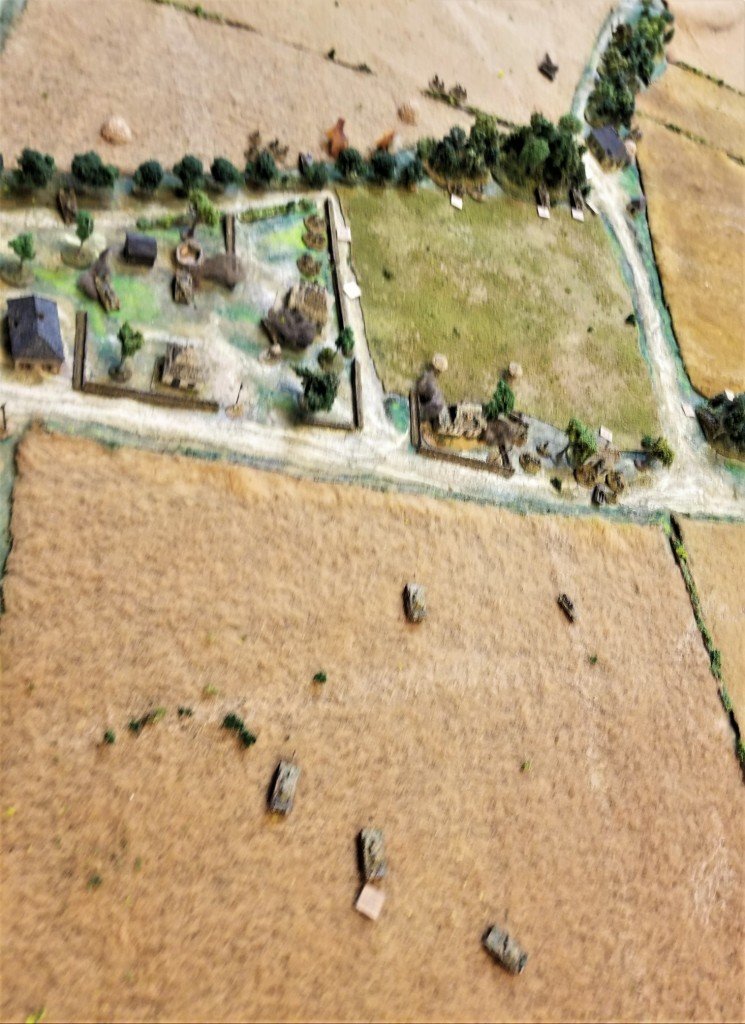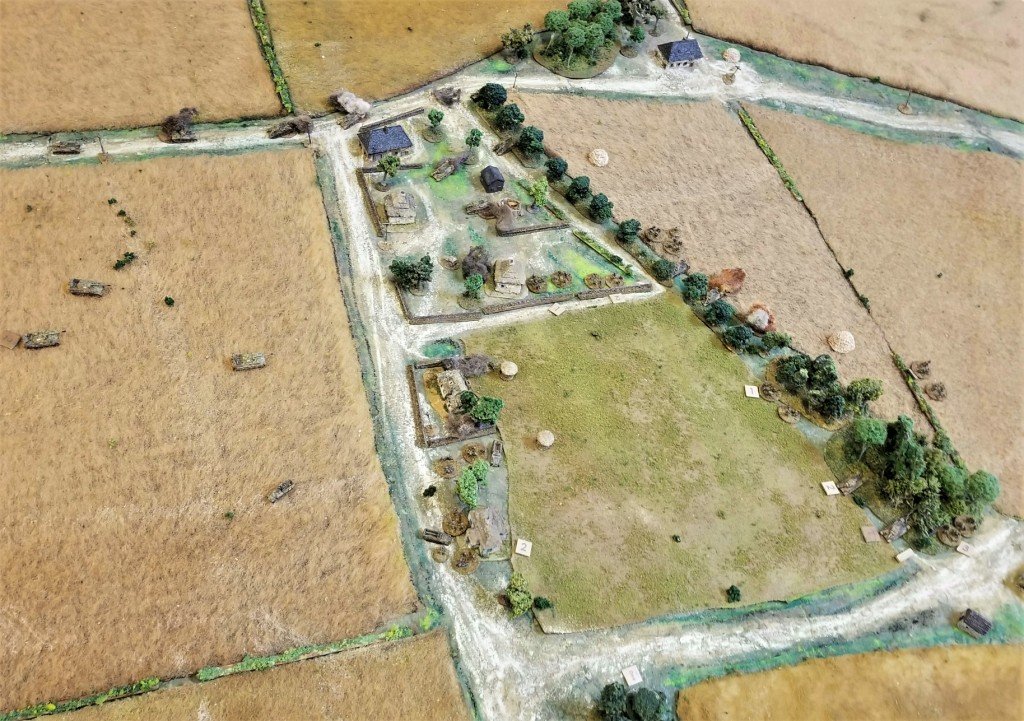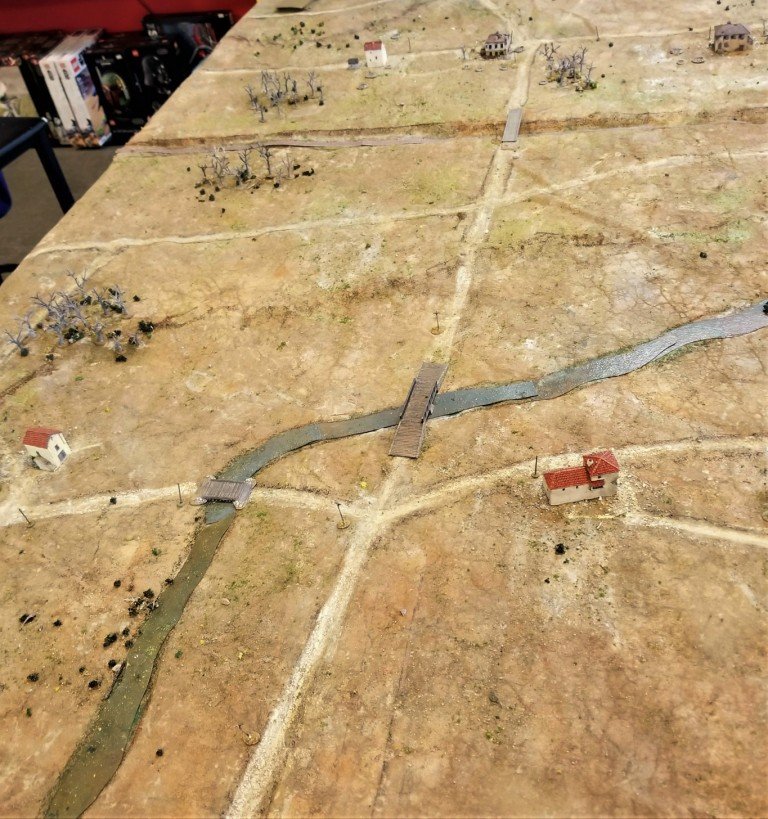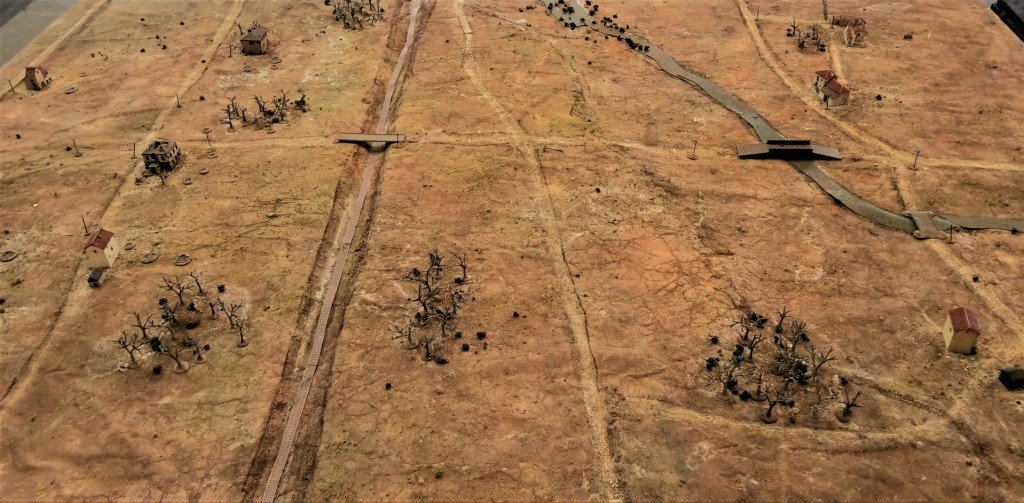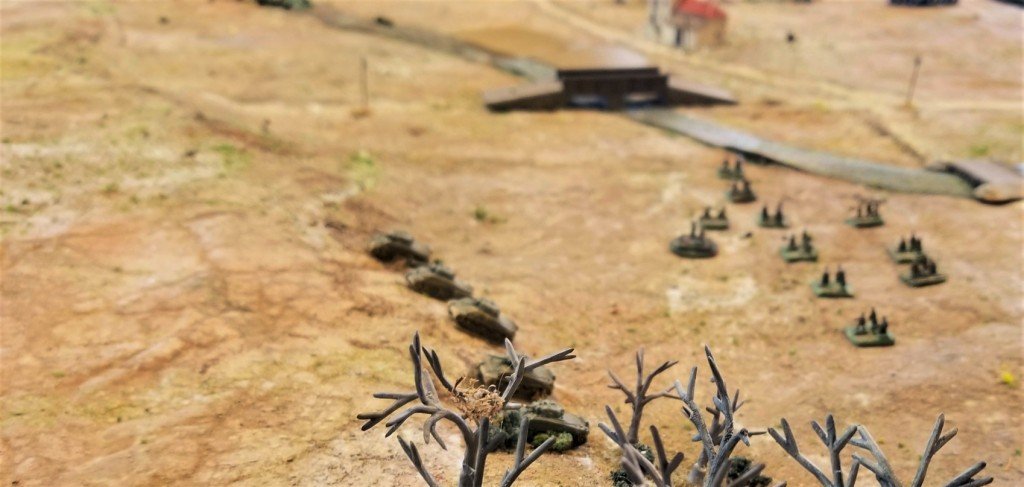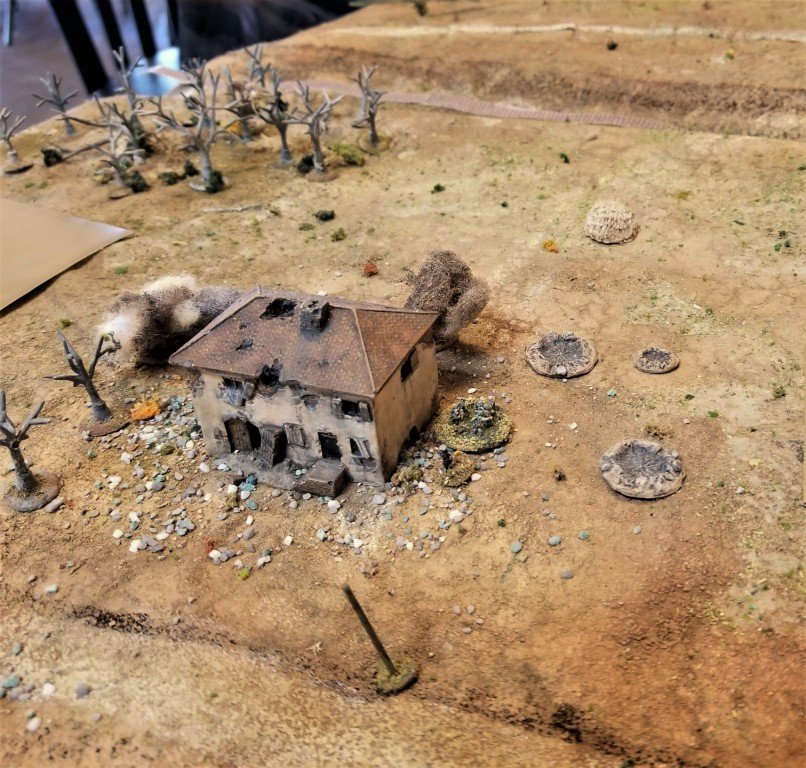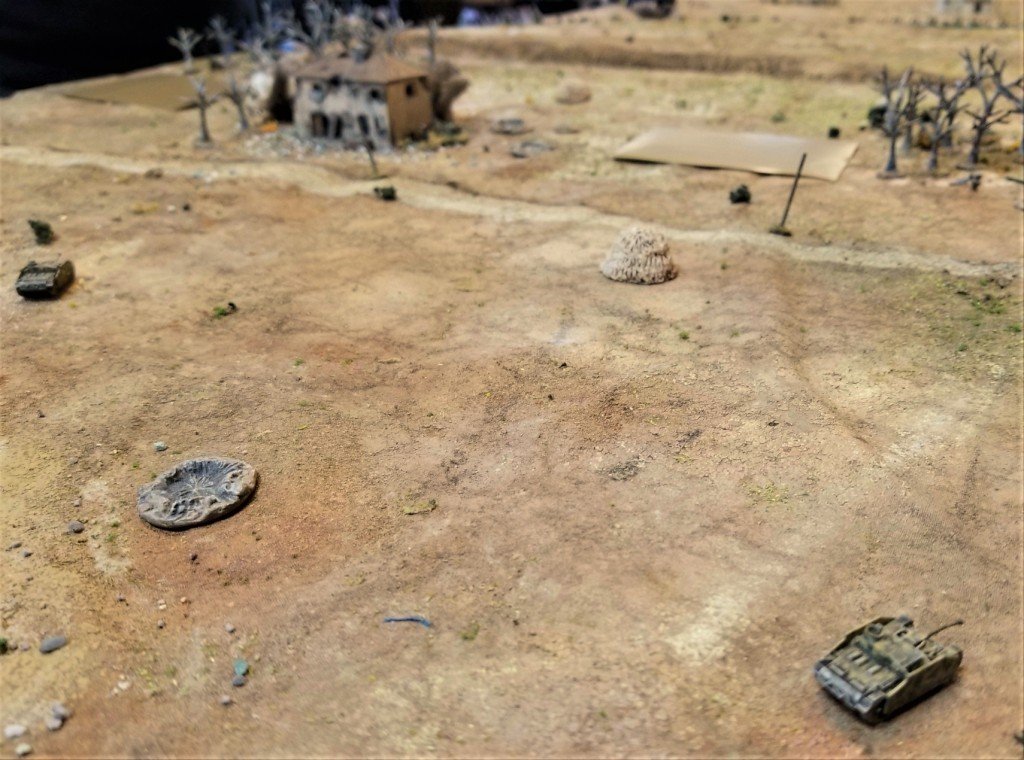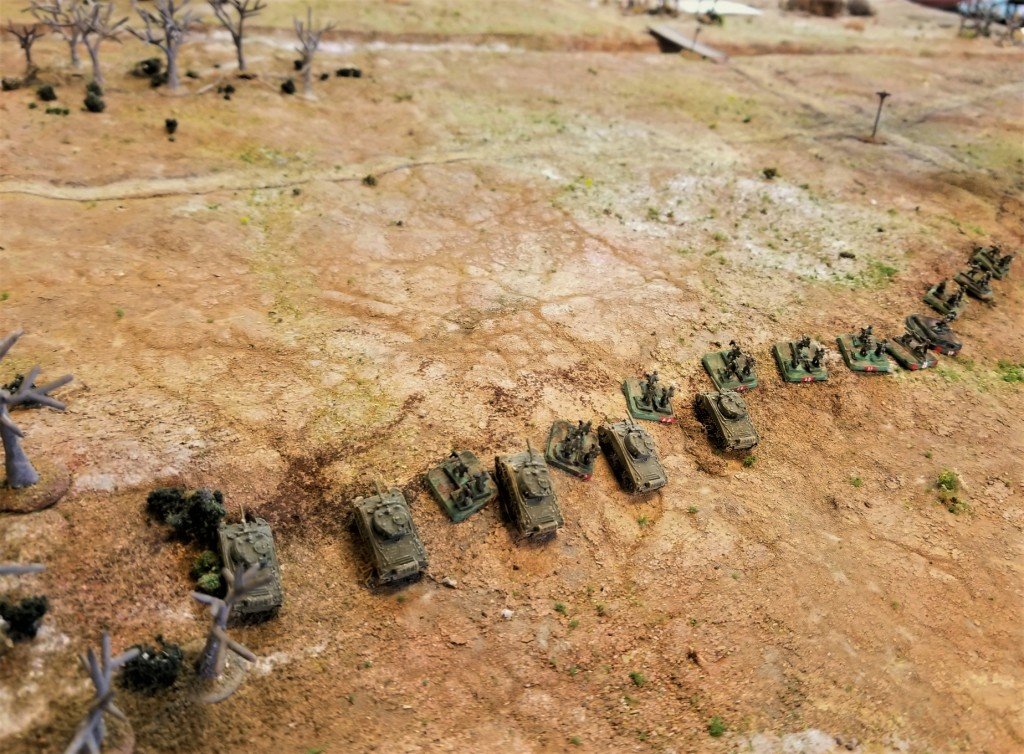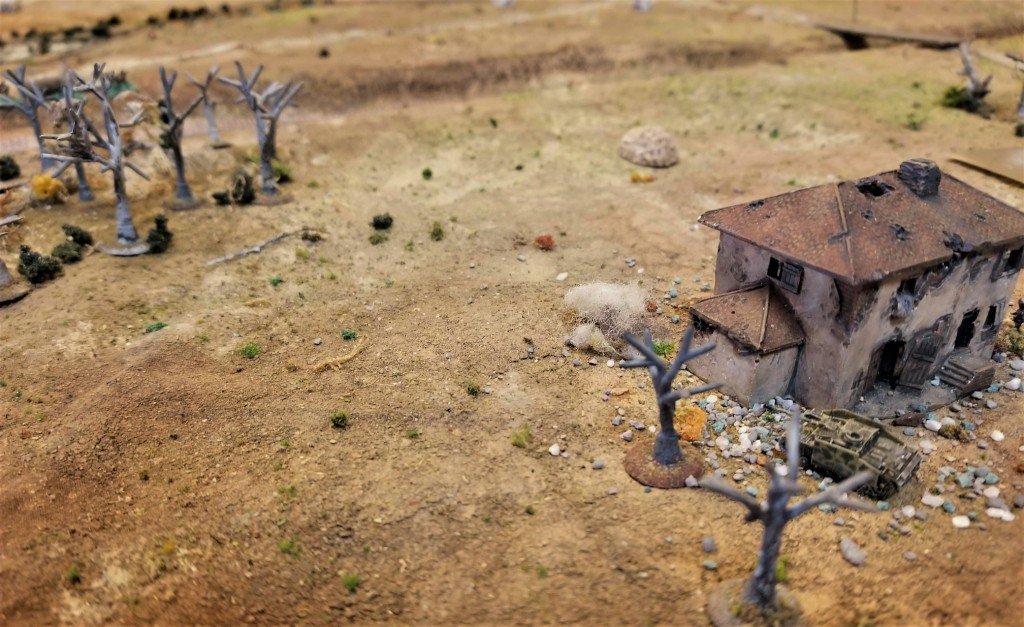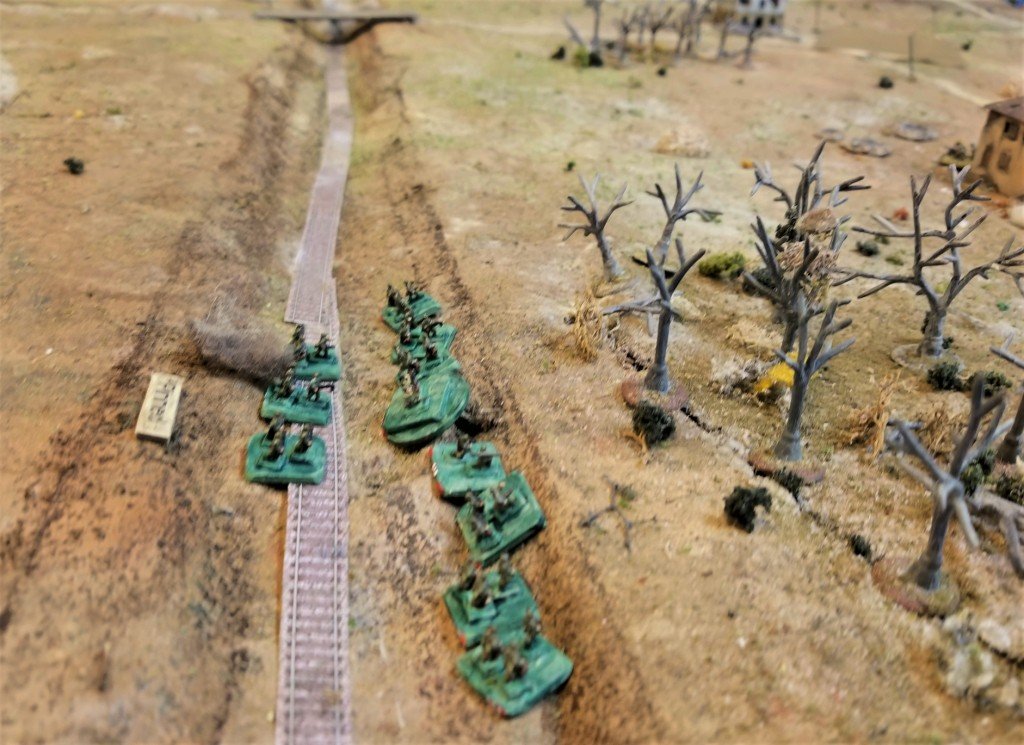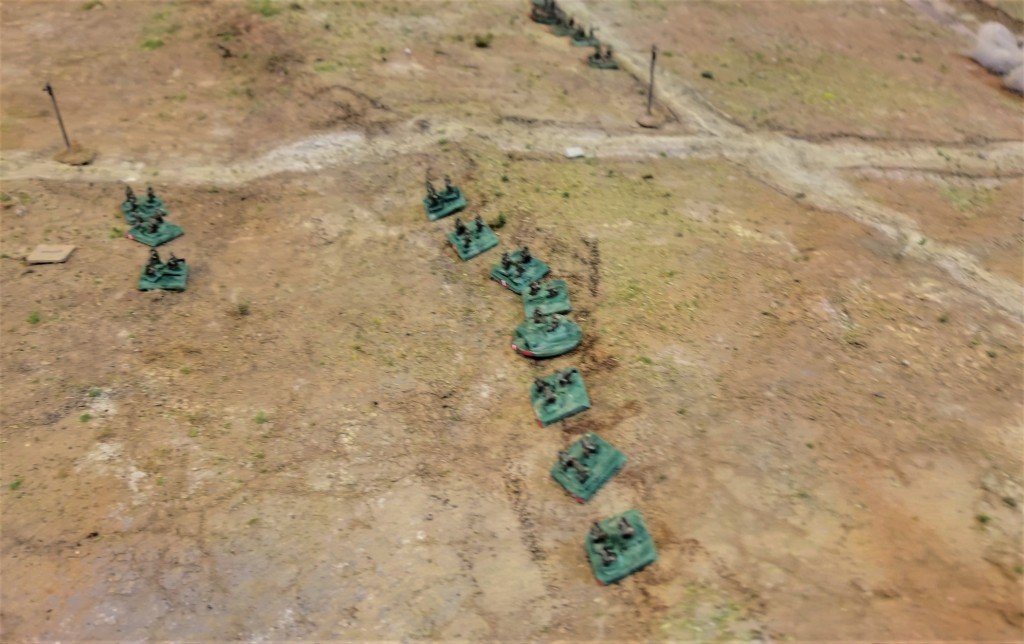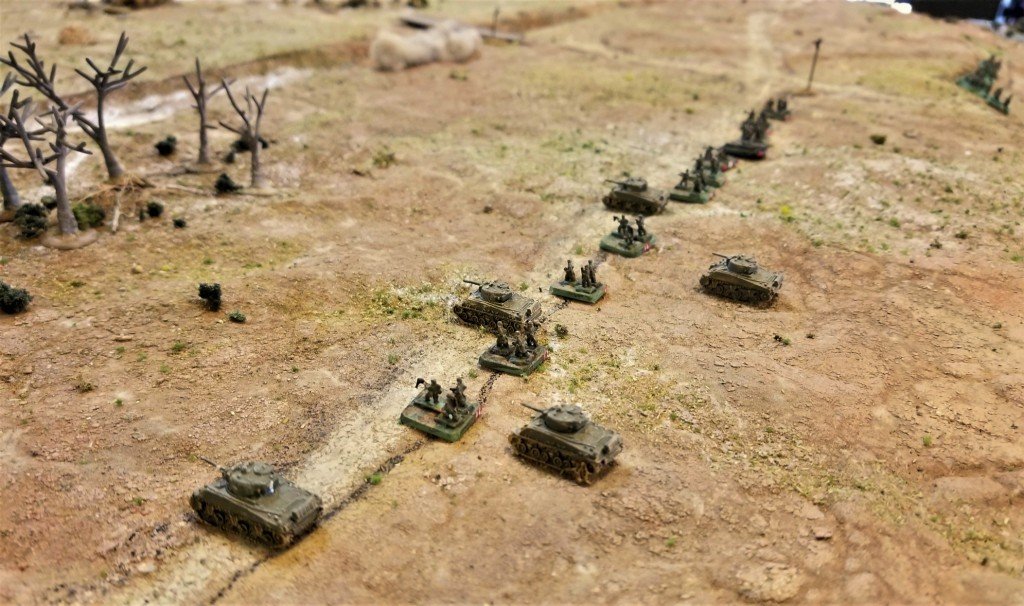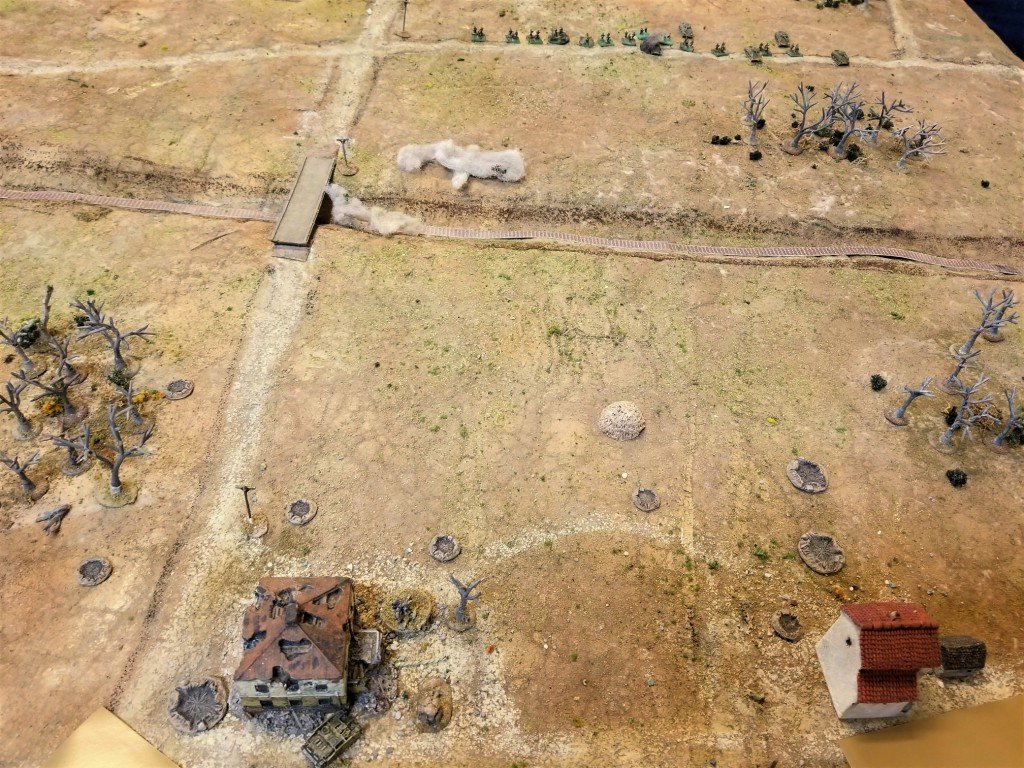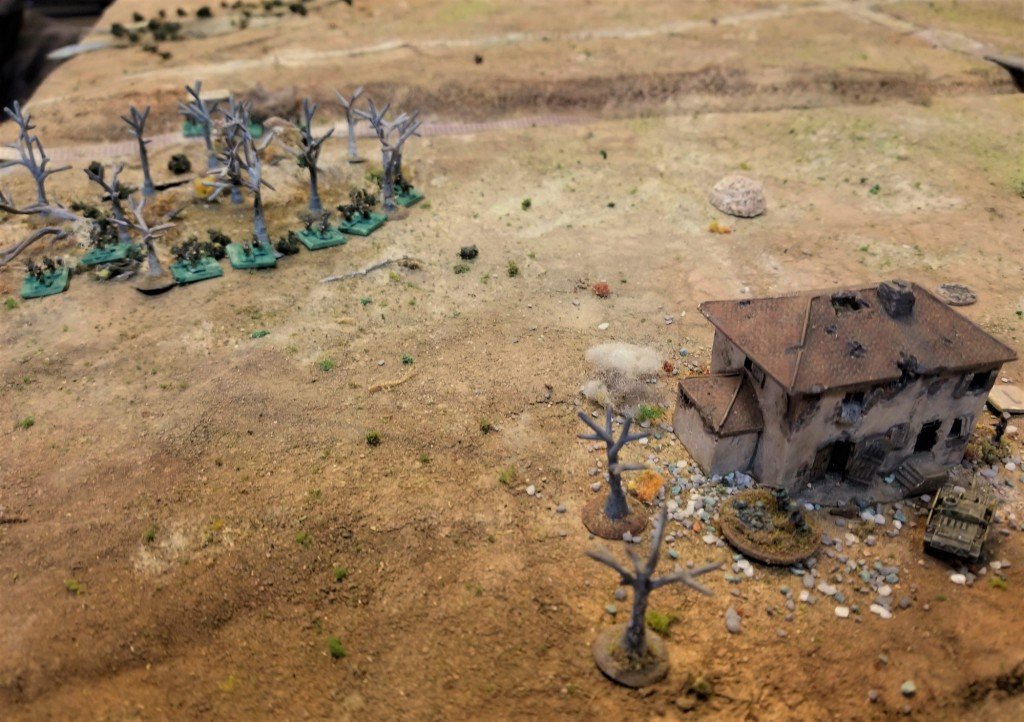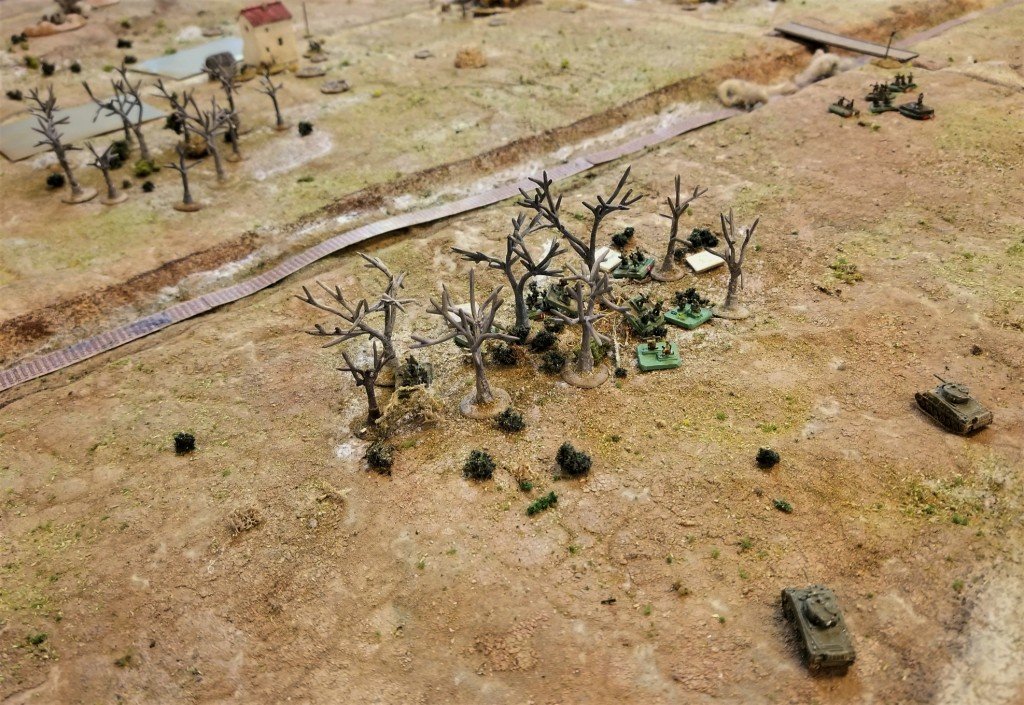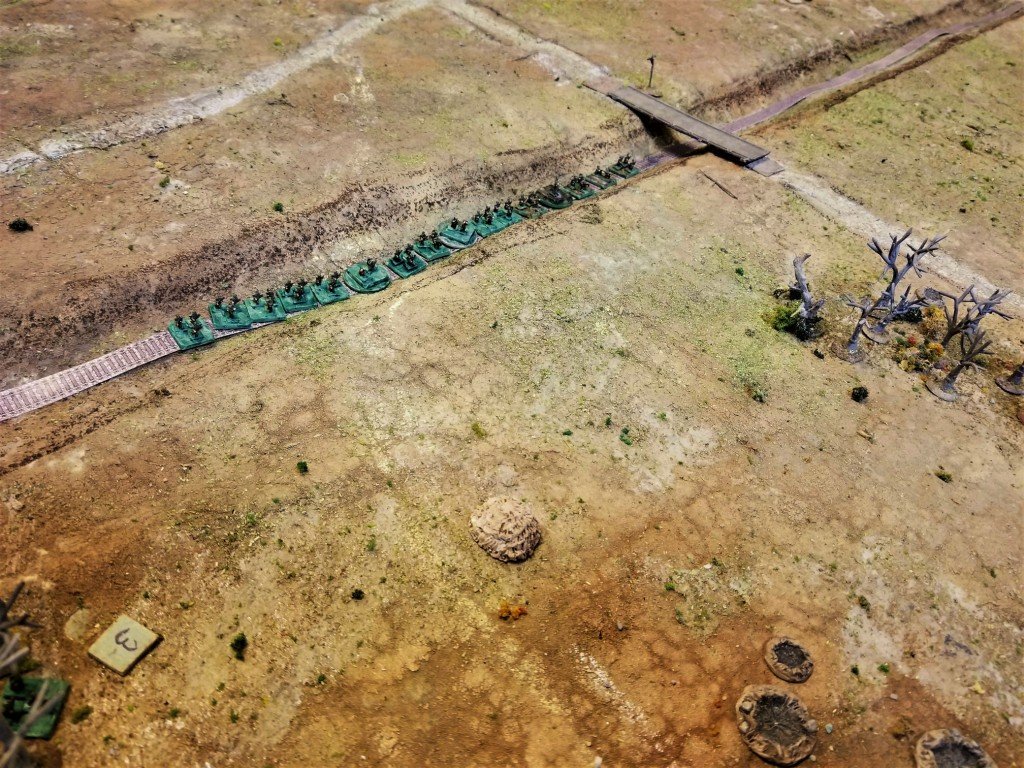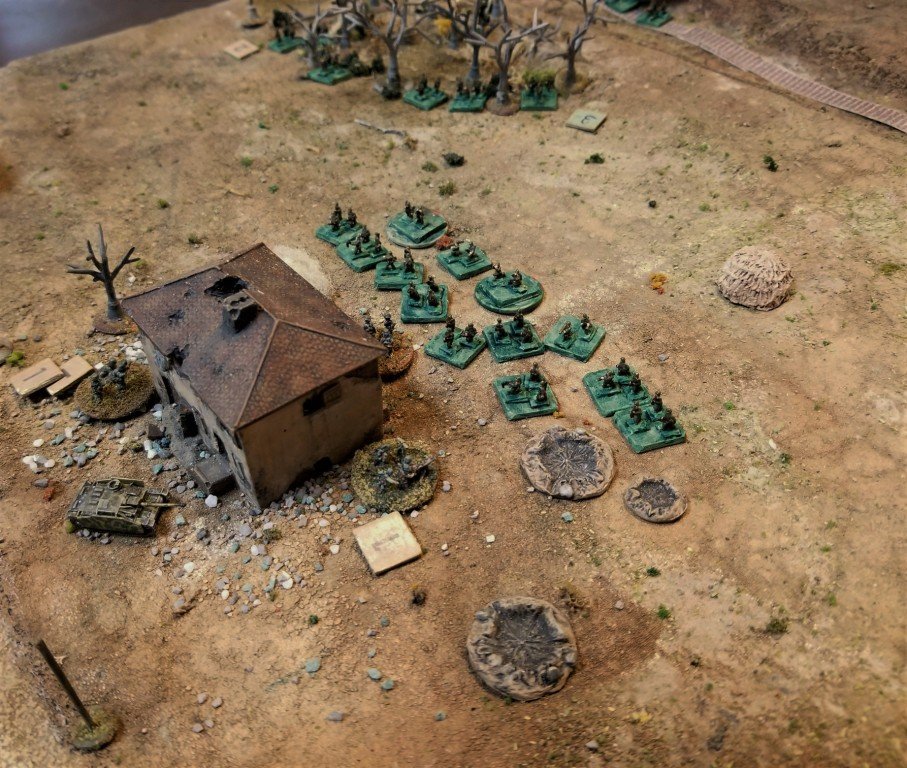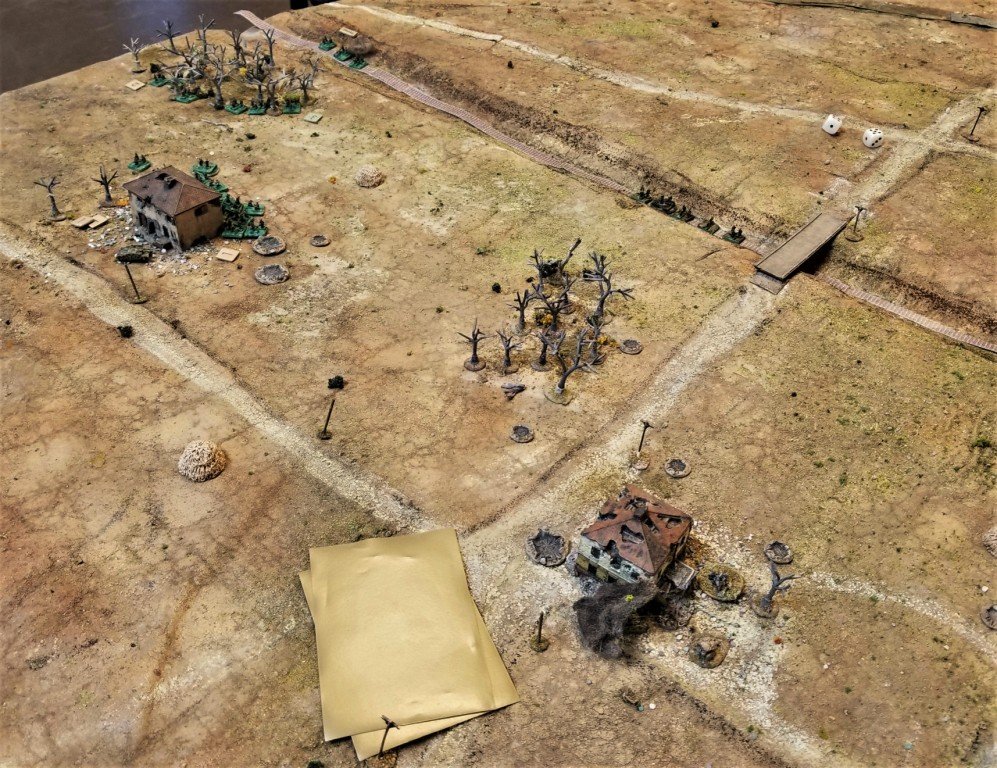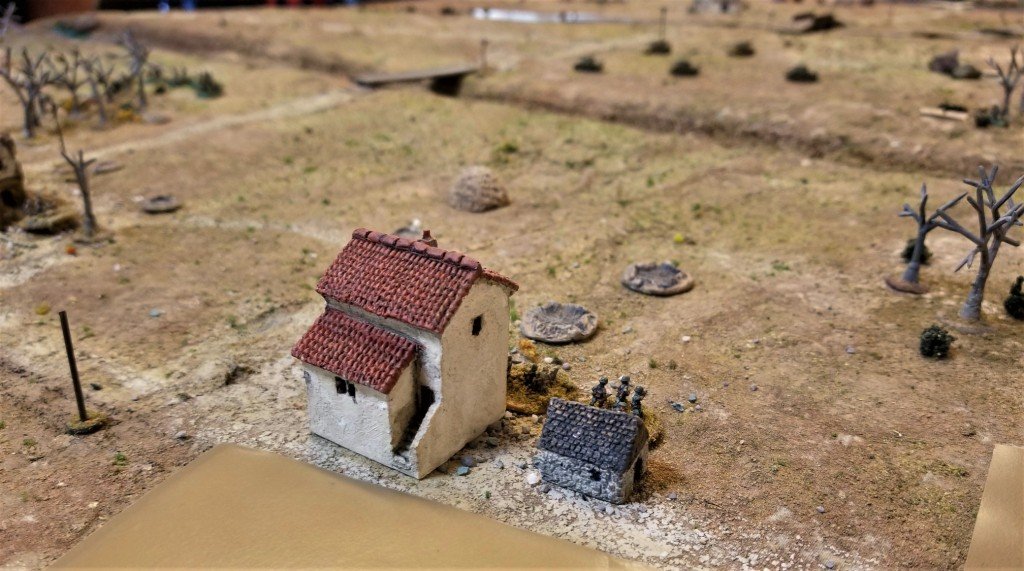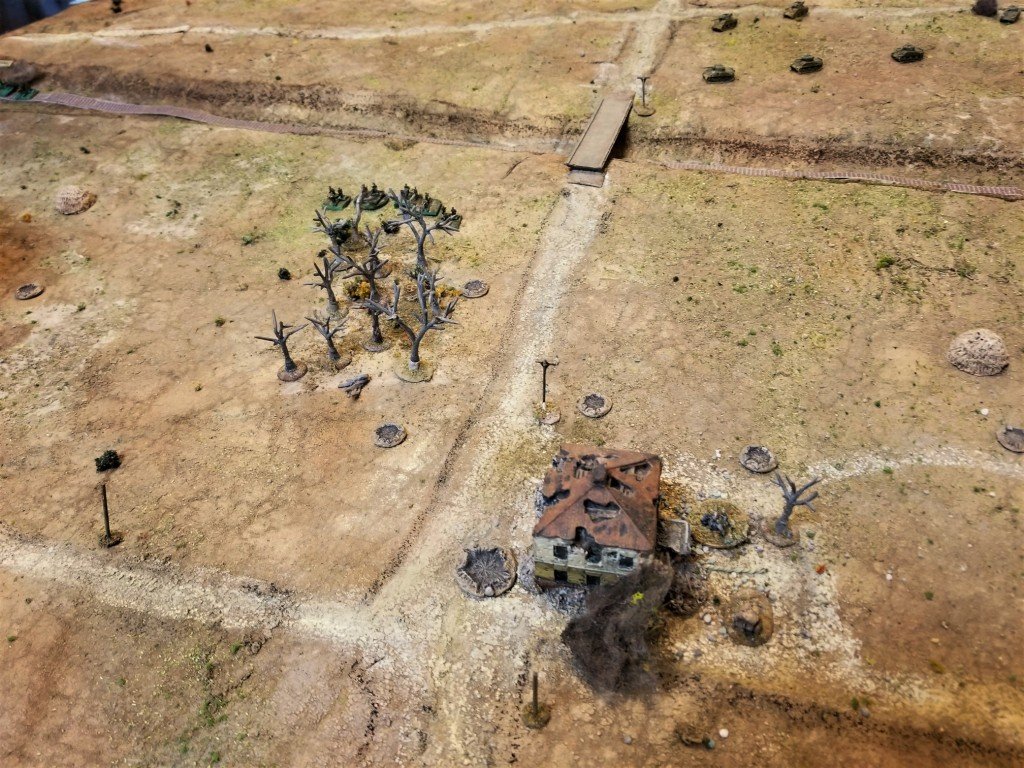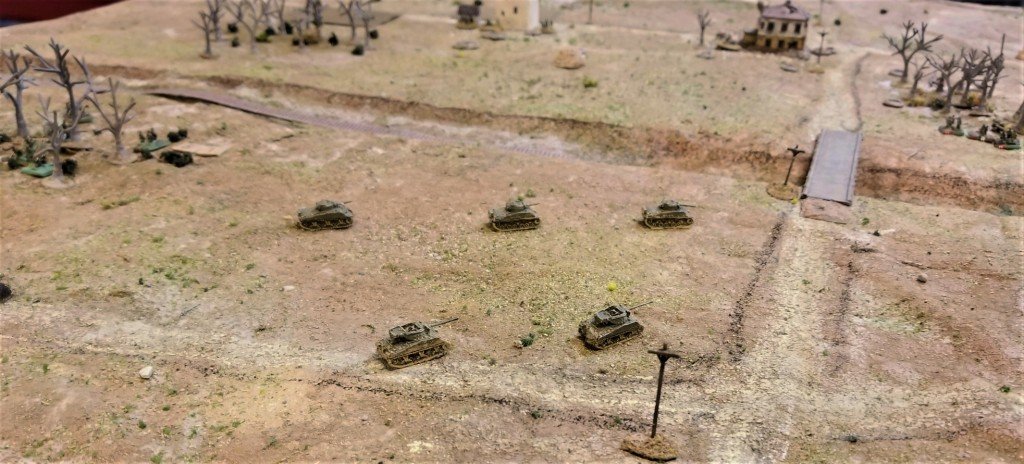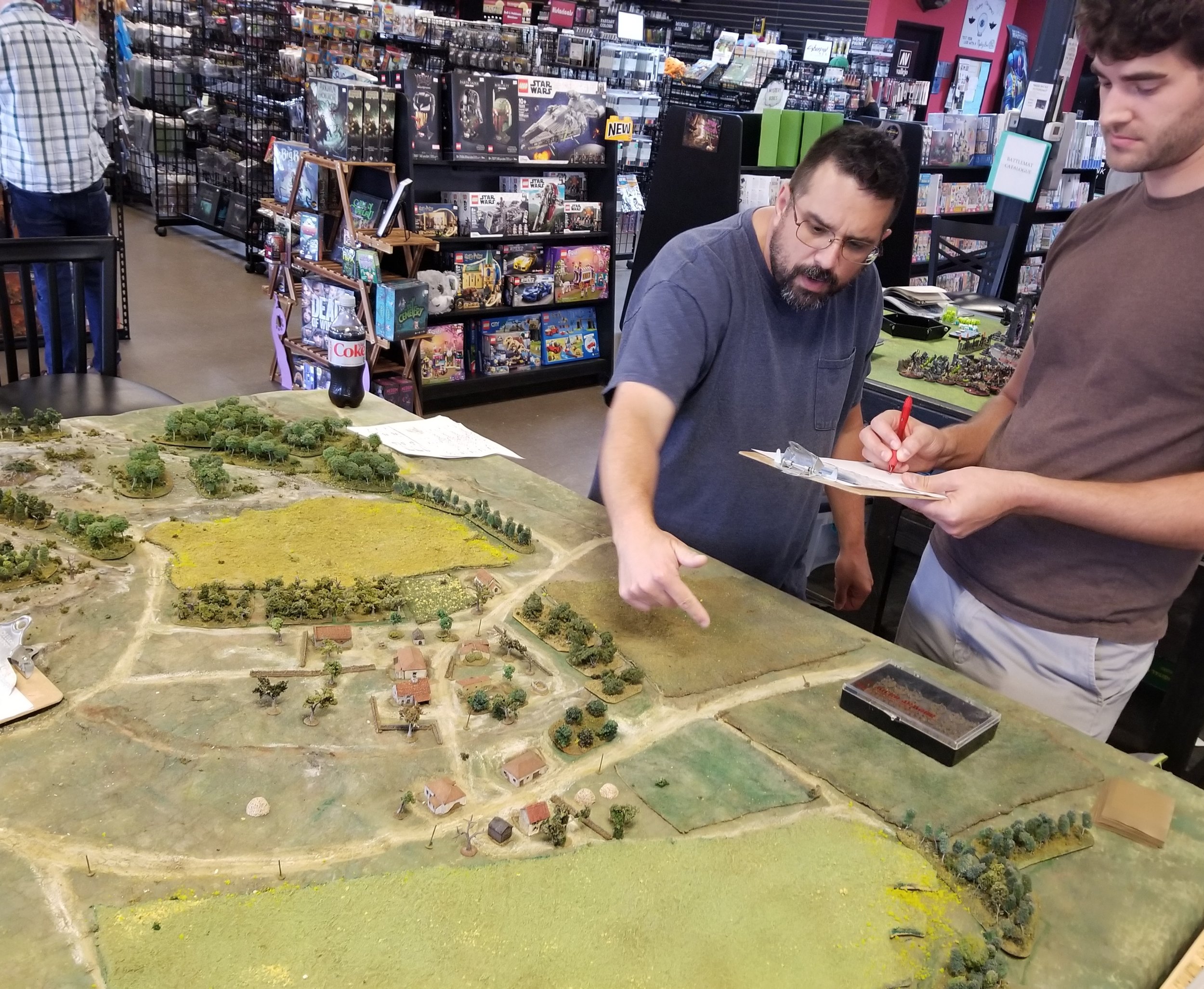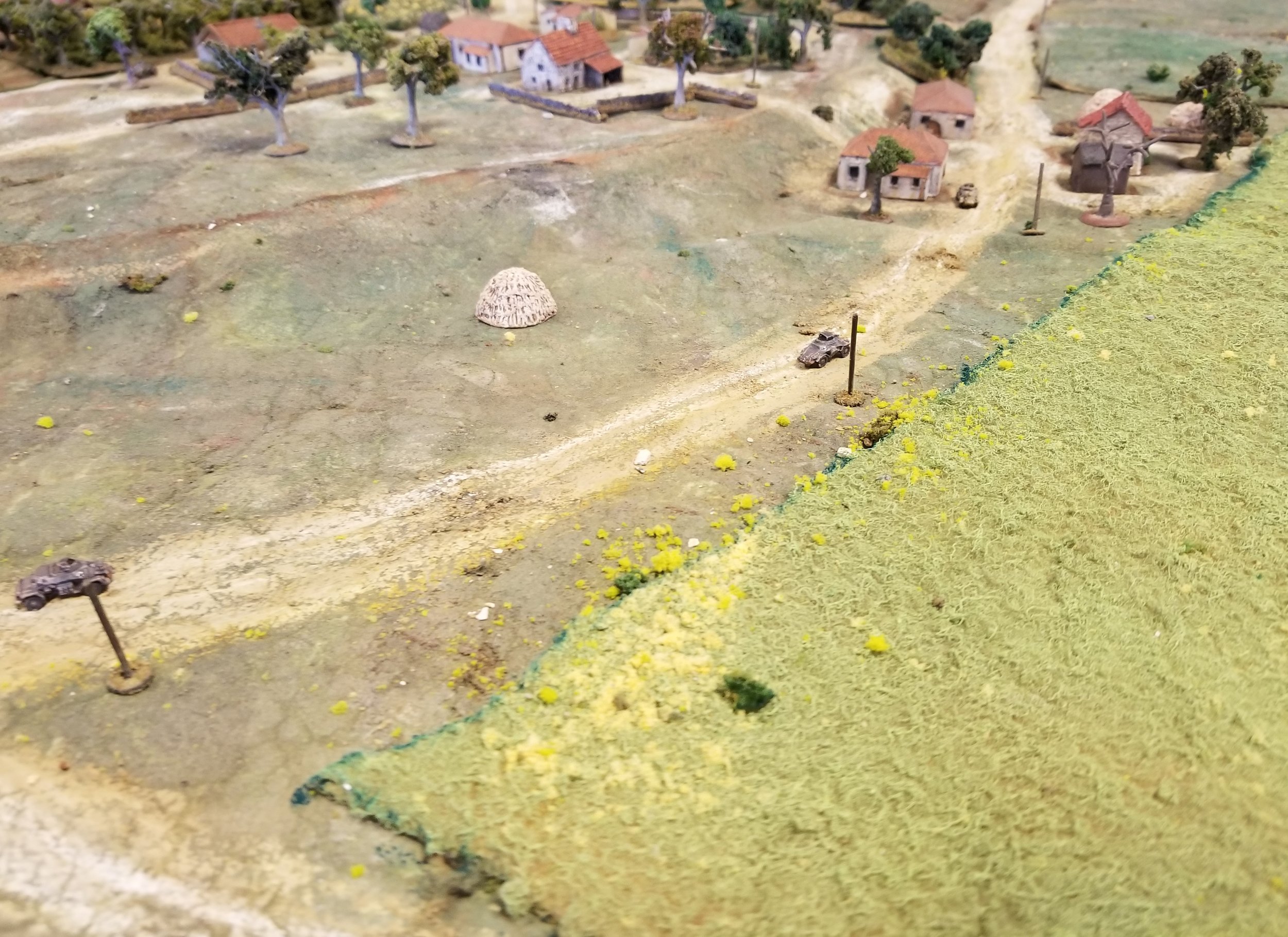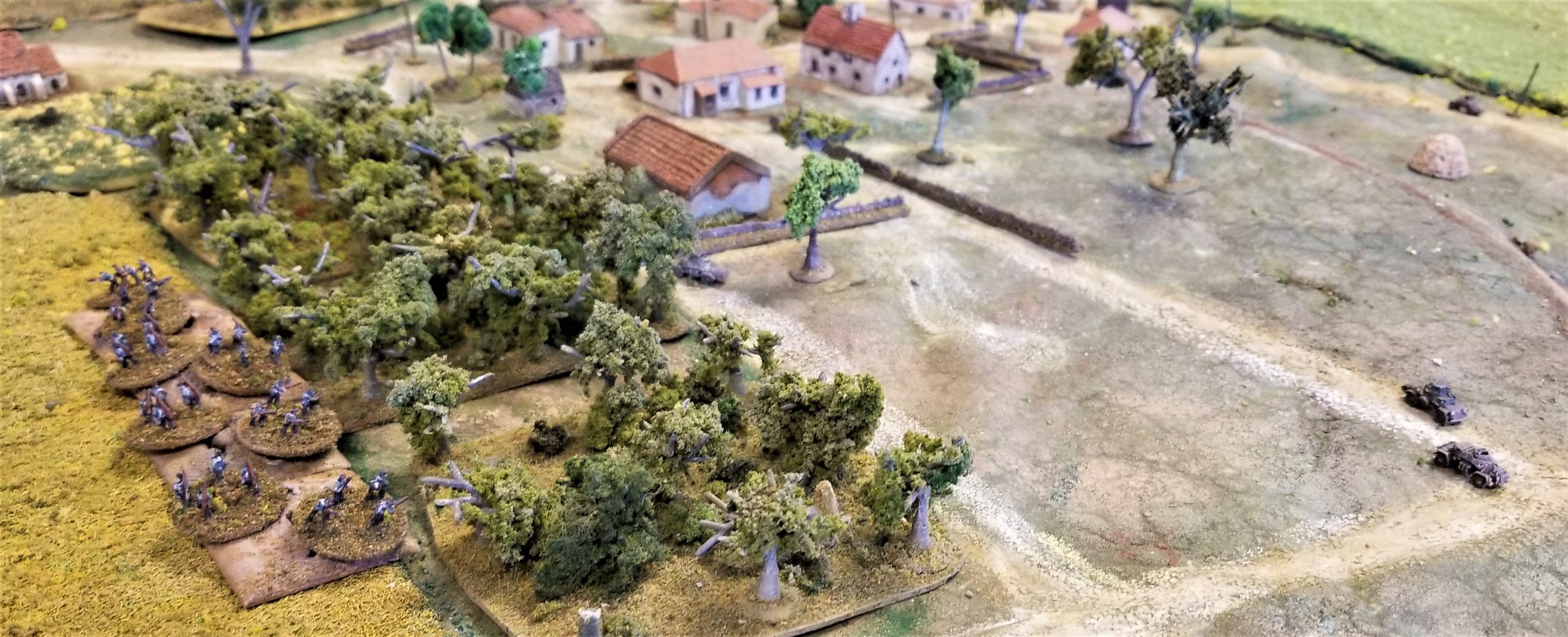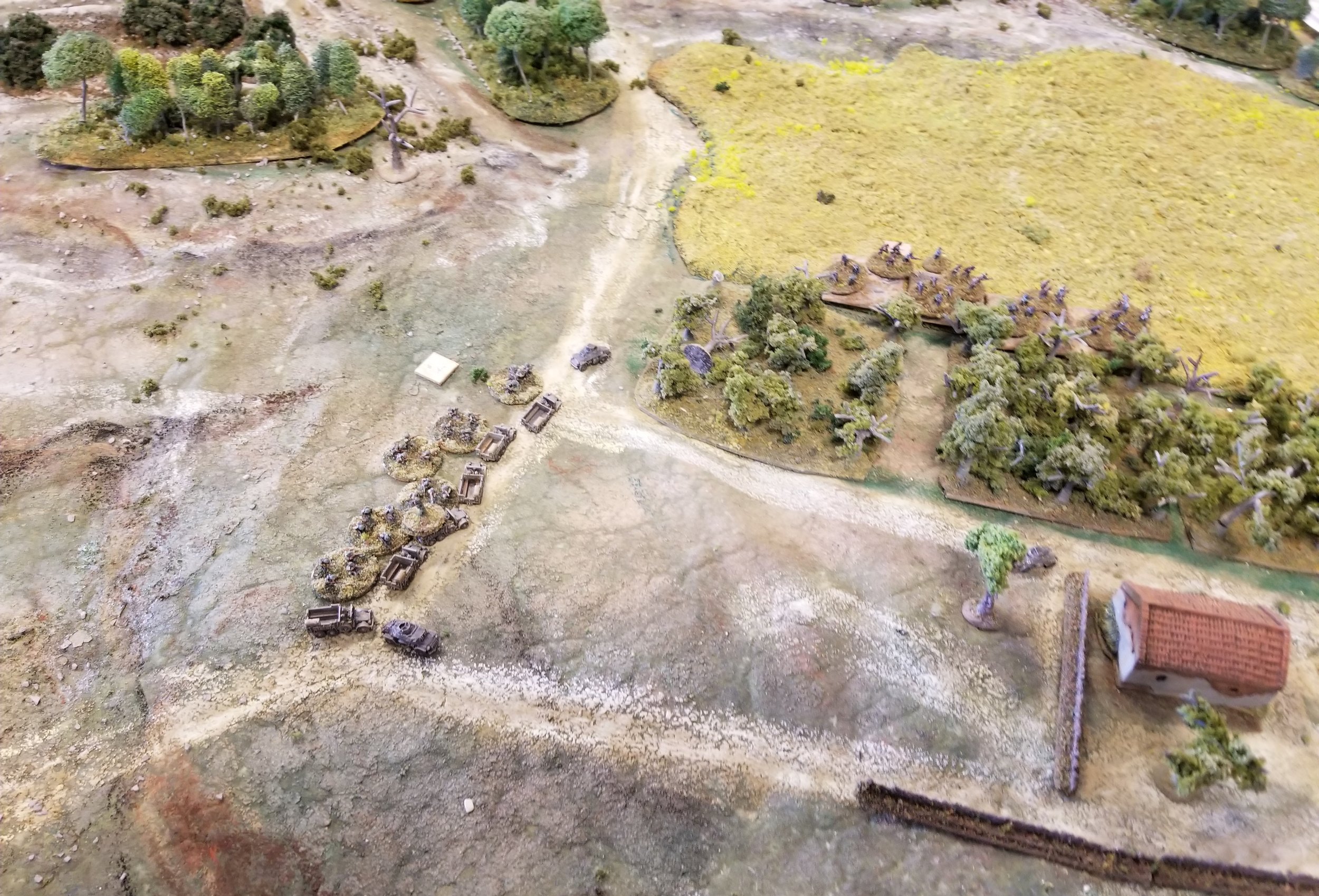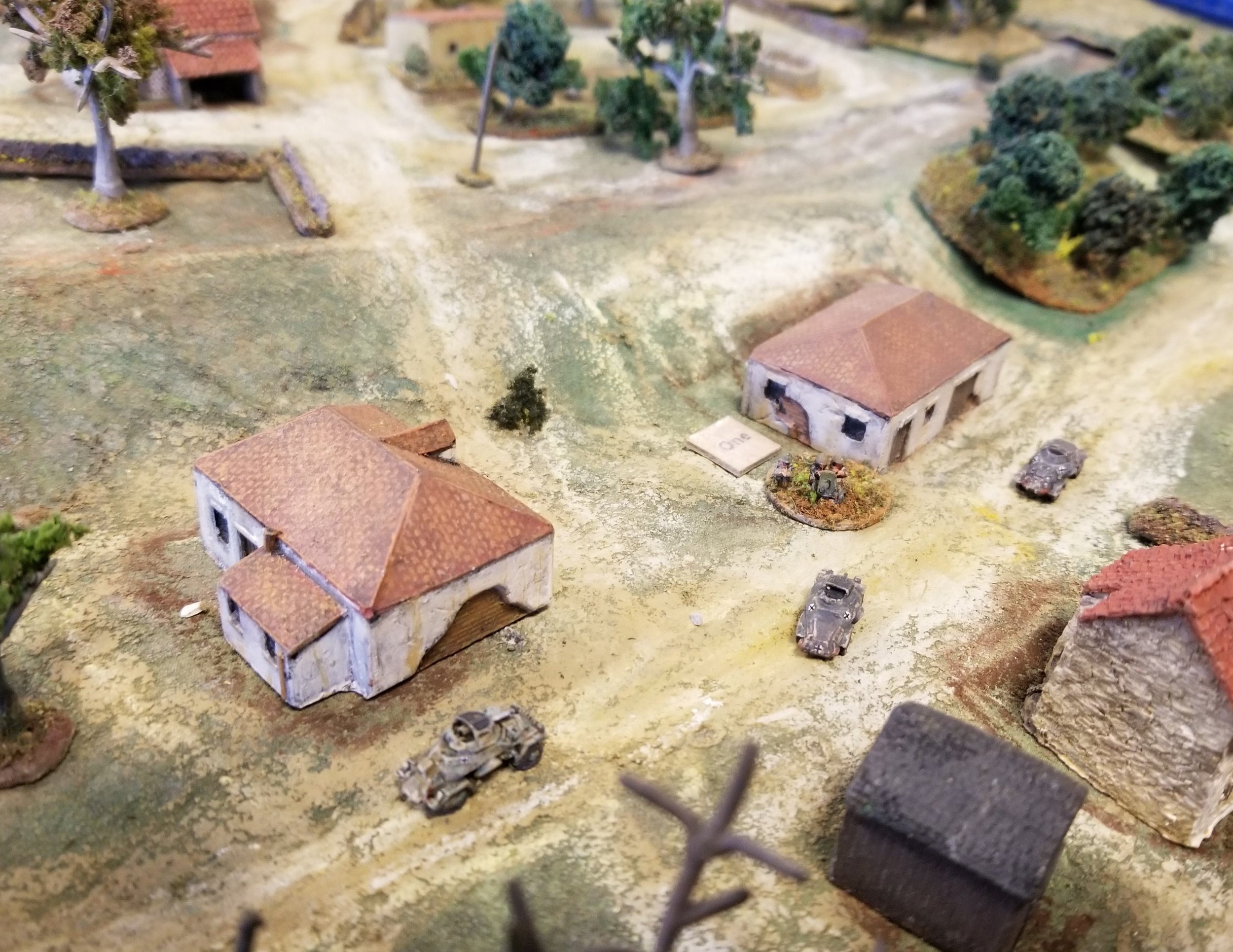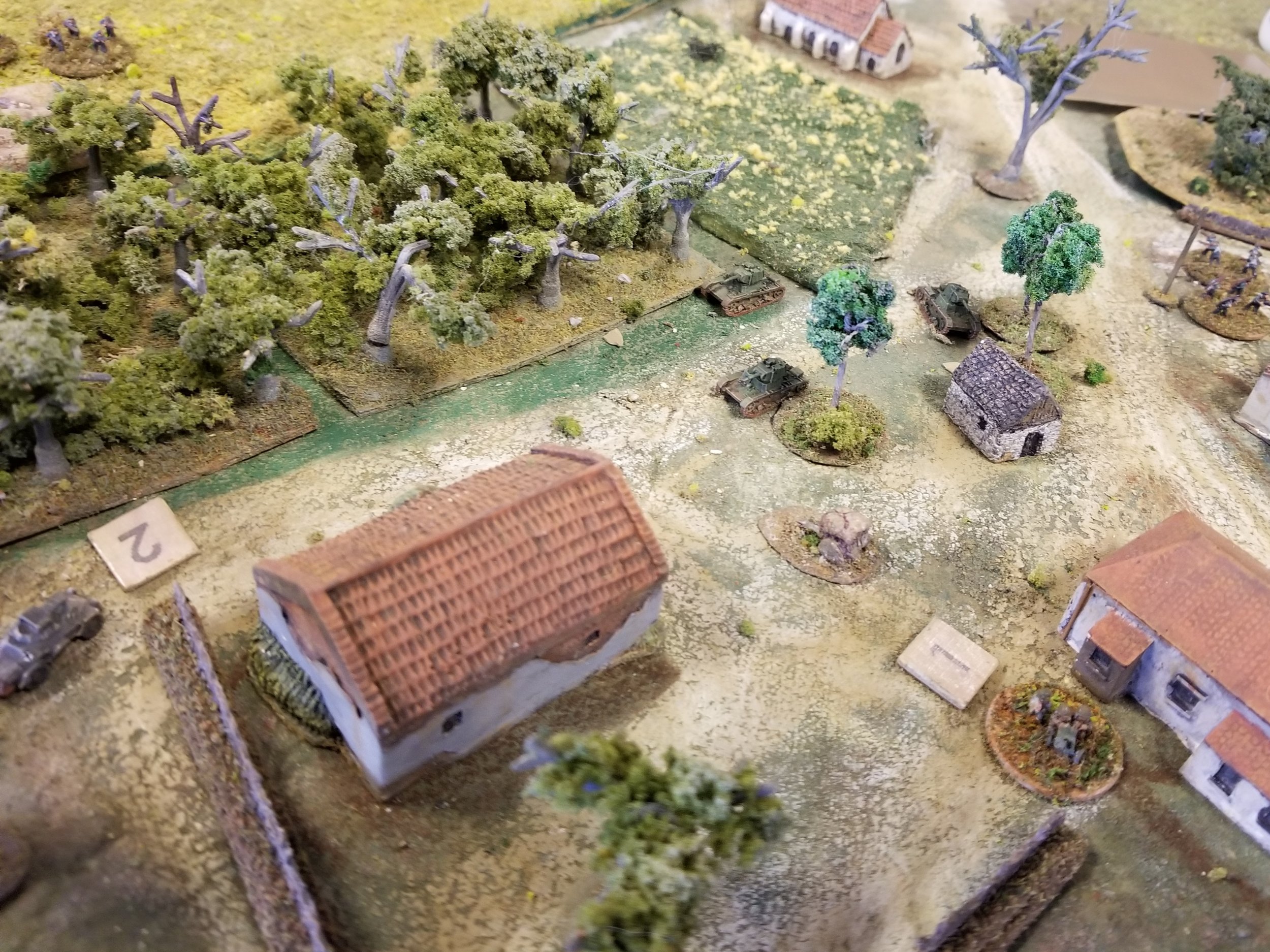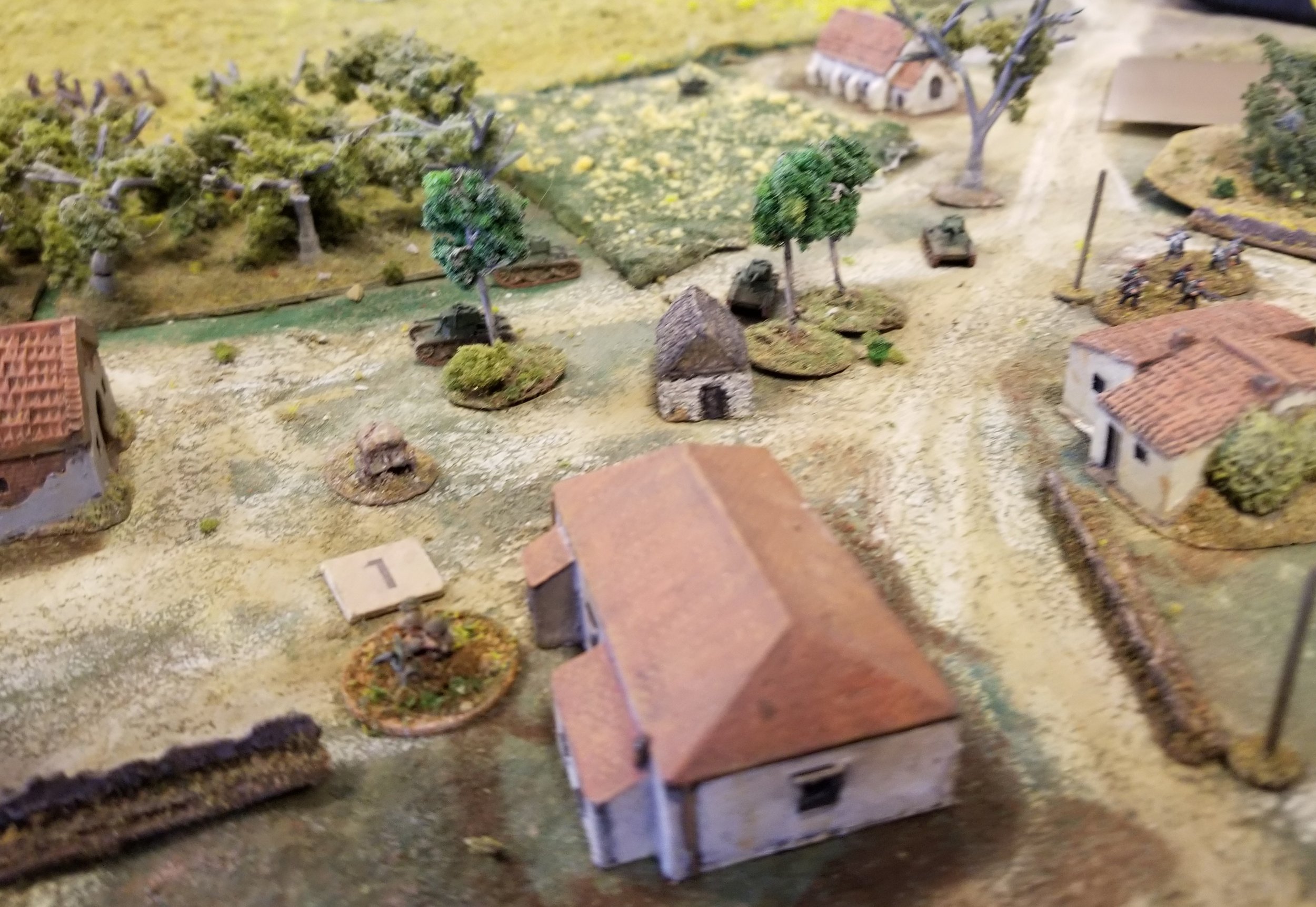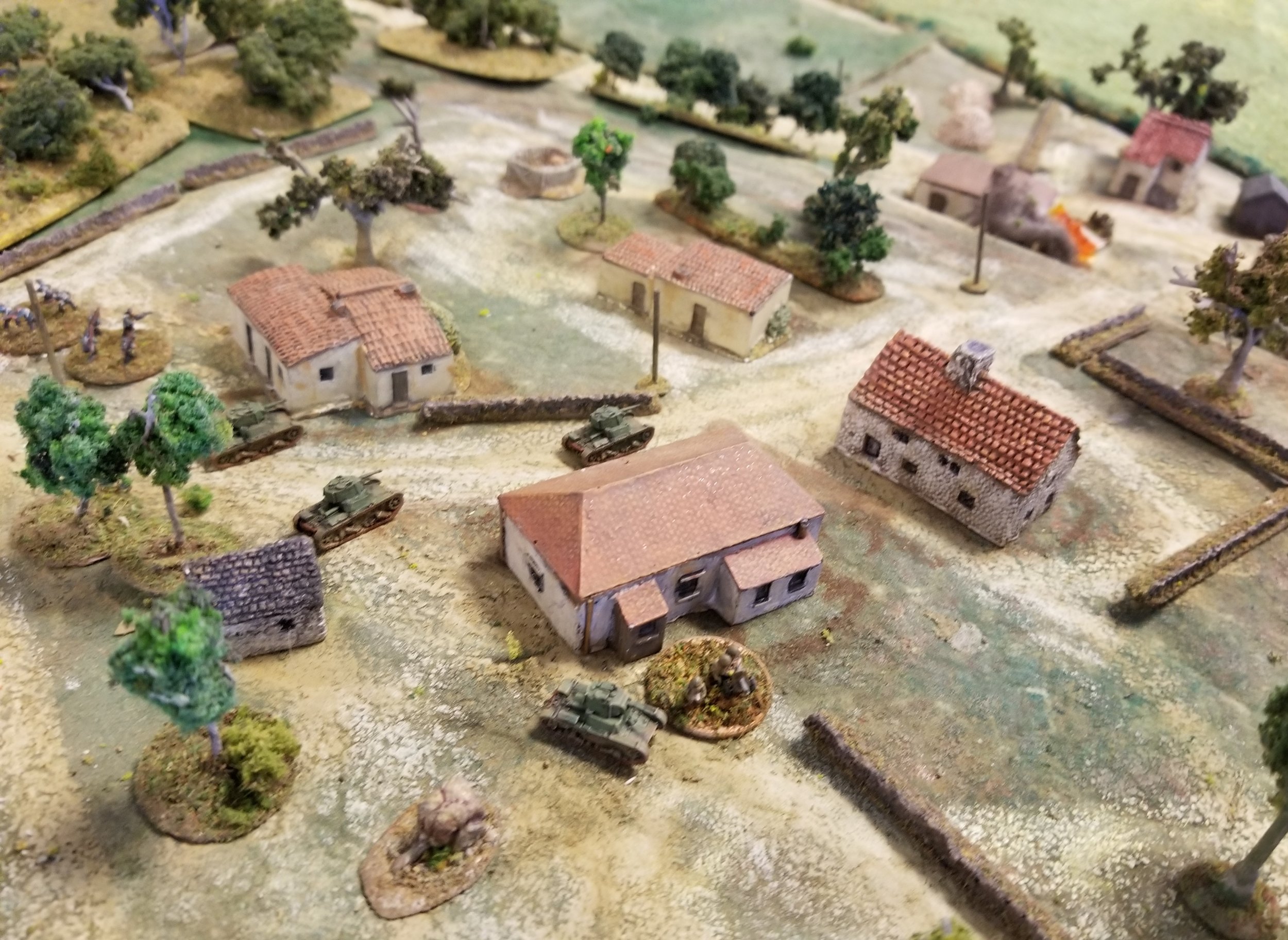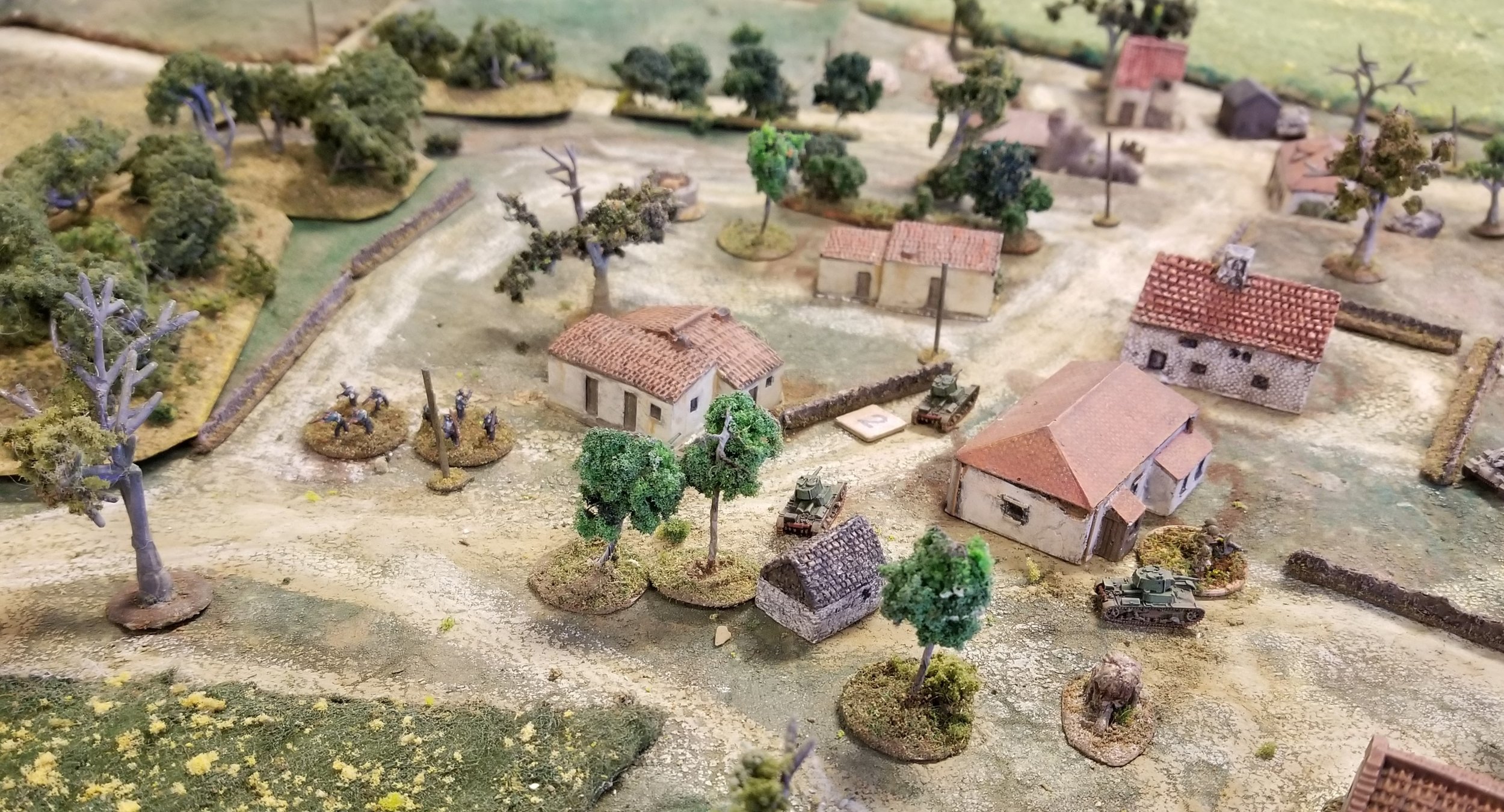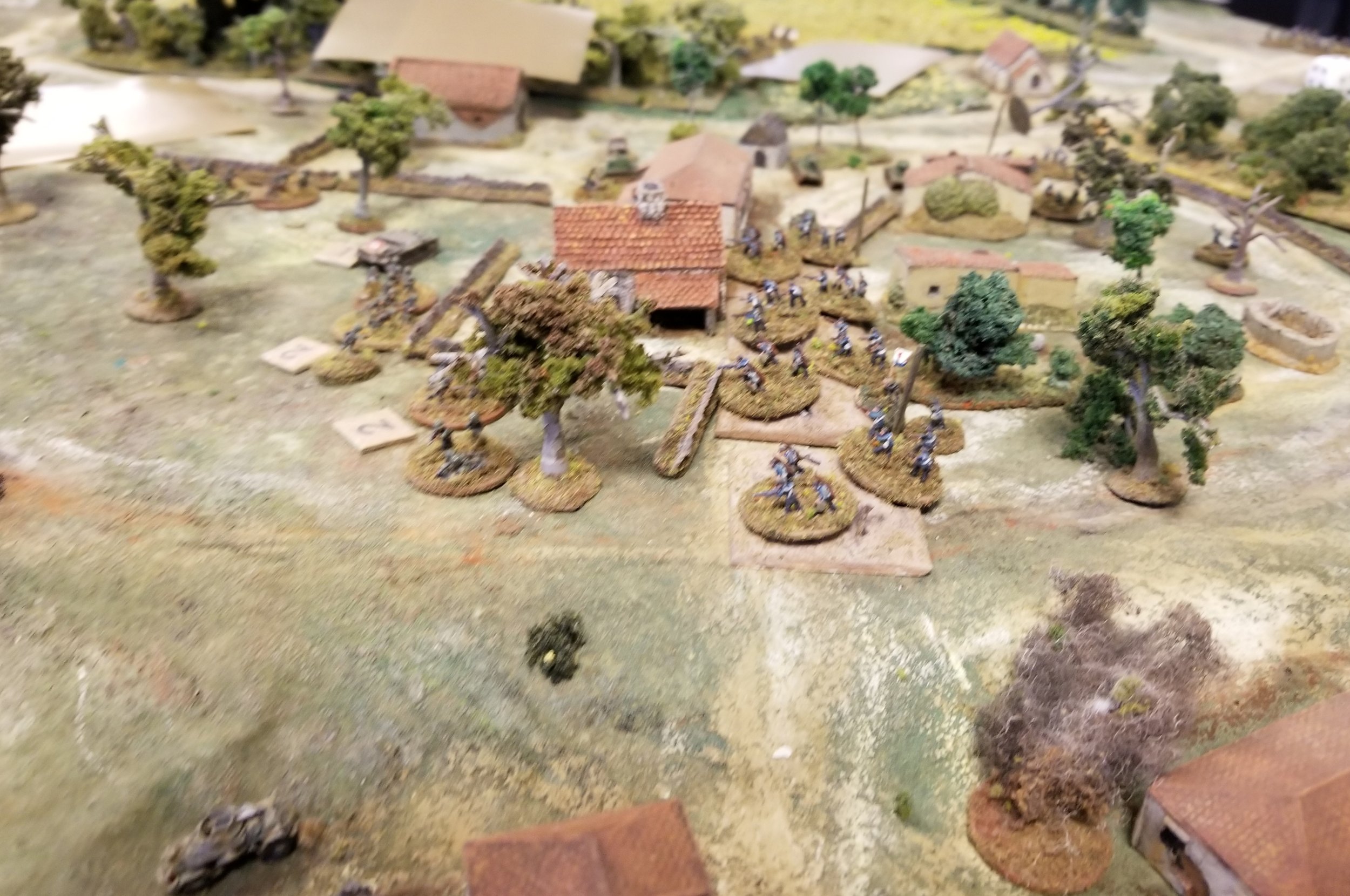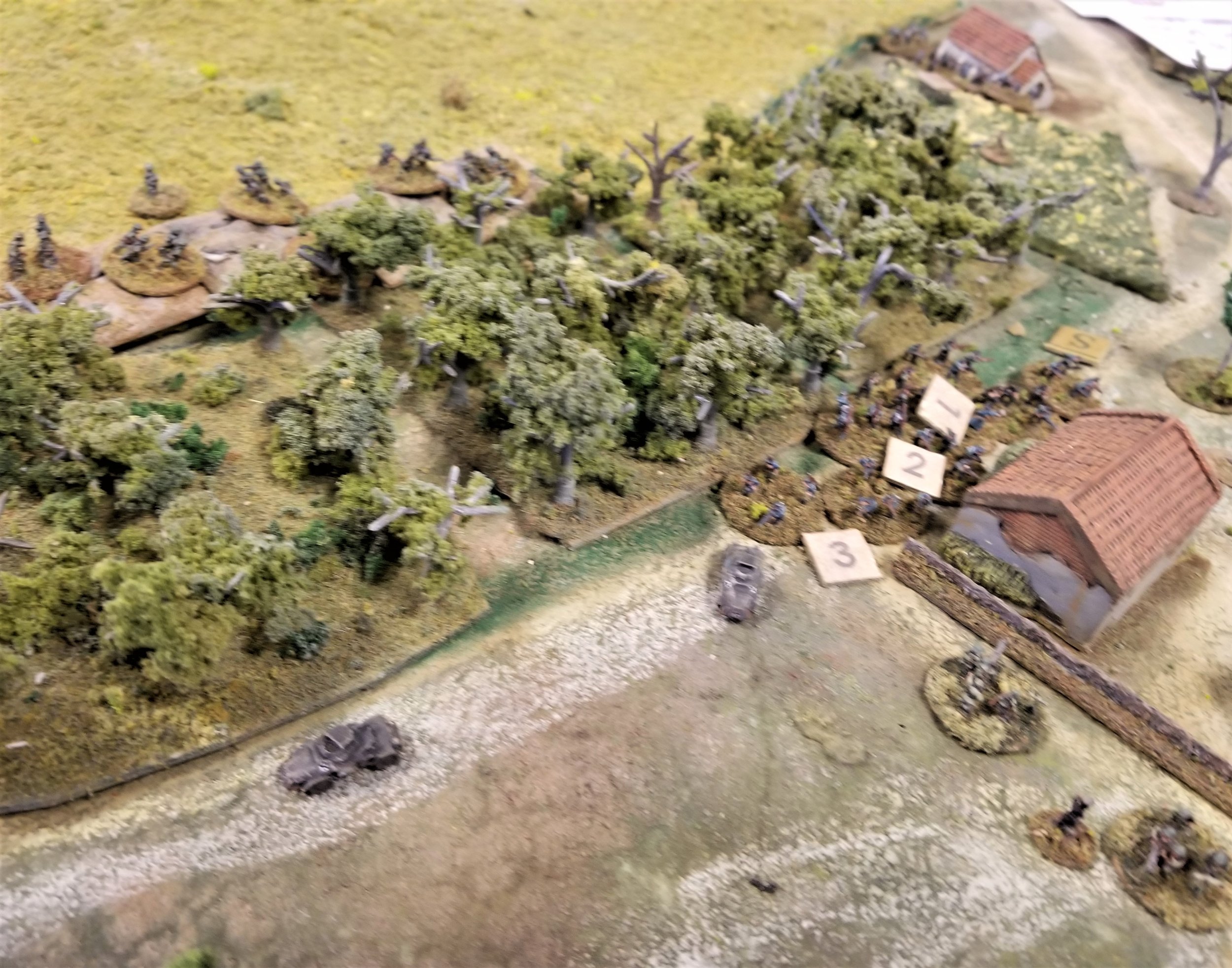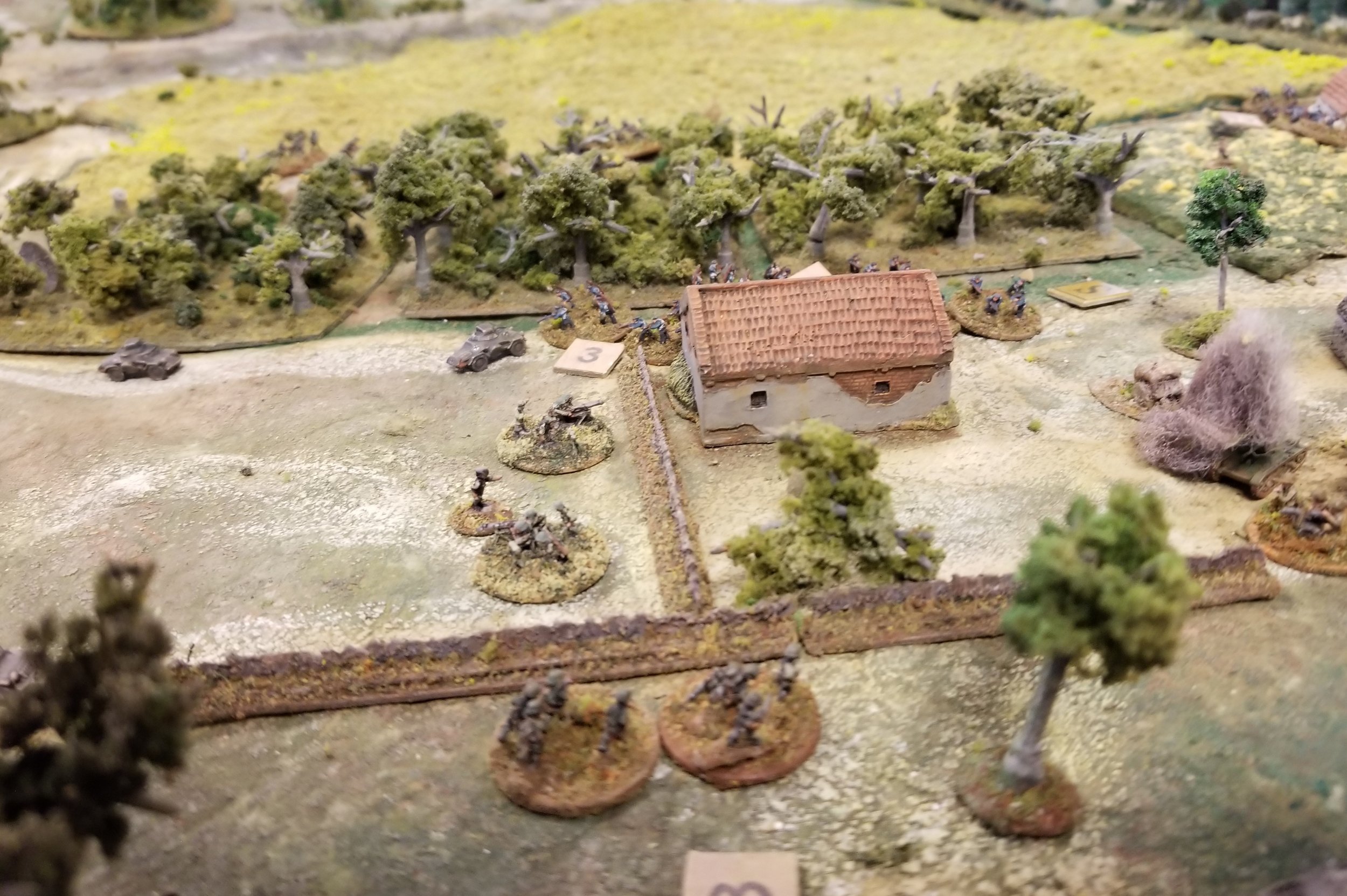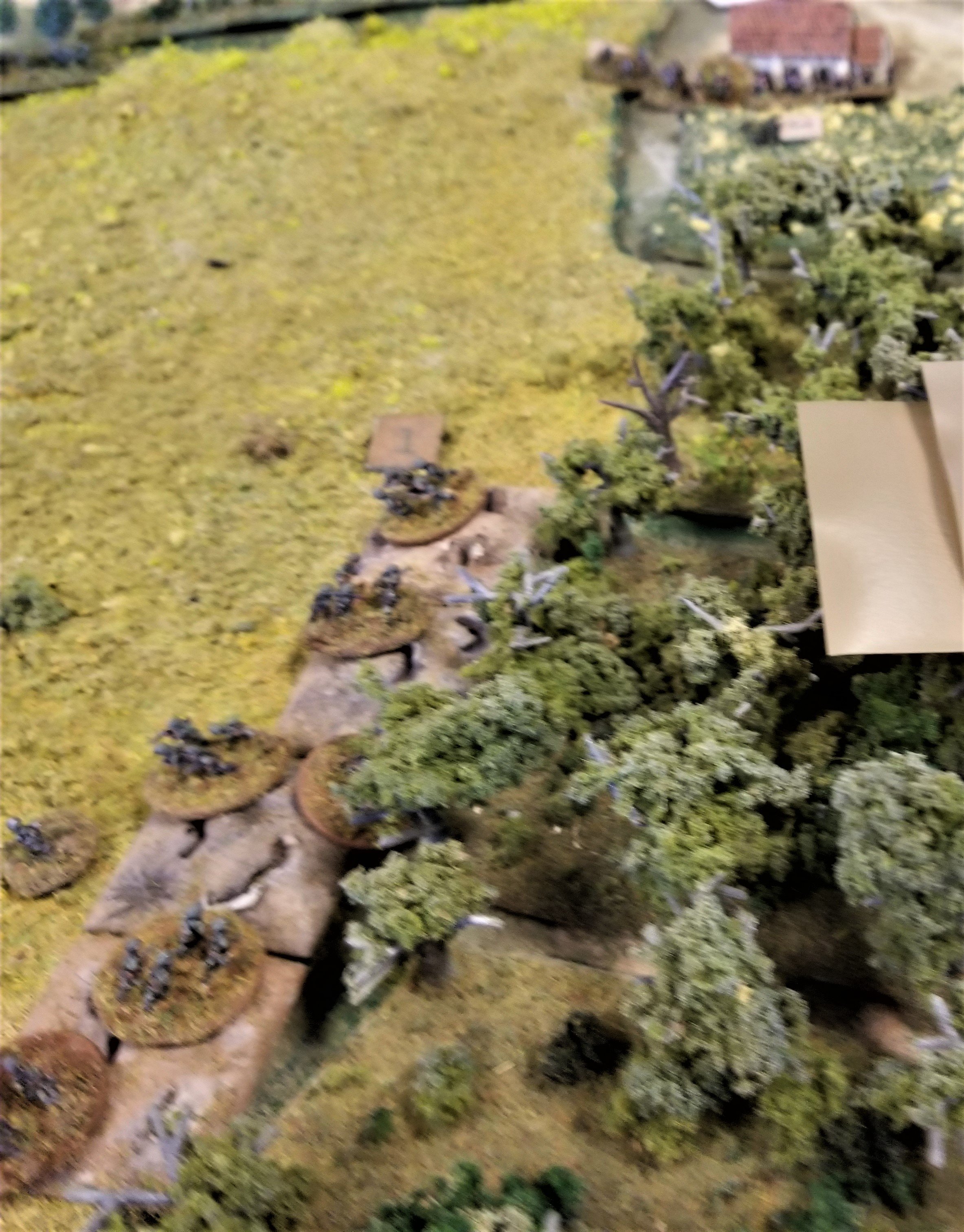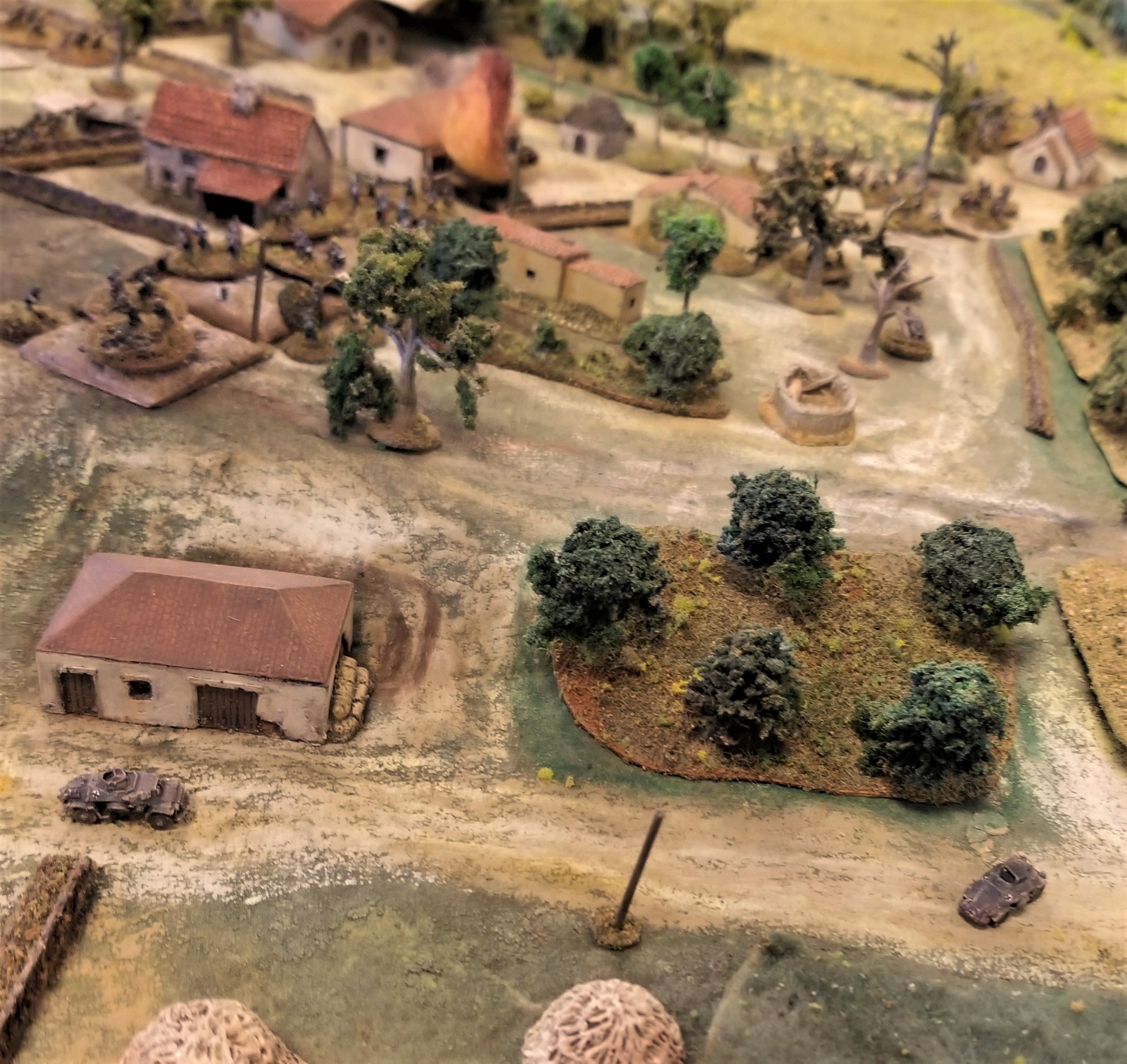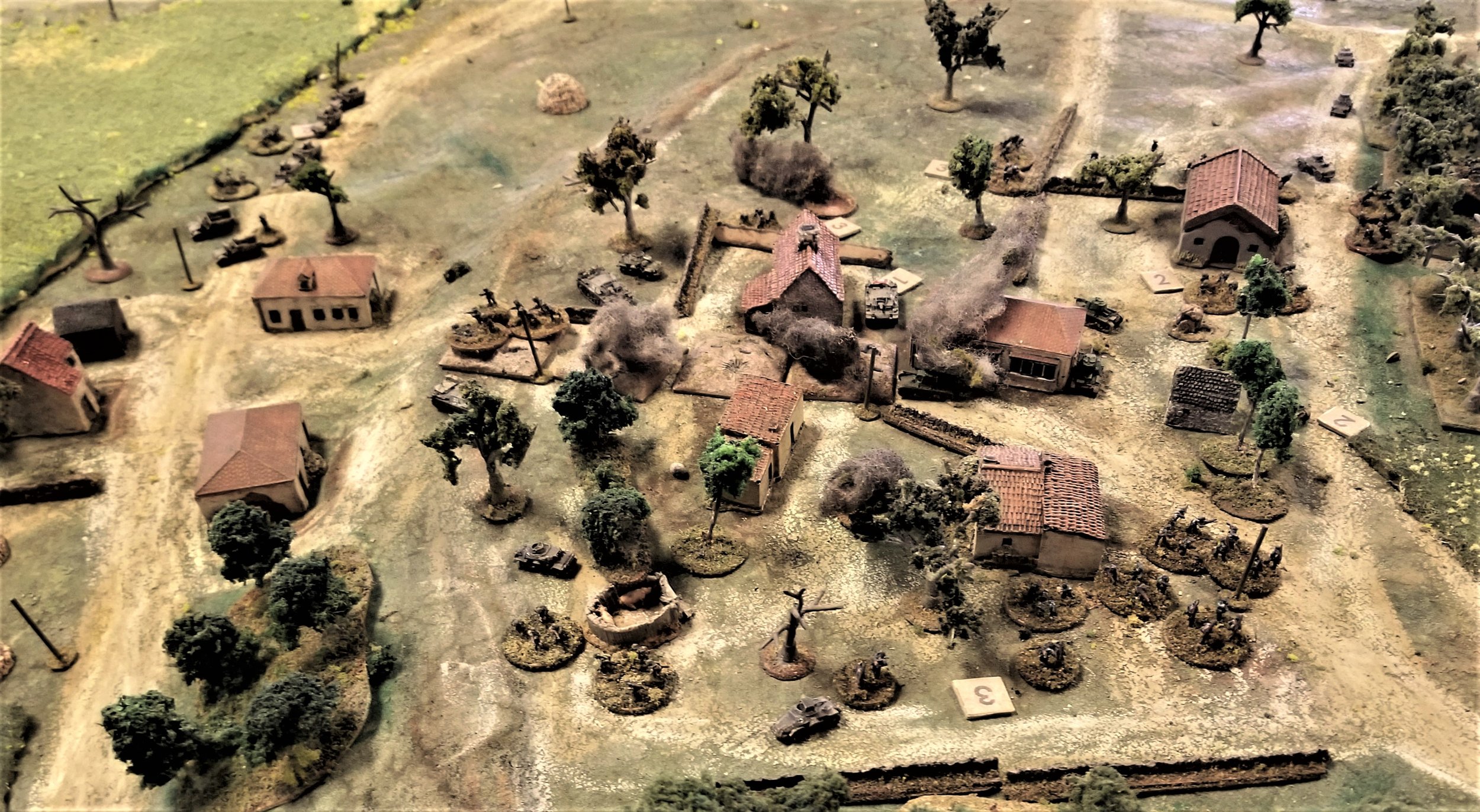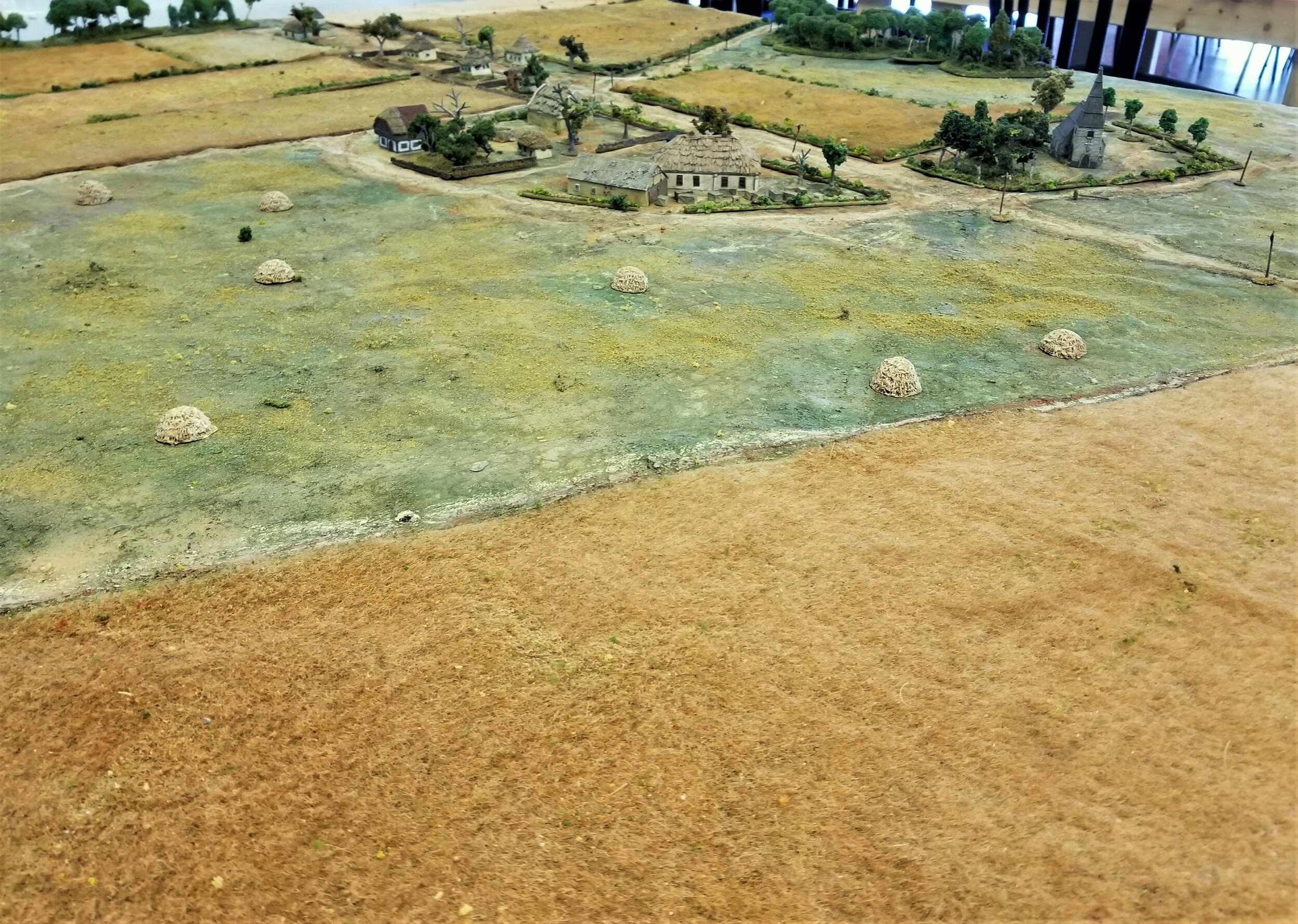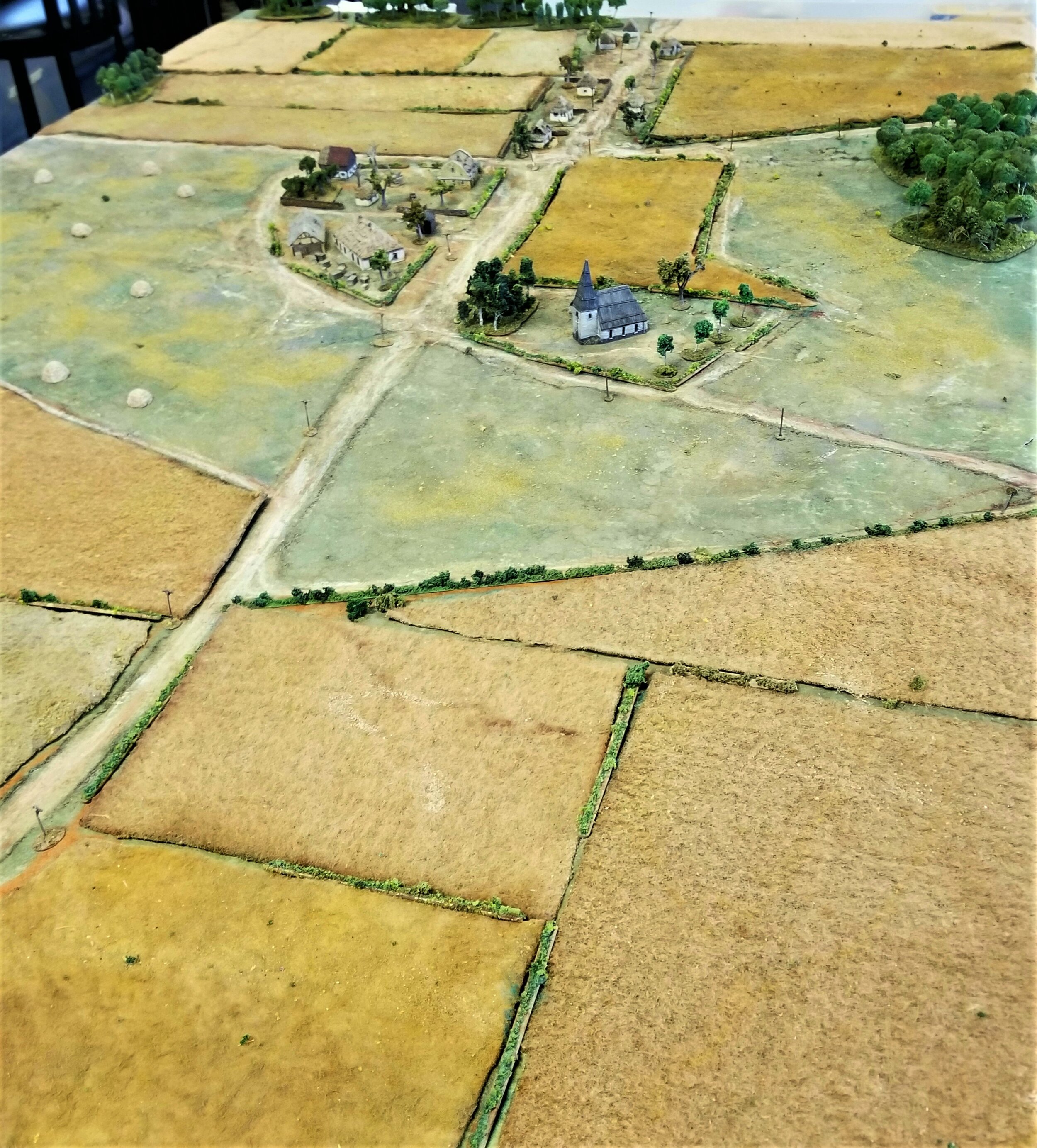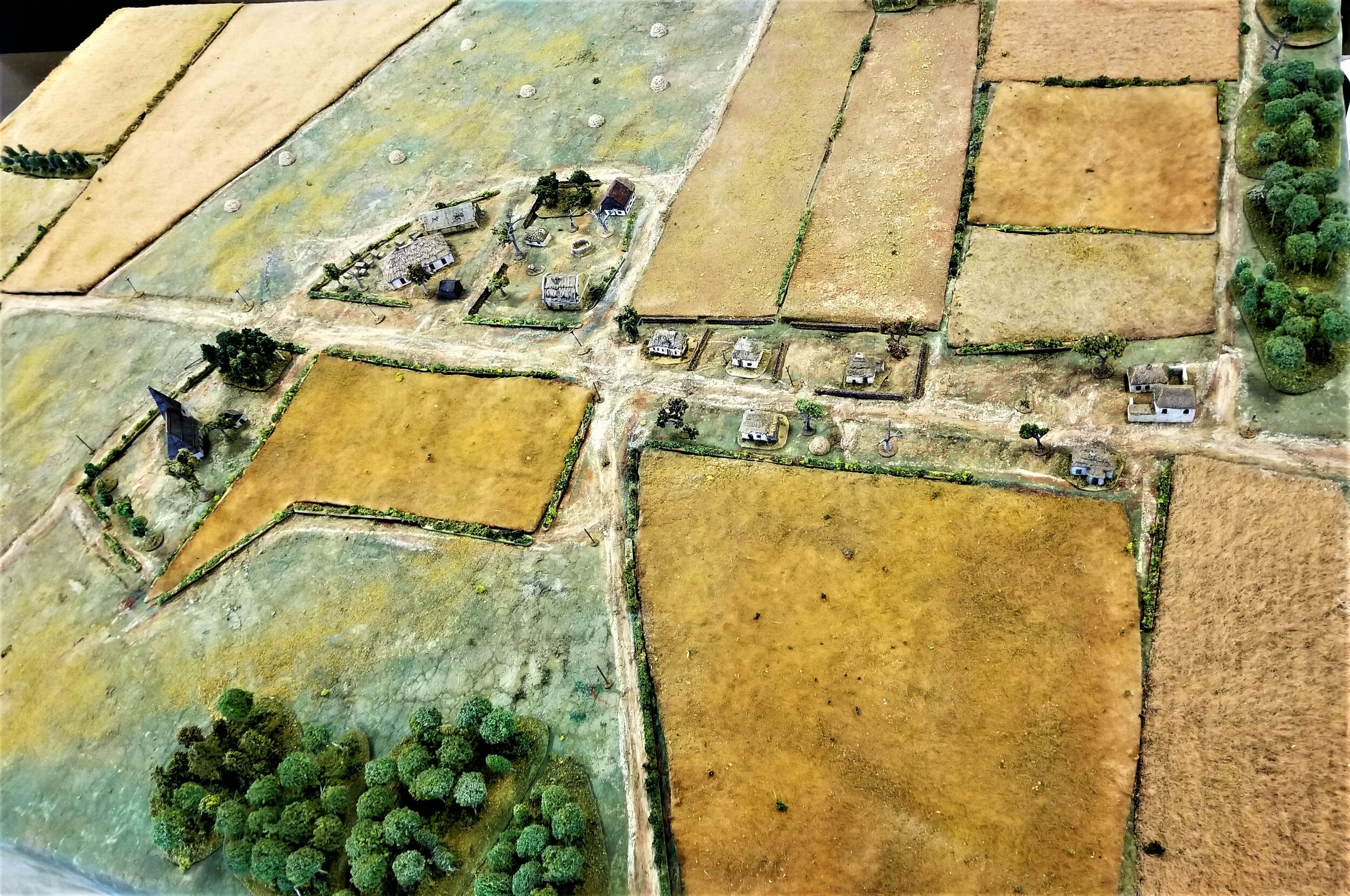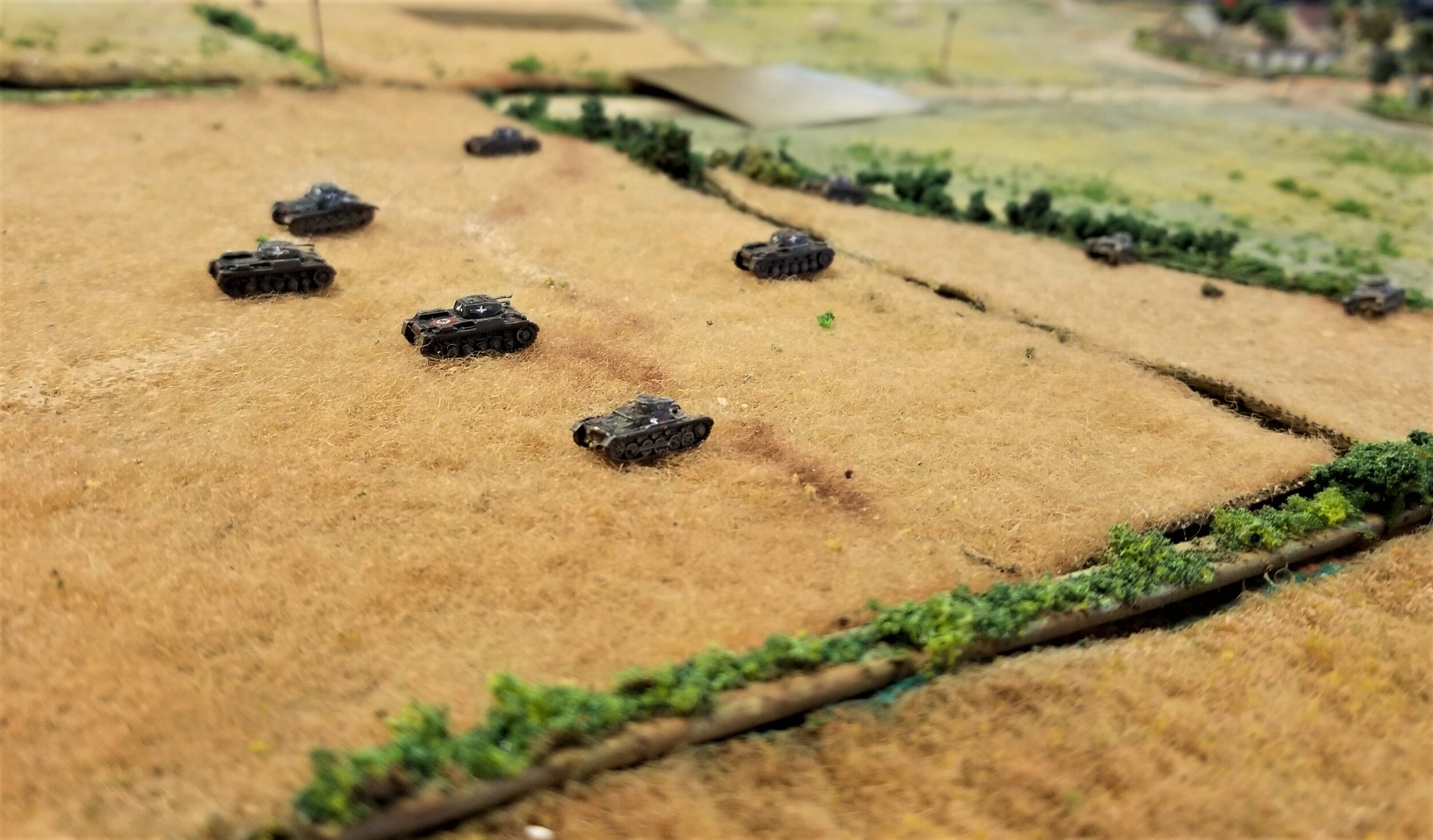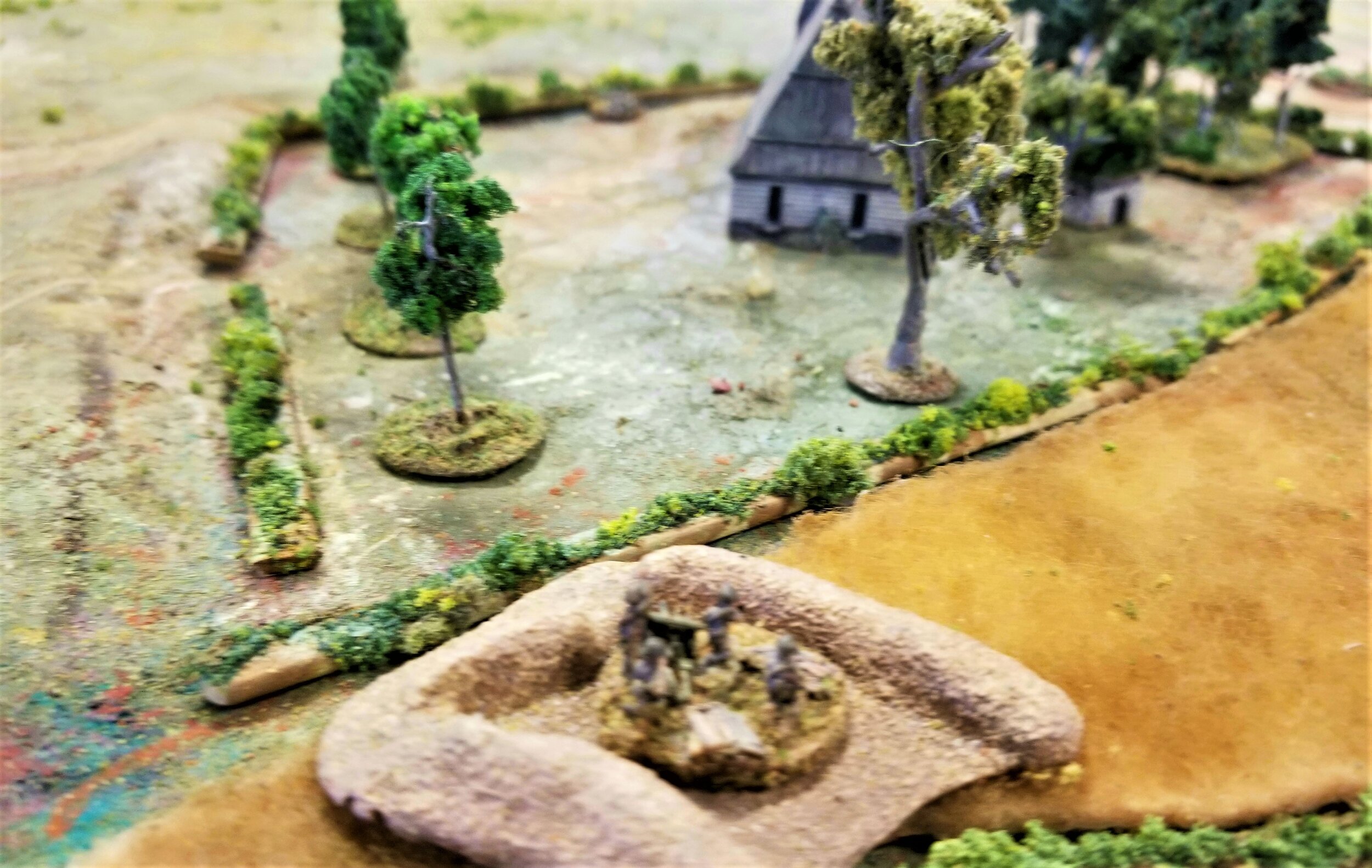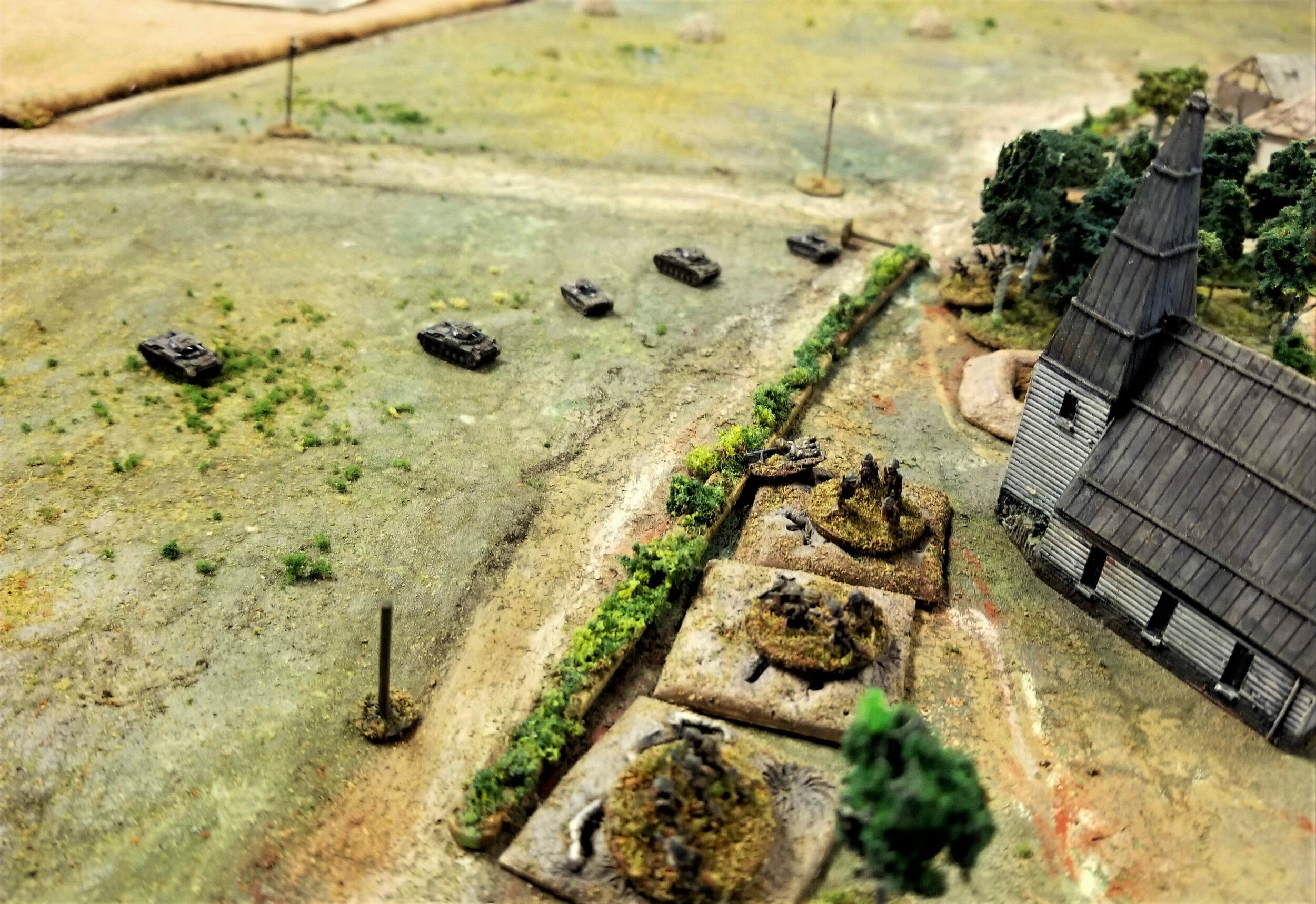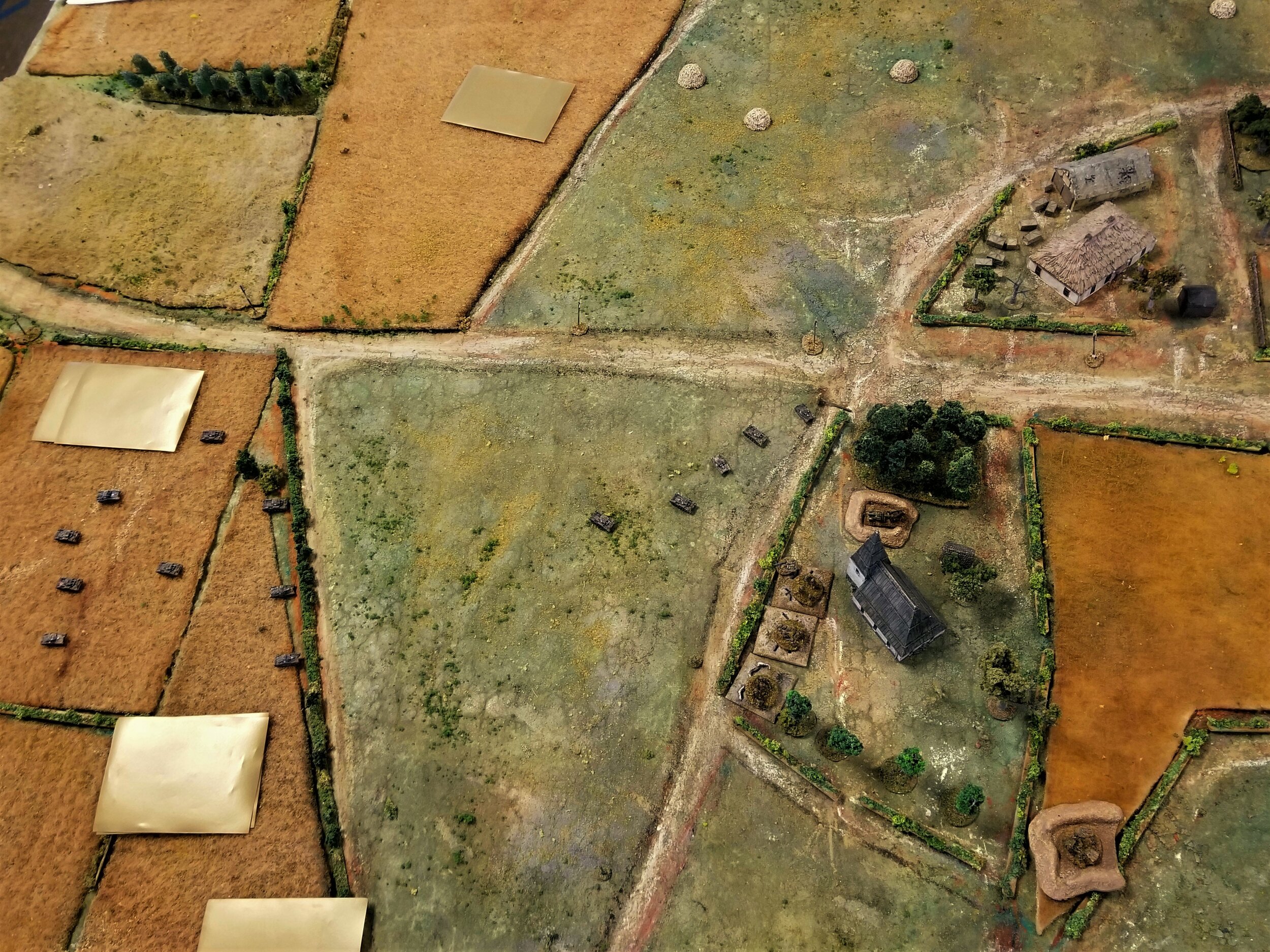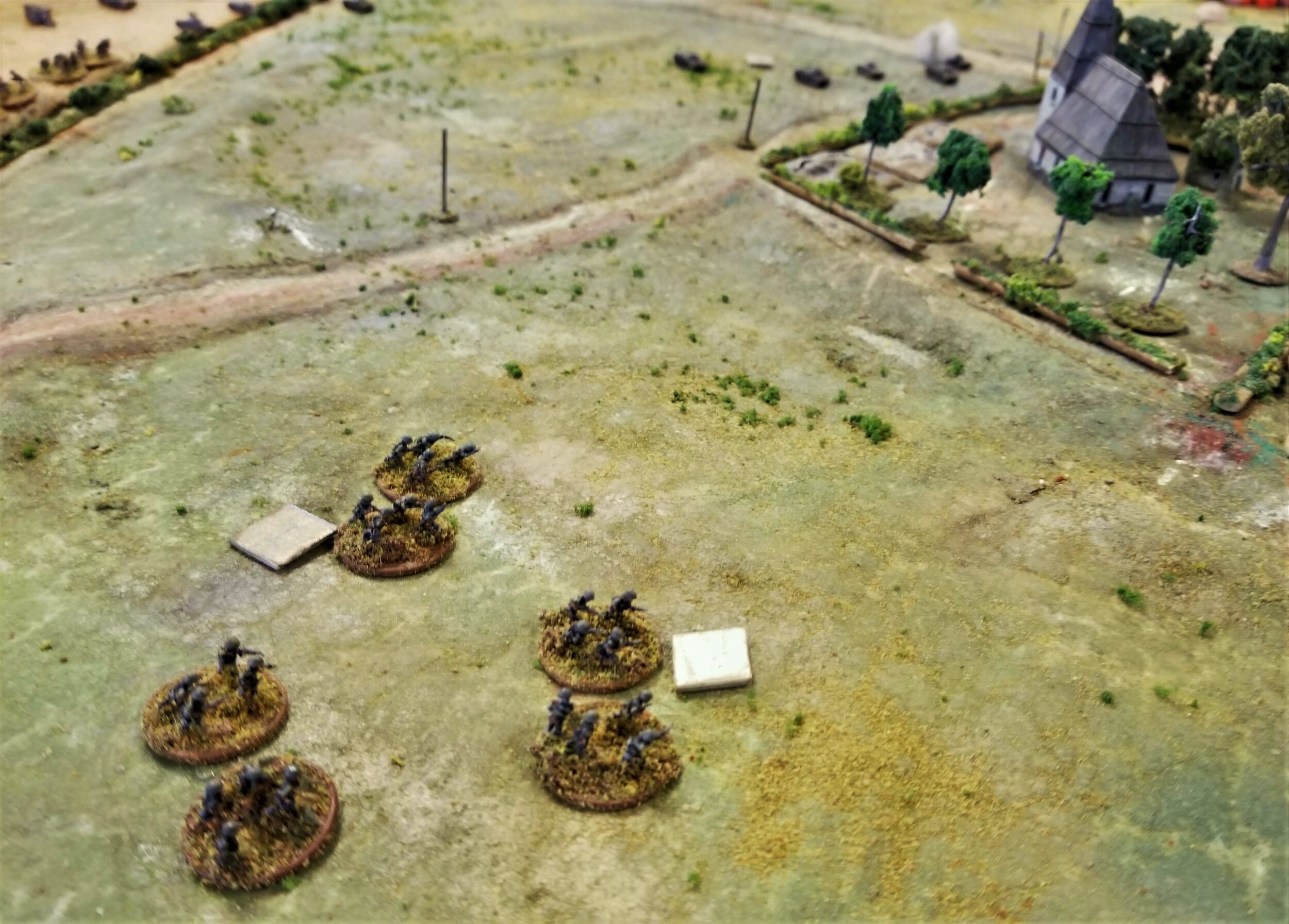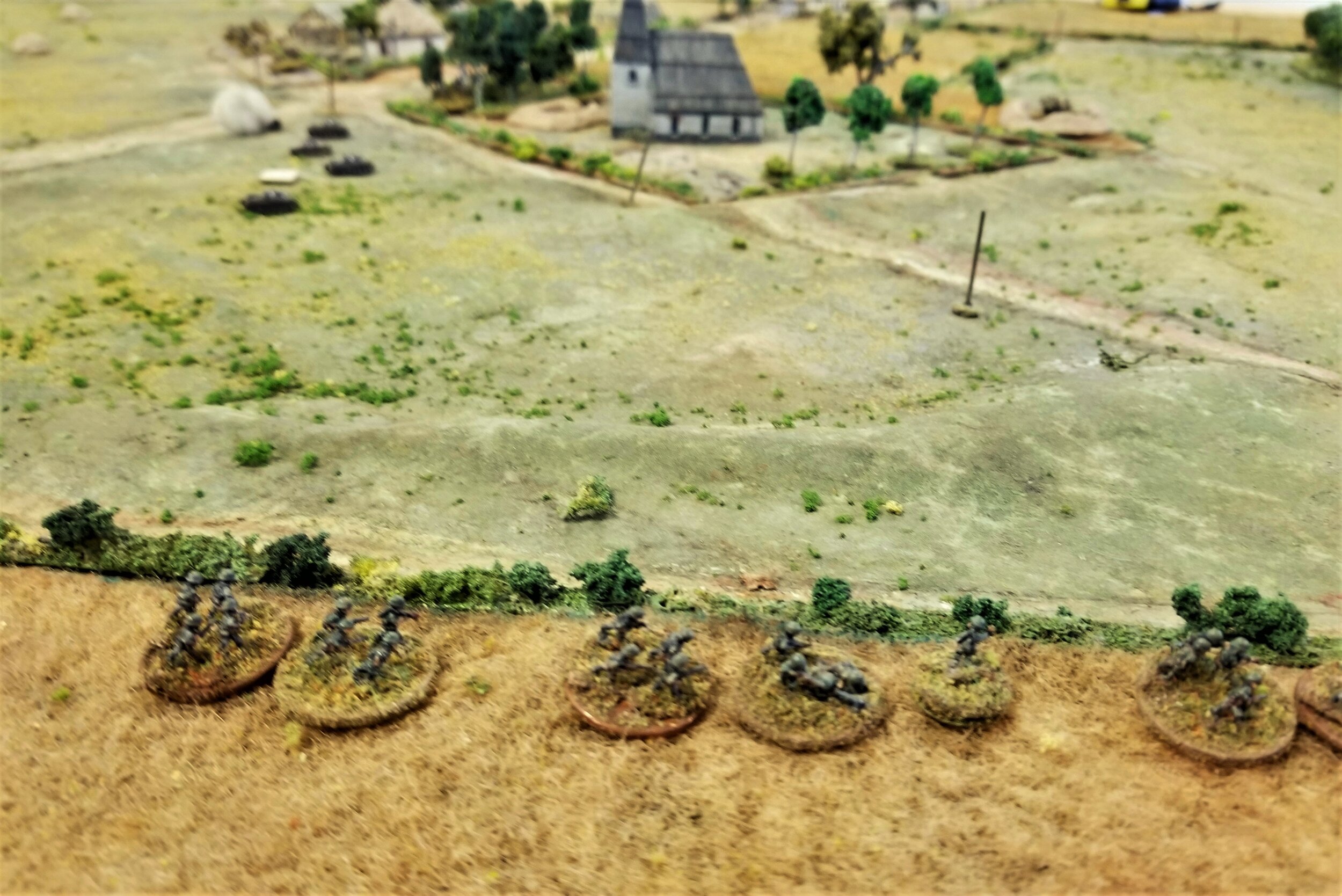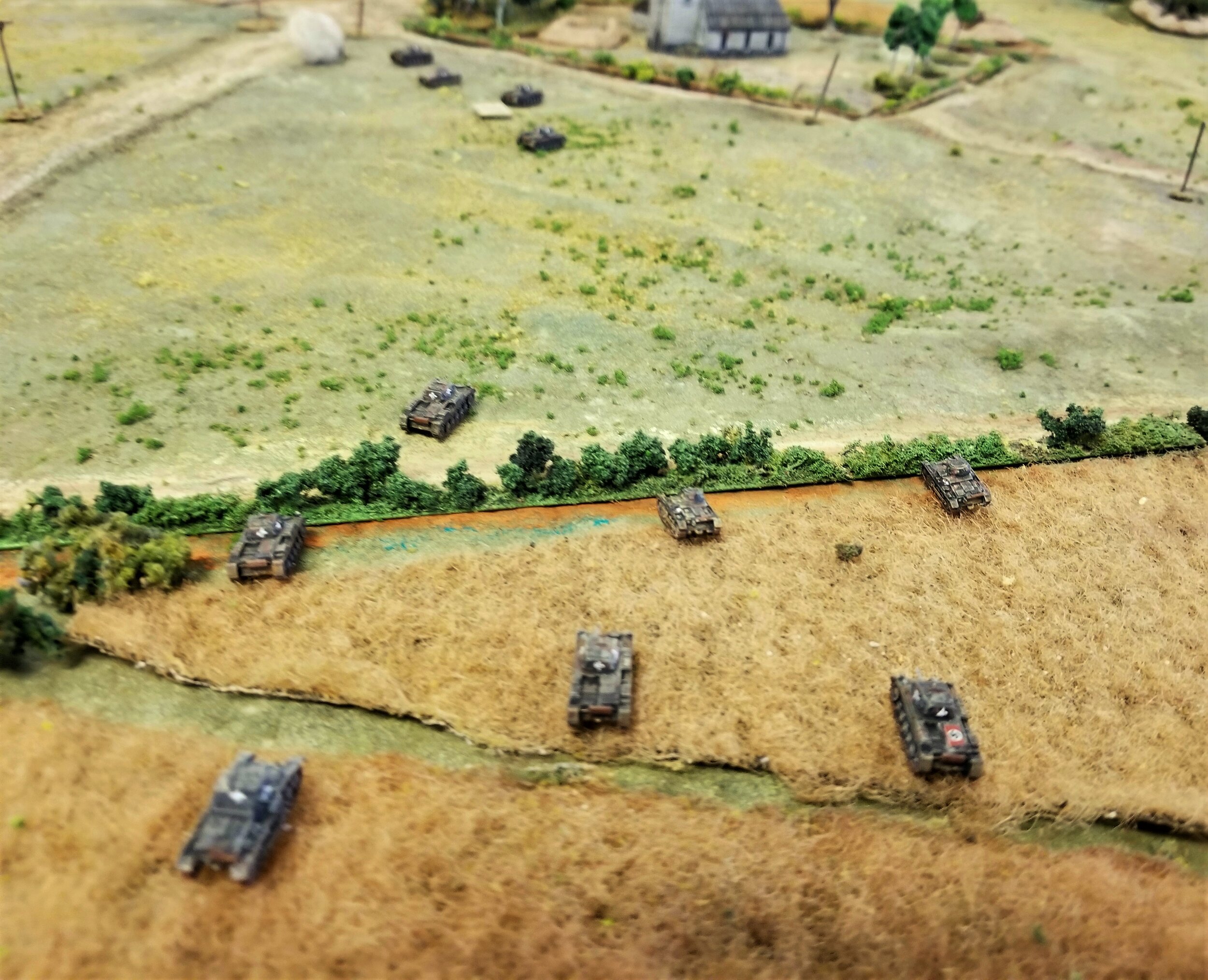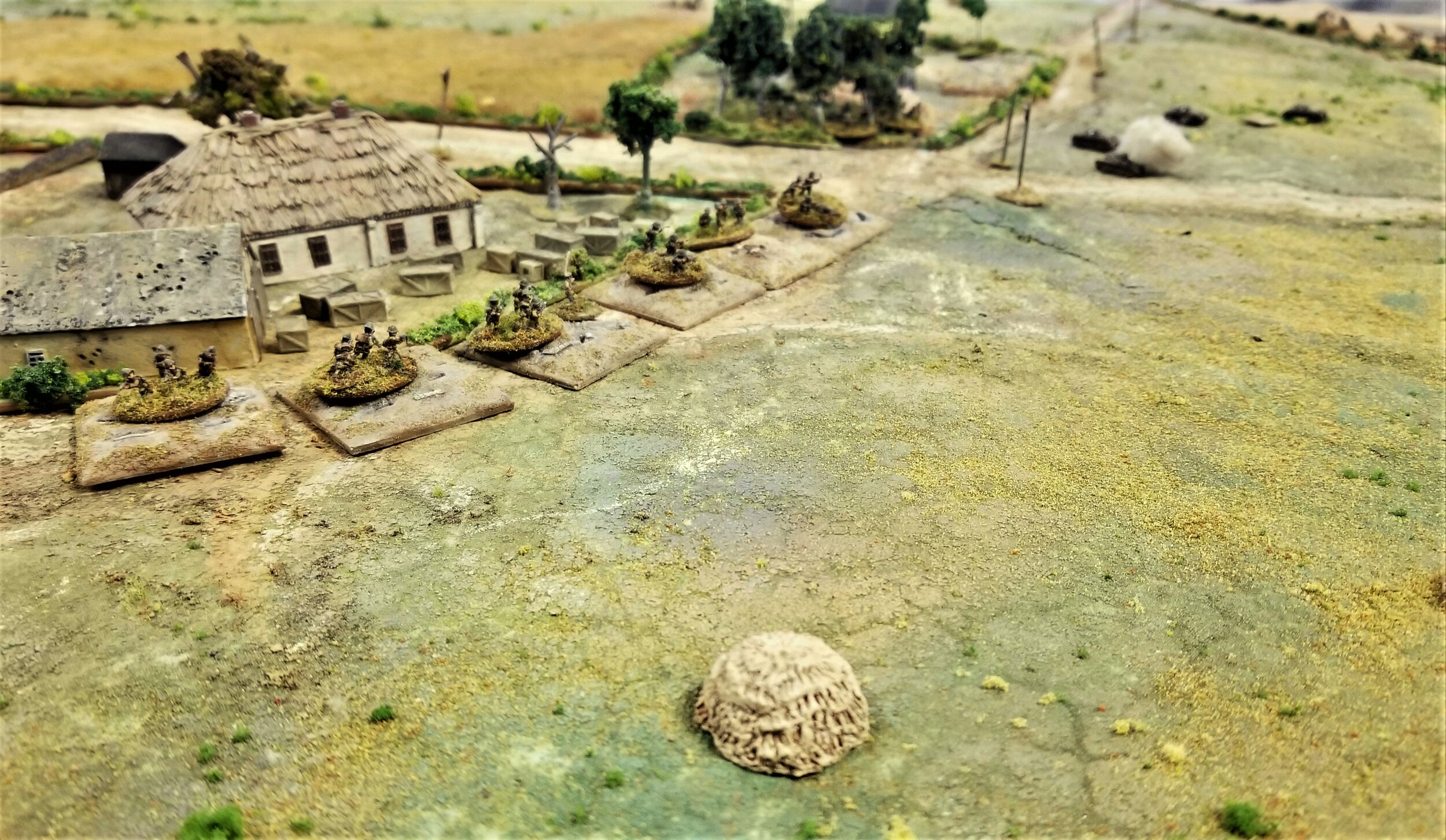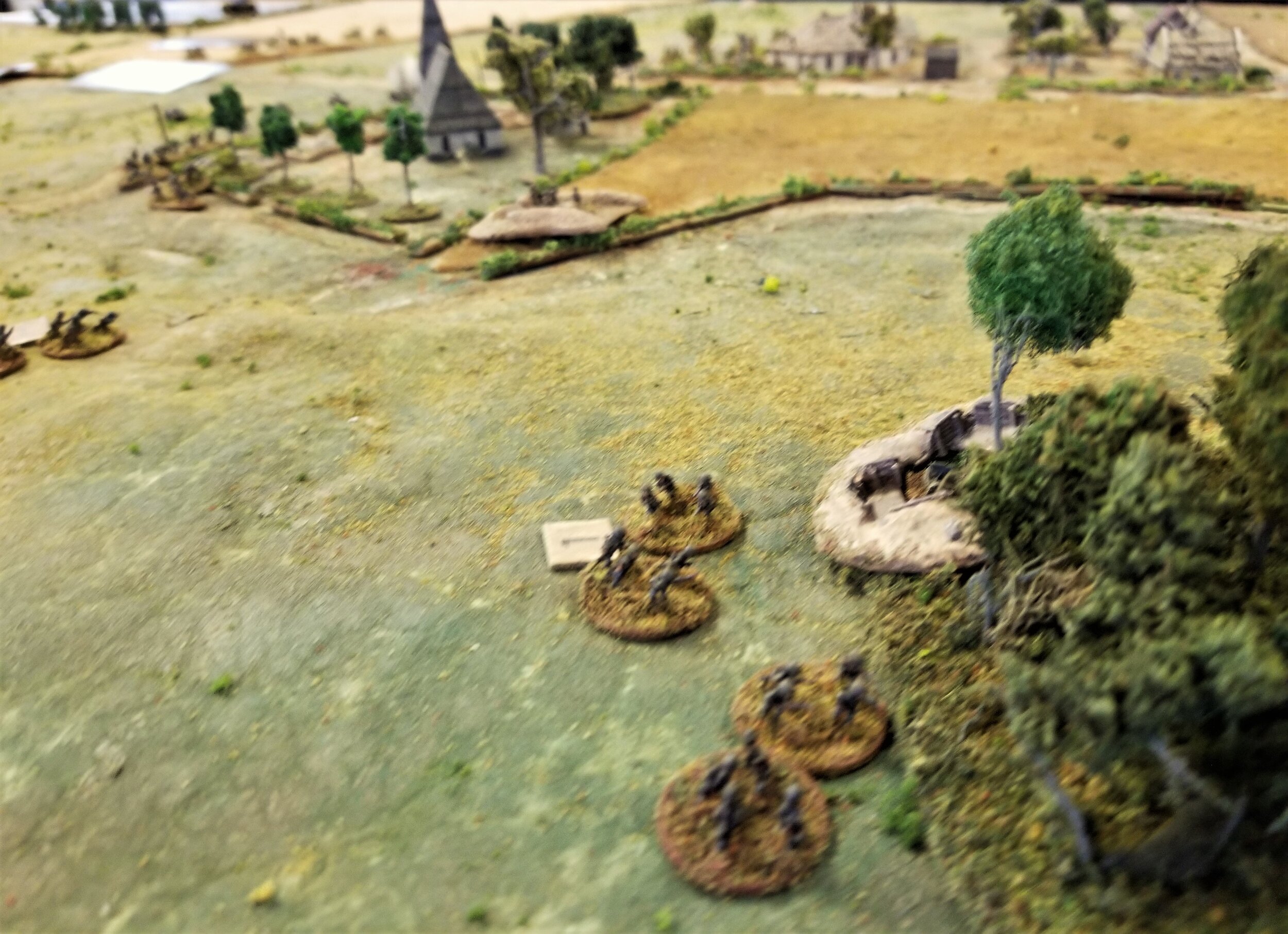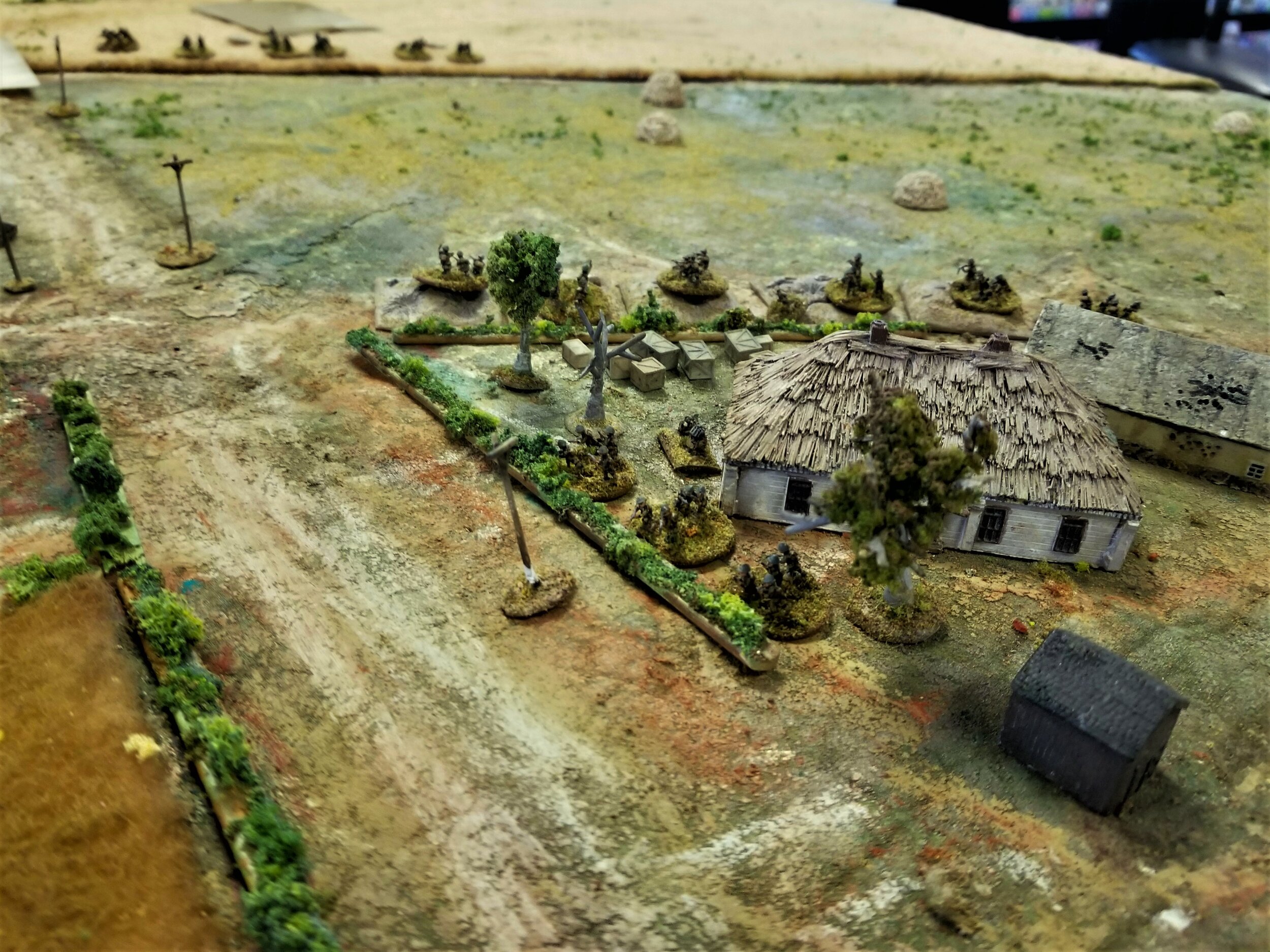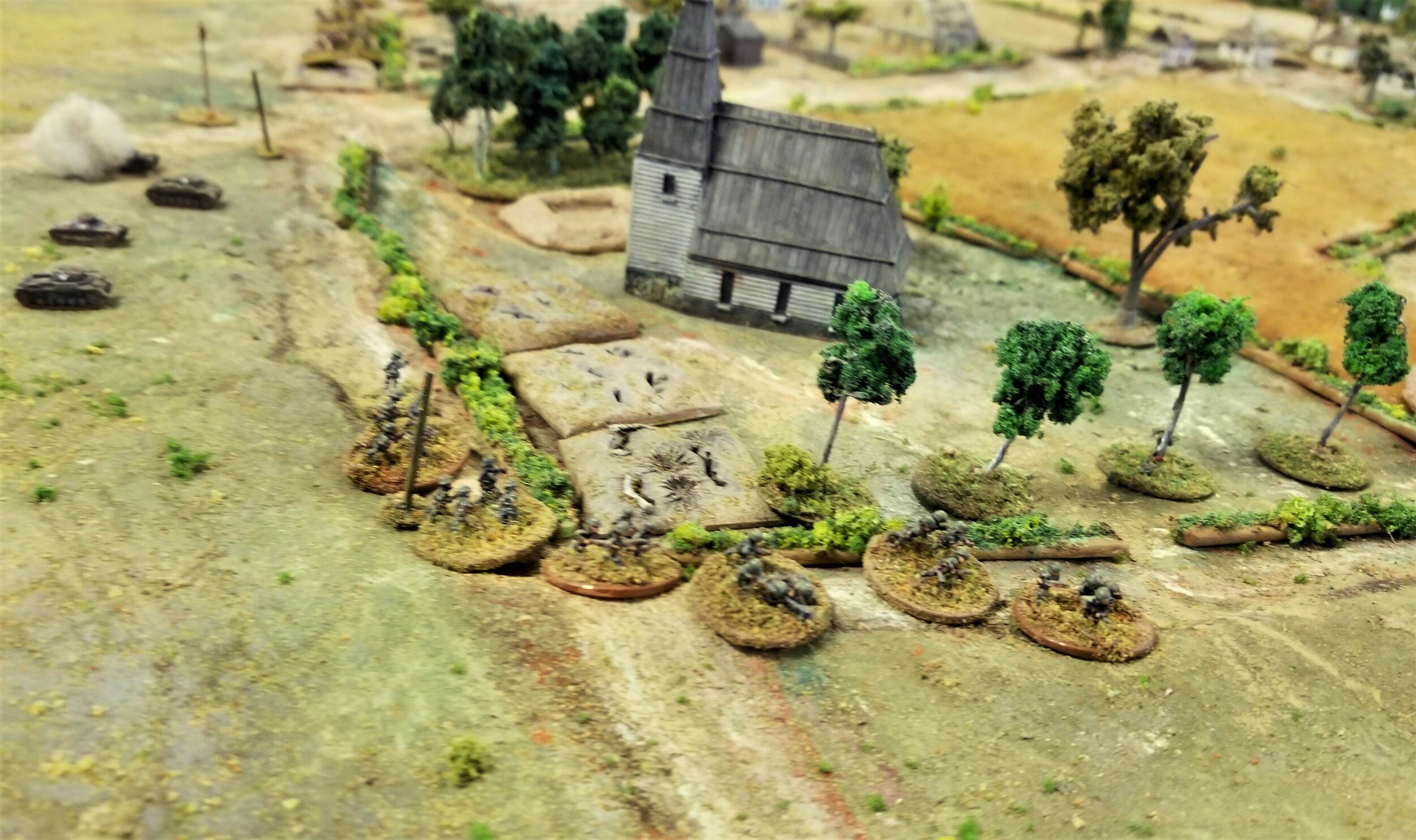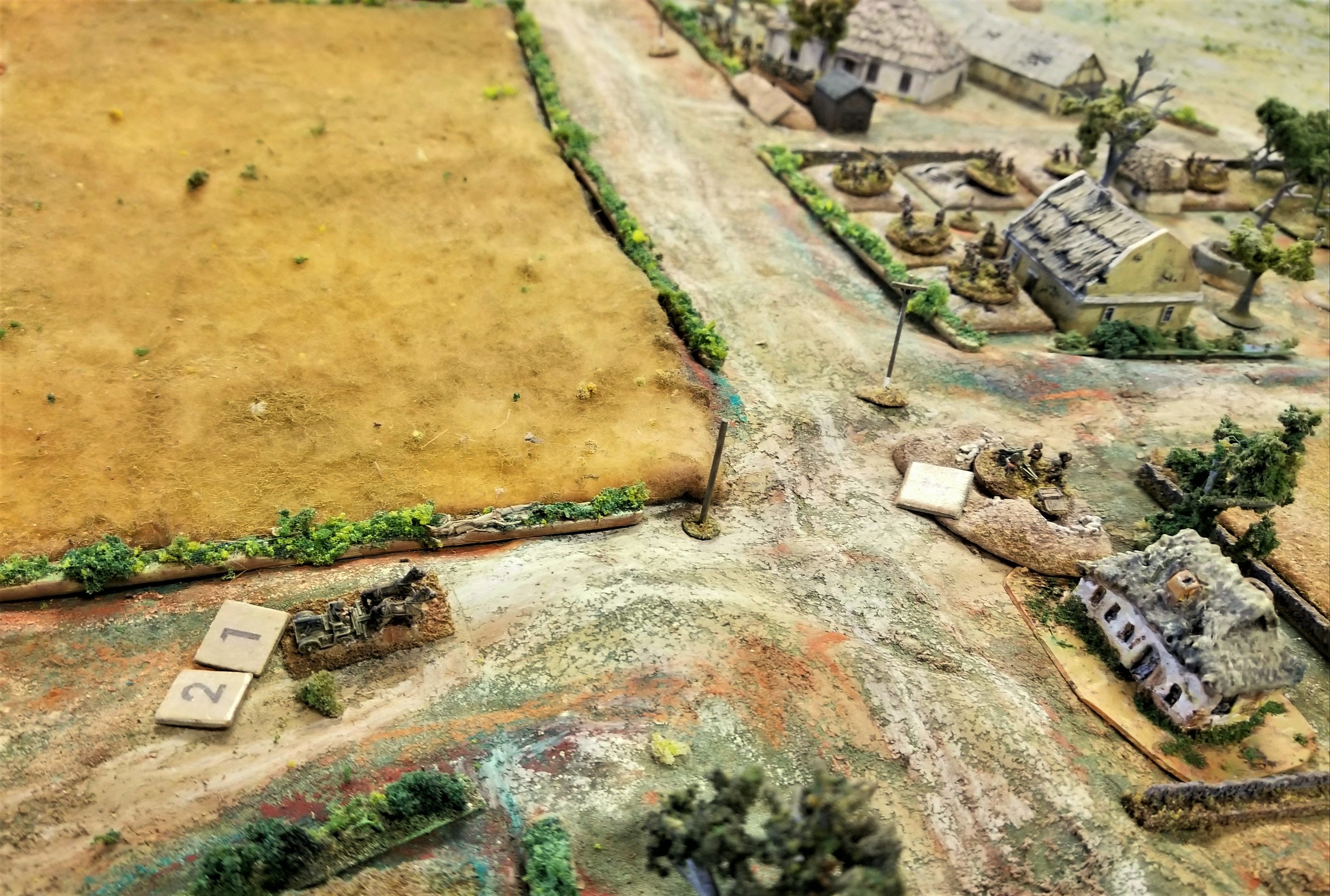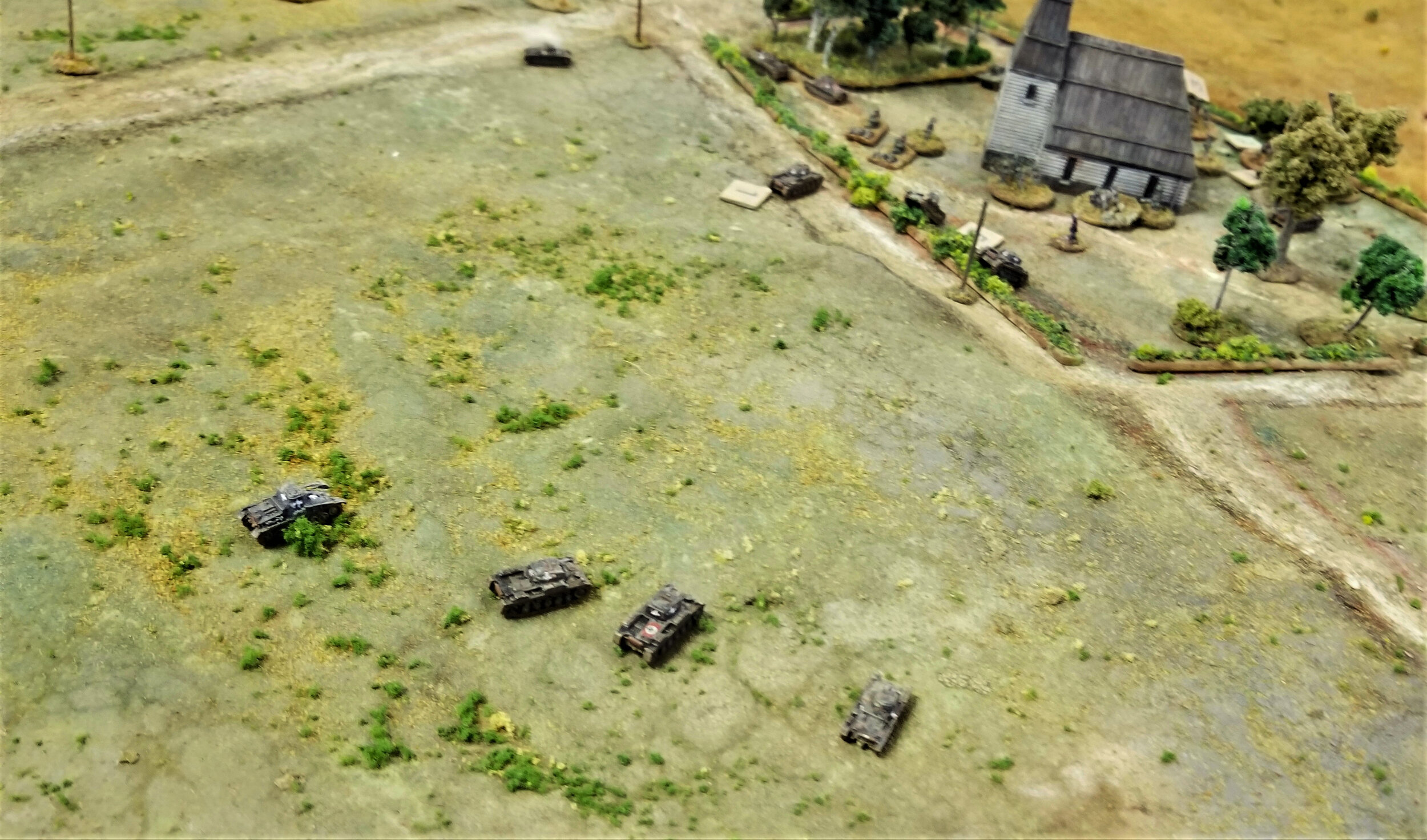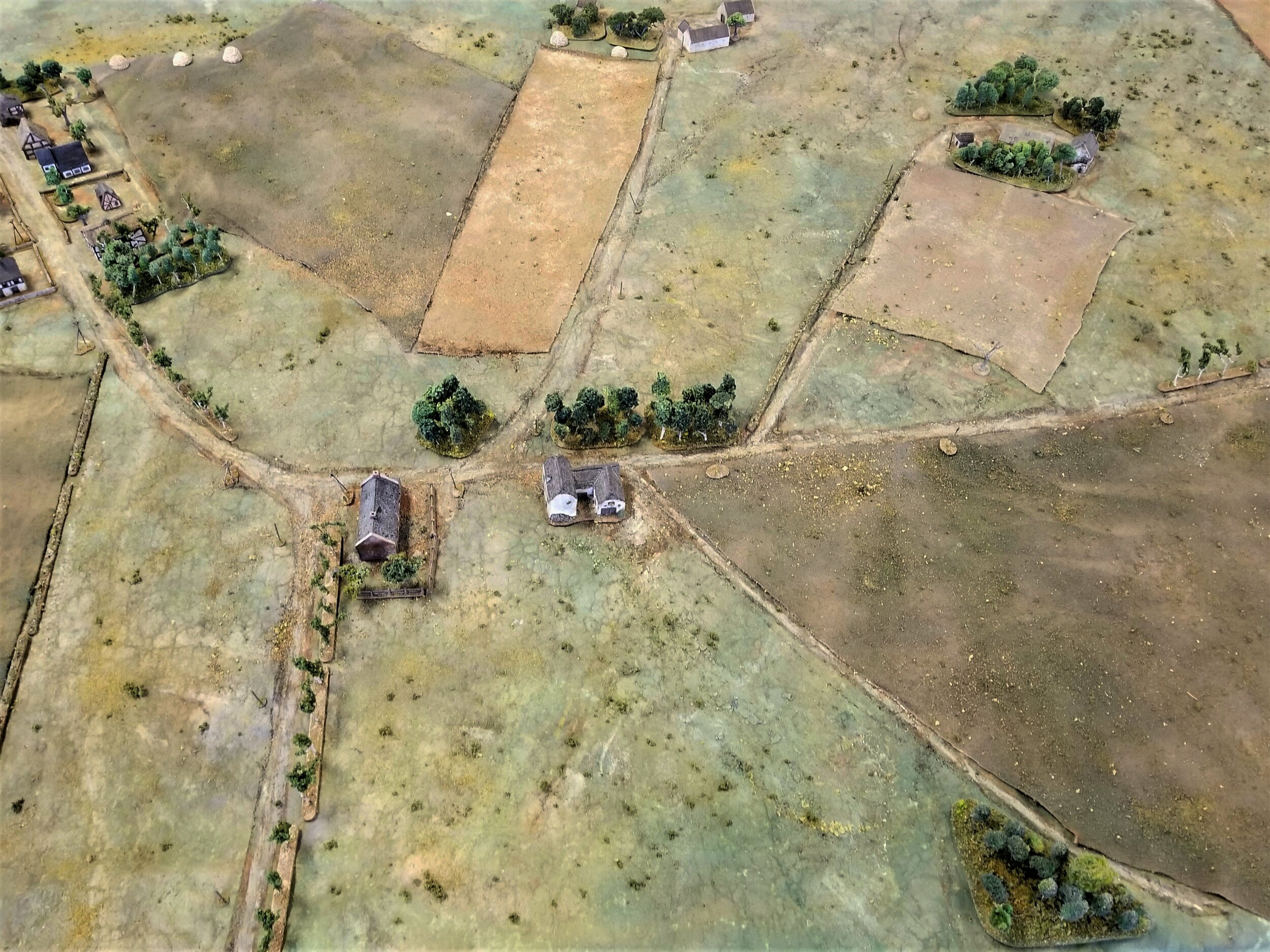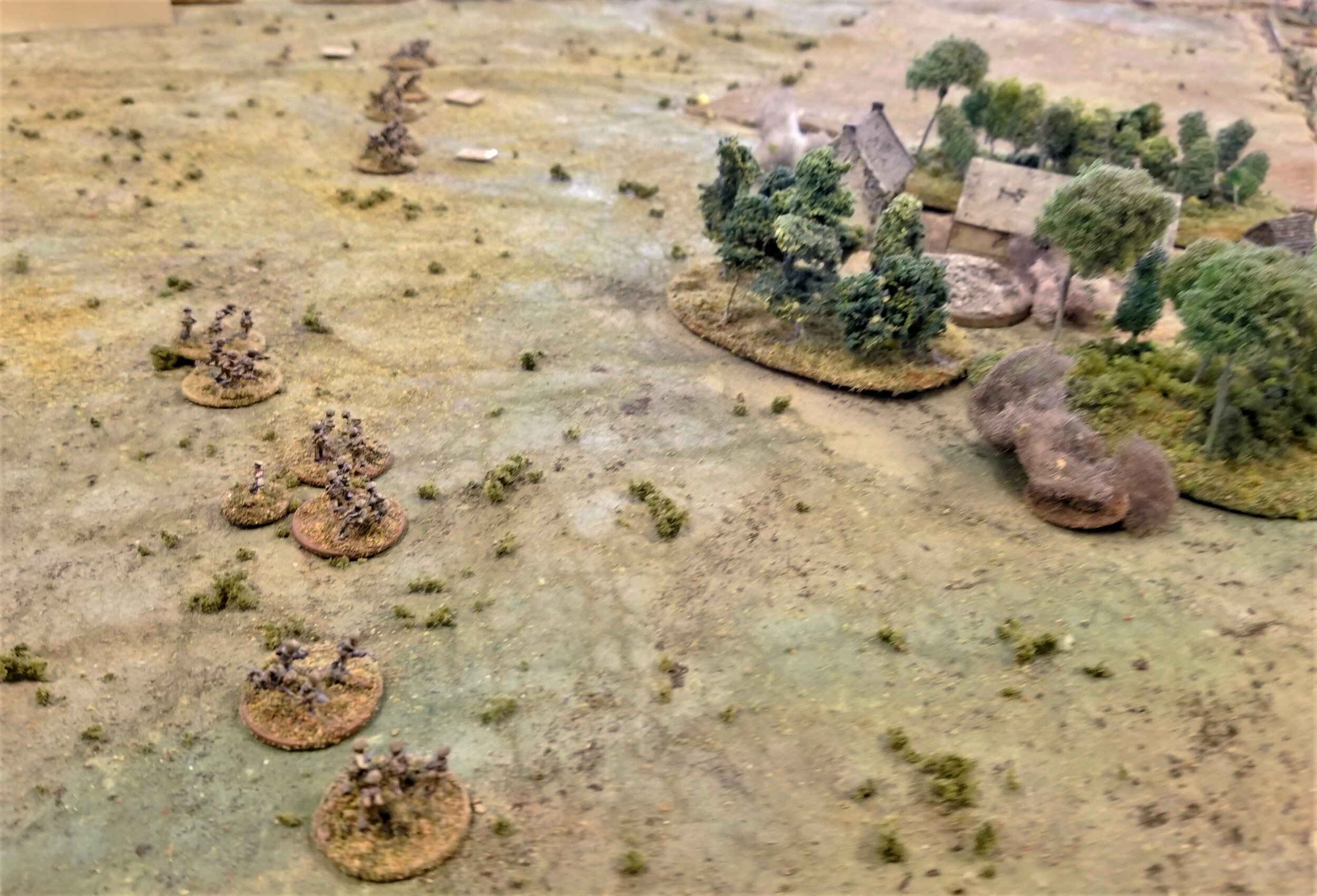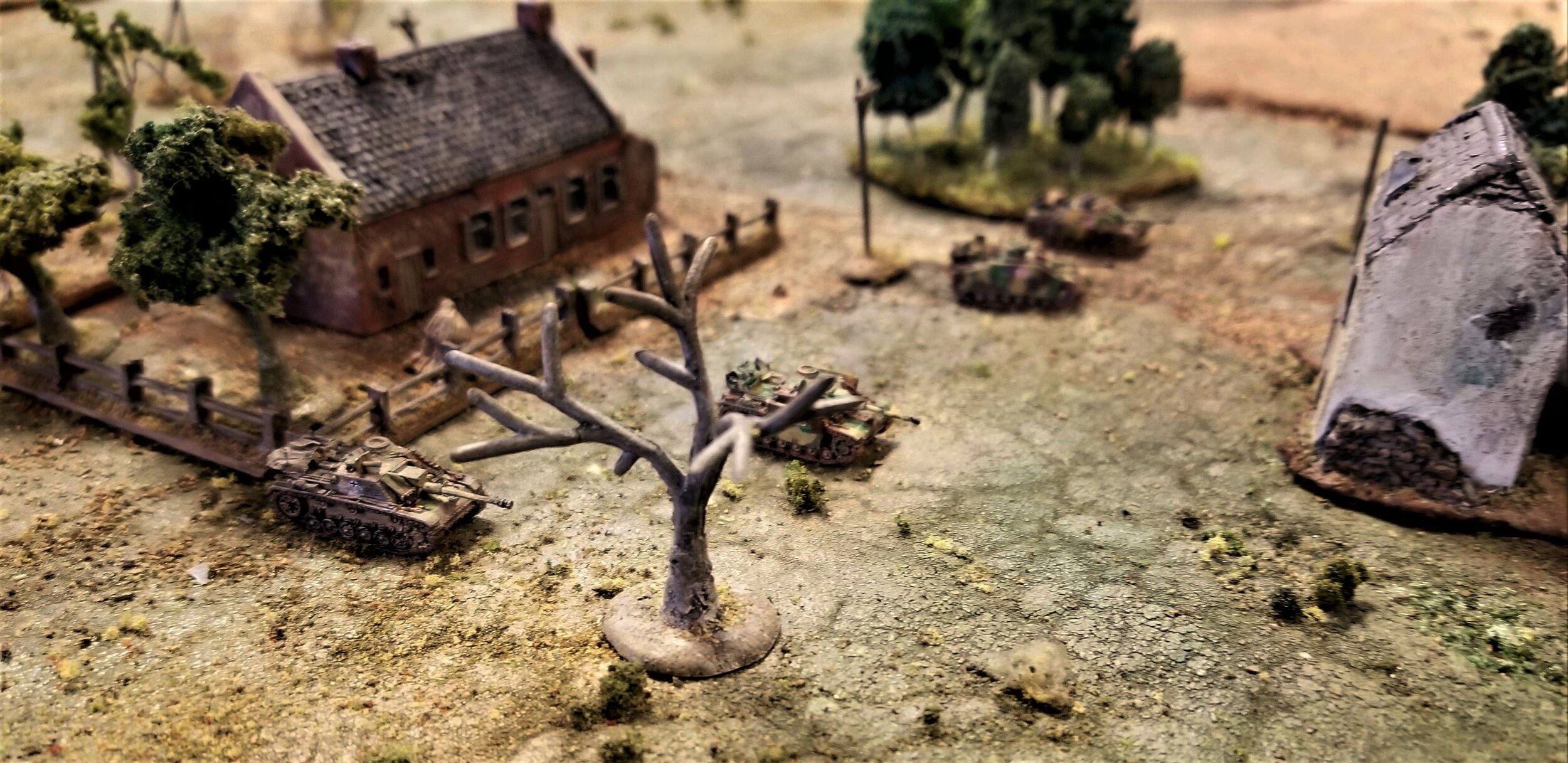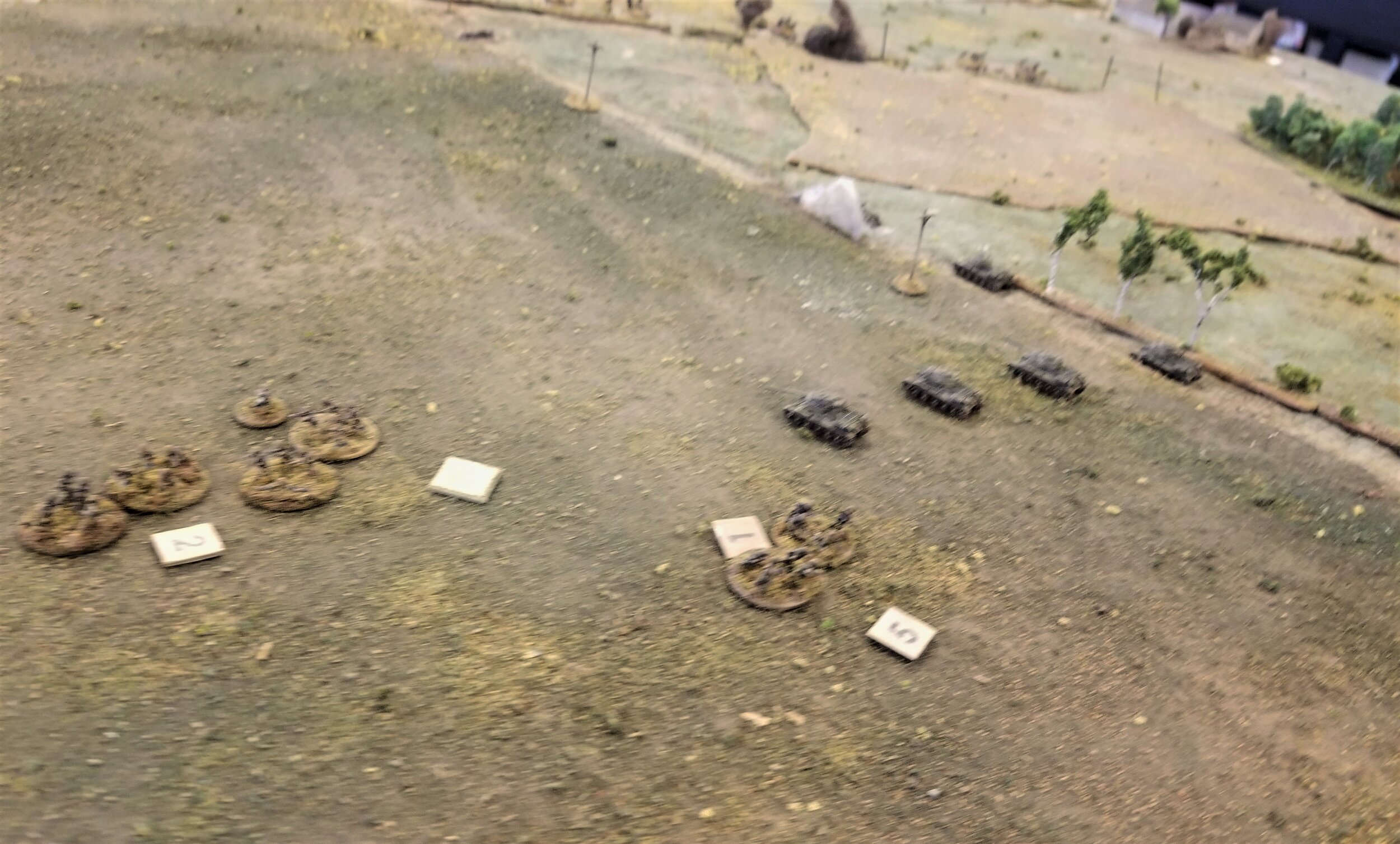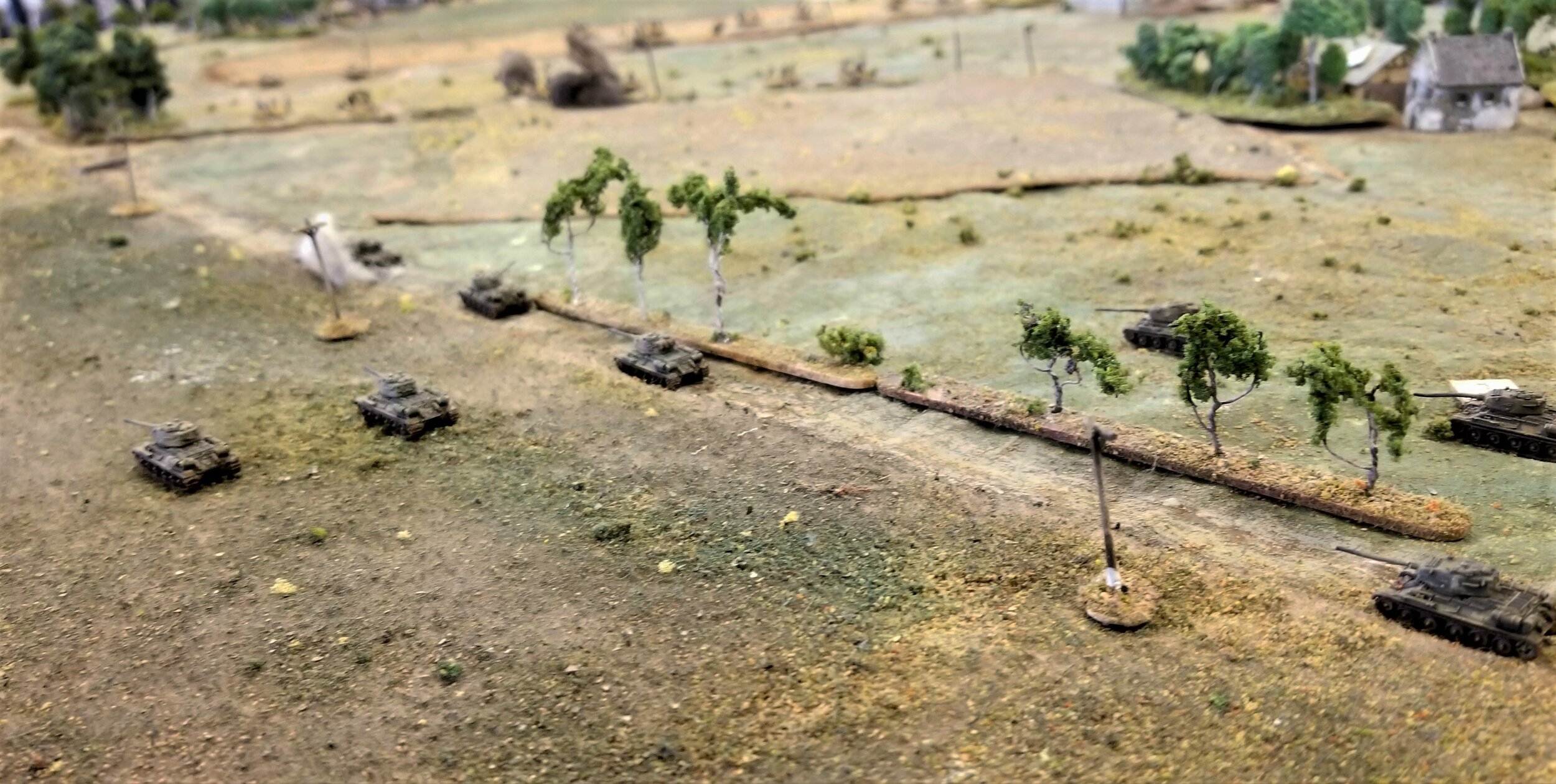Back in 2006, Chris Stoesen (author of the Call This a Ruddy Picnic? and In The Name of Roma! scenario packs) wrote a series of scenarios for a Saar 1939 campaign i.e. the short and highly unsuccessful attempt by the French to invade Germany right at the start of the war. The Christmas 2006 TFL Special contained the Tanks Forward scenario from the campaign that seemed to suit perfectly, so that's what we would play.
The Germans are defending a small town in the Saar region. At their disposal, they have a Company HQ consisting of two squads of infantry, two machine gun (MMG) teams and an anti-tank rifle (ATR); two platoons of infantry, each two squads of ten strong; and two PaK 35 'door-knocker' anti-tank guns (ATG). The Germans also have four Big Men and access to off-table mortars via an FOO. As it is early in the war, and this is not the main theatre, the German infantry squads start on three Actions, but drop to two Actions after two casualties.
The French have orders to clear the Germans from the village and get most if not all their tanks off the opposite edge of the table. Under the command of two Big Men (one with the infantry, one with the tanks) the French have a Company HQ of a squad of infantry and a 60mm mortar; two platoons of infantry, each three squads of ten strong; and a company of five light infantry Renault R-35 tanks. An impressive force on paper, but the infantry are not very good (starting on three Actions but dropping to two Actions with just one casualty); and the tanks are armed with 37mm pop-guns that whilst able to deal with most early-war armoured vehicles are not ideal for winkling infantry out of a village!
I played the Germans. Not sure where the French would attack from, I needed to keep my options open. I placed the Company HQ at the back of the village behind the house at the T-junction. This would be my reserve: to be deployed as and when the main axis of the French attack became clear.
On the left and forward, I occupied the houses with a platoon of infantry (2nd Platoon), backing them up with an anti-tank gun nestled in one house's garden. I was hoping for a quick shot at a tank before retreating into cover. On the centre-right and slightly forward, I placed the other platoon of infantry (1st Platoon). This left me a bit light on the right flank, so that's where my other AT gun went...although it was hung back behind a hedge.
The French advanced quickly onto the table, with a whole platoon of infantry backed by the Company HQ occupying the edge of the wood about 150 yards in front of 2nd Platoon's position. They quickly spotted the AT gun in the garden, and let rip with fire that killed one crew member and forced the others to drag the gun back behind the house. So much for getting a quick shot off at a tank!
My infantry returned the favour and, for the rest of the battle, 2nd Platoon and the French platoon in the woods would be locked in an inconclusive firefight. I think, on balance, my 2nd Platoon took slightly more casualties (four men dead) but they certainly weren't in any danger of being moved and, just as the game was ending, my FOO had successfully called in the off-table mortars and was just getting their range!
My infantry on the right were confronted with five French tanks coming up the hill towards them. Not much point in shooting at the tanks with rifles from this range, so the left hand squad revealed its position by shooting at the French infantry in the woods. One tank fired at this squad, but the round literally bounced off the house doing no damage except to Pin the infantry down until Tea Break. Neil had made the classic mistake of splitting his armour and infantry: his tanks could Pin my troops in the houses with HE, but he had no infantry to charge my troops once they were Pinned.
Whatever the figures on the table thought, the sight of five French tanks coming up the hill towards me was doing my morale no good at all, and I started to rush both AT guns and the ATR team over to that side of the village to help stop the French attack.
The tanks were coming up the hill fast (we had both forgotten that R-35s are 'Slow' tanks): so fast, in fact, that the command tank broke down just as it came level with the village. The Big Man on board refused to abandon his vehicle, and spent the rest of the game acting as a mobile pillbox.
Two R-35s reached the village, one on a track leading up to the main road where my three AT assets lay in wait for them. I revealed AT gun number one and fired. Boooiiing! All shots bounced off the Renault's armour. Up came the AT Rifle team: same thing. Finally, the other AT gun: yet again, the same thing. One thing about the early war tanks: they might be slow and have pop guns, but they don't half have pretty decent armour when facing only PaK 35s and an ATR.
Meanwhile, another French Blind was working its way up behind my left flank. I needed to devote some resource to dealing with it, so needed to get these tanks under control fast. Two of the tanks were now in the village so, incredibly bravely, one of my Big Men led a squad from 1st Platoon out of the house they were sheltering in and into close assault on the two French tanks.
As the tanks were so close, I could easily get behind them. An attack on each, with me rolling two dice and needing 3's versus the tanks' armour of 5 needing 5's or 6's. These R-35s are made of stern stuff: the only effect on them was one point of Shock. Next turn, of course, the tanks swiveled their turrets, other tanks took aim, and my infantry died in a hail of machine gun bullets. Poop!
Worse, the French commander's tank then switched its fire to one of my AT guns and wiped out all but one of the crew. Things were looking a little grim!
The only consolation was that that French Blind on my left was a bit stuck doing nothing, as the French Blinds card seemed determinedly unavailable, and it was too far forward for the French Big Man to intervene. This meant that I had time to get my HQ MMGs over to the left, led by a Big Man, set up shop, spot the Blind, and open fire. The tightly packed French column (three squads deploying from a Blind) got mullered!
My AT assets opened up again, this time with more success. Although the fire from one gun and the AT rifle bounced again, the other gun scored a lucky shot that immobilised one of the R-35s and forced its crew to abandon ship.
At this point Neil called the game. My 2nd Platoon had his infantry in the woods pinned in place just waiting for the mortars to fall onto their heads. His other platoon was stuck out in the open under fire from two MMGs and, now, one of my reserve squads. He was also now down to only three tanks, and I still had three AT assets and two squads of infantry to deal with them. It was, he felt, un peu trop!
The French pulled back, satisfied that they had probed in depth (!), leaving the victorious Germans still in possession of the village.
From my point of view, it had been a good game, where I certainly felt under pressure all the way through. I did agree with Neil that the Germans seemed to have too many troops to make it a completely fair game...but as I hadn't for once written the scenario, I could perform my traditional victory dance without guilt!
Robert Avery













































